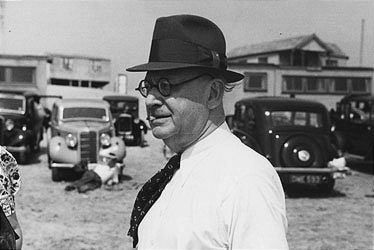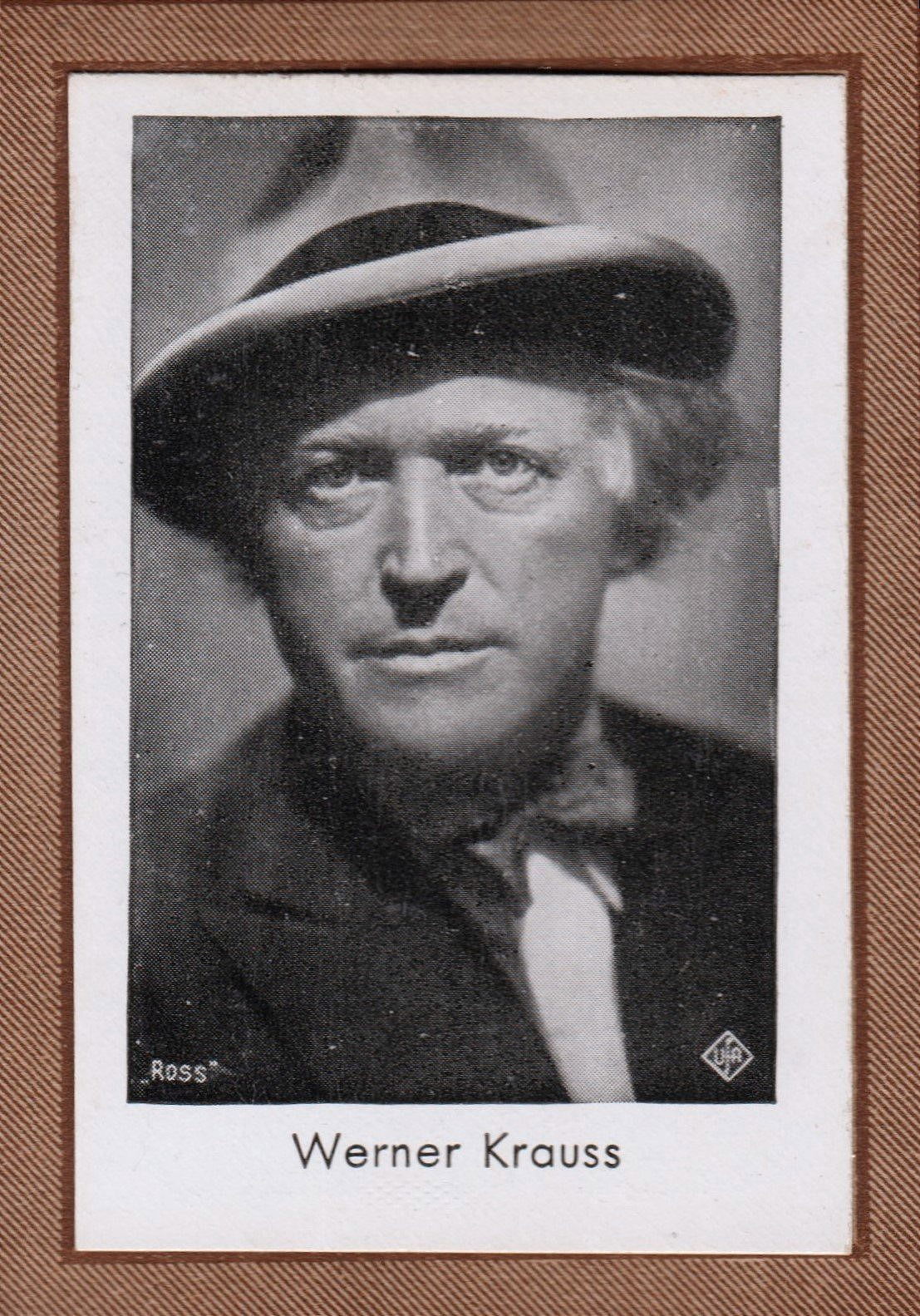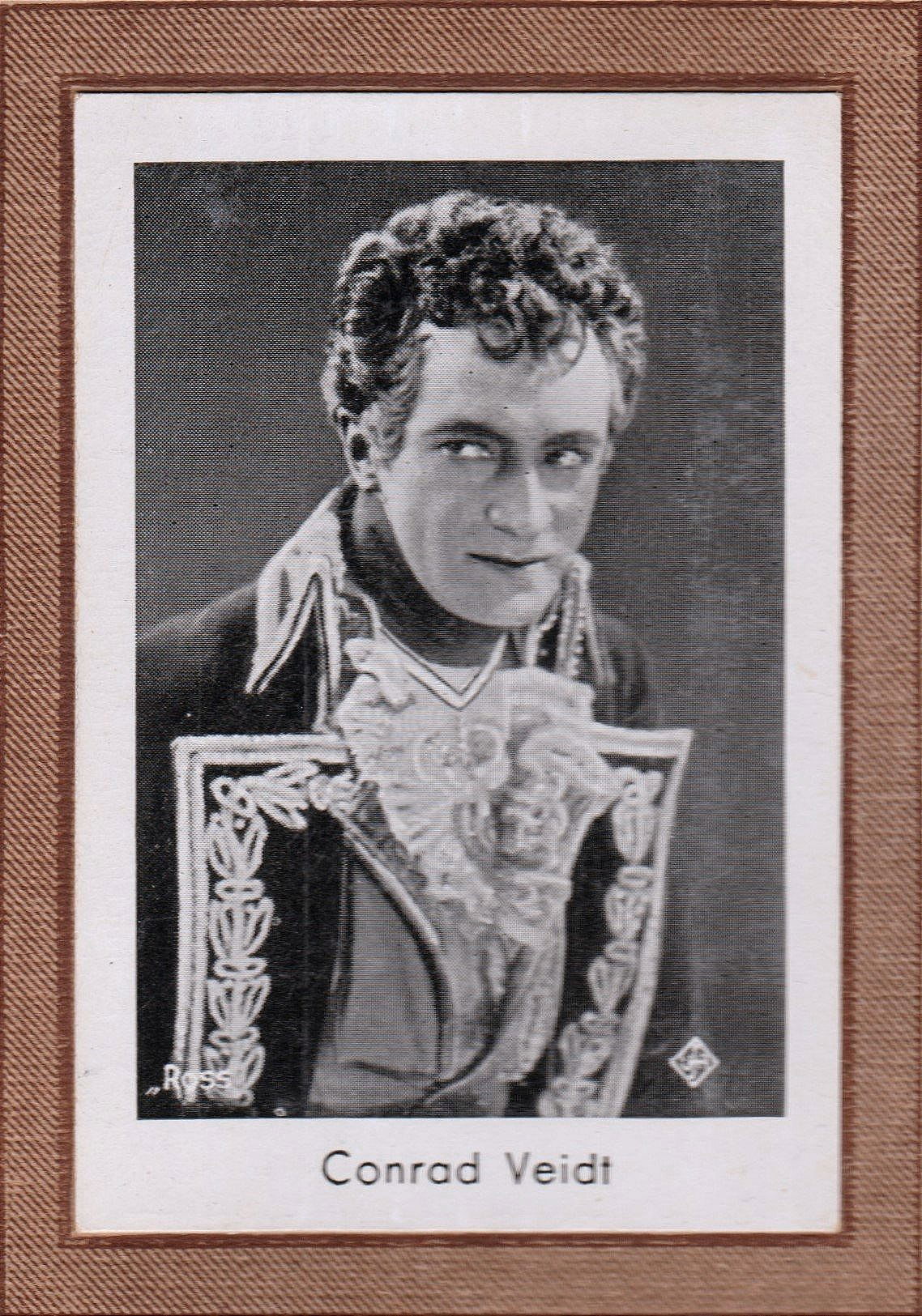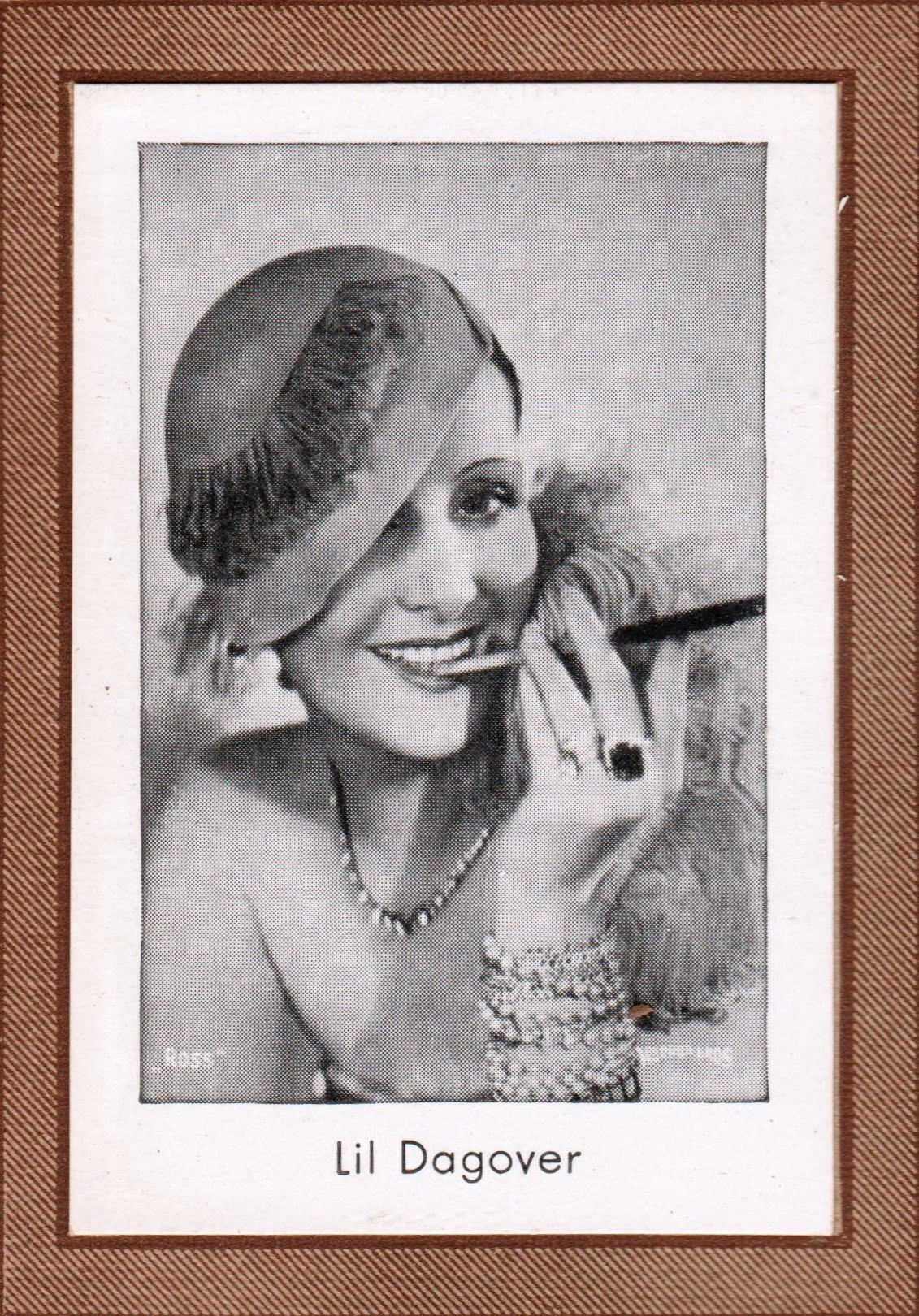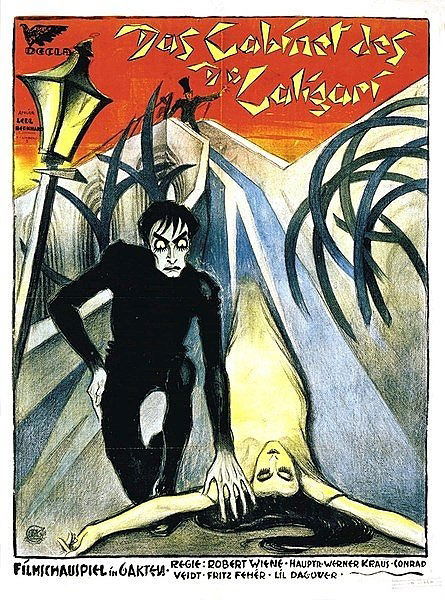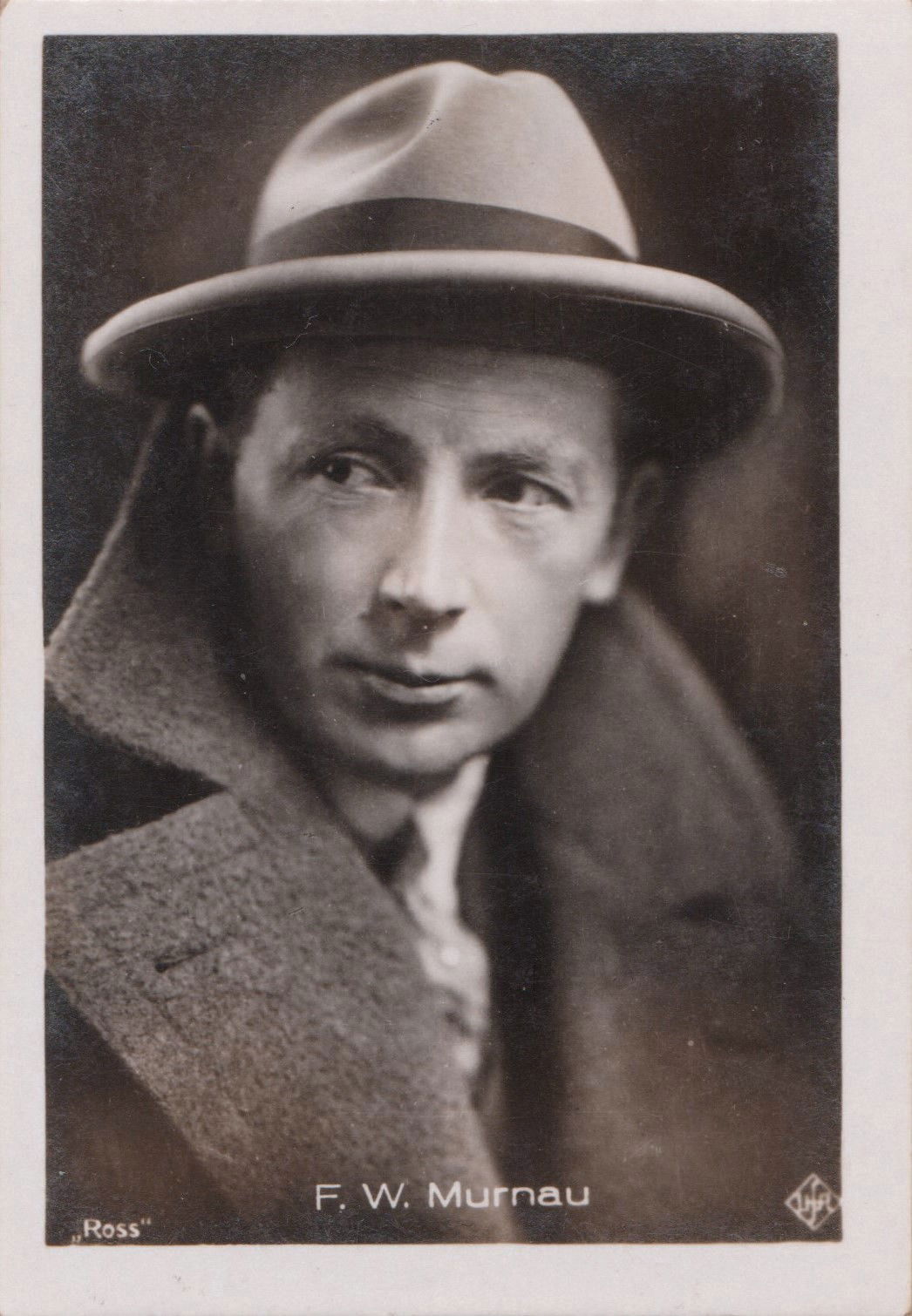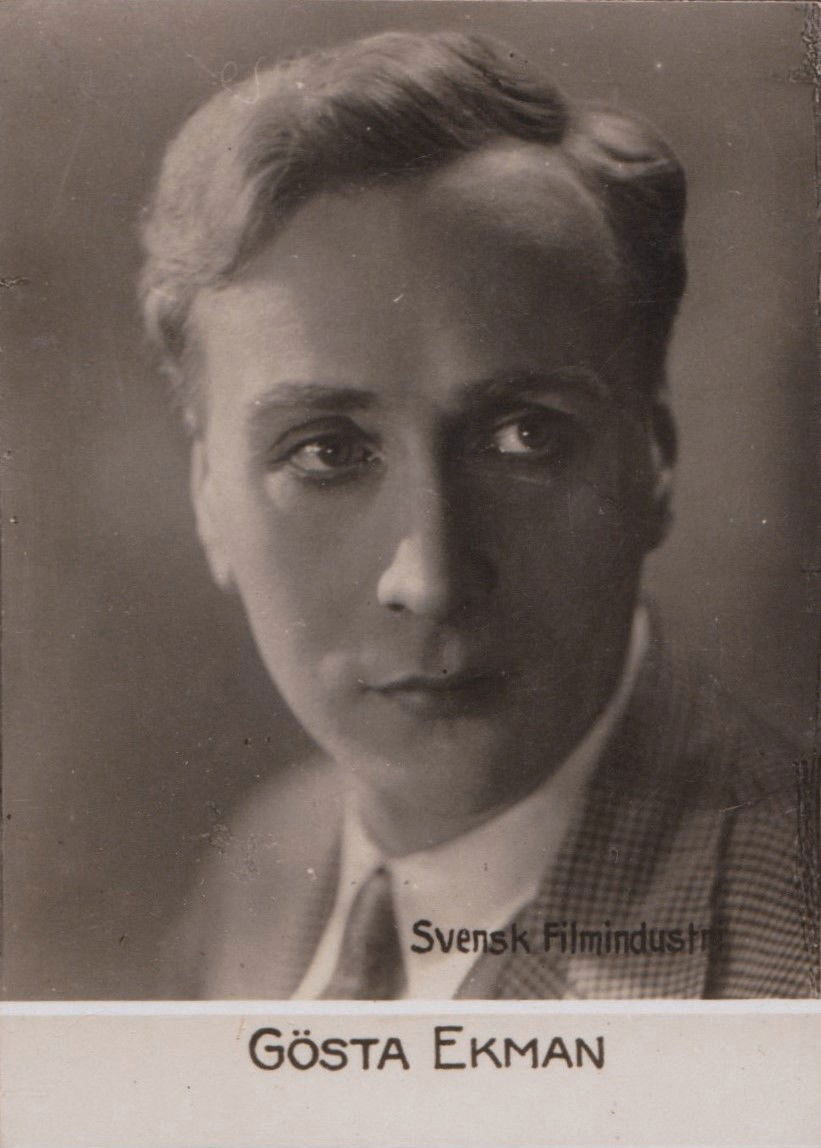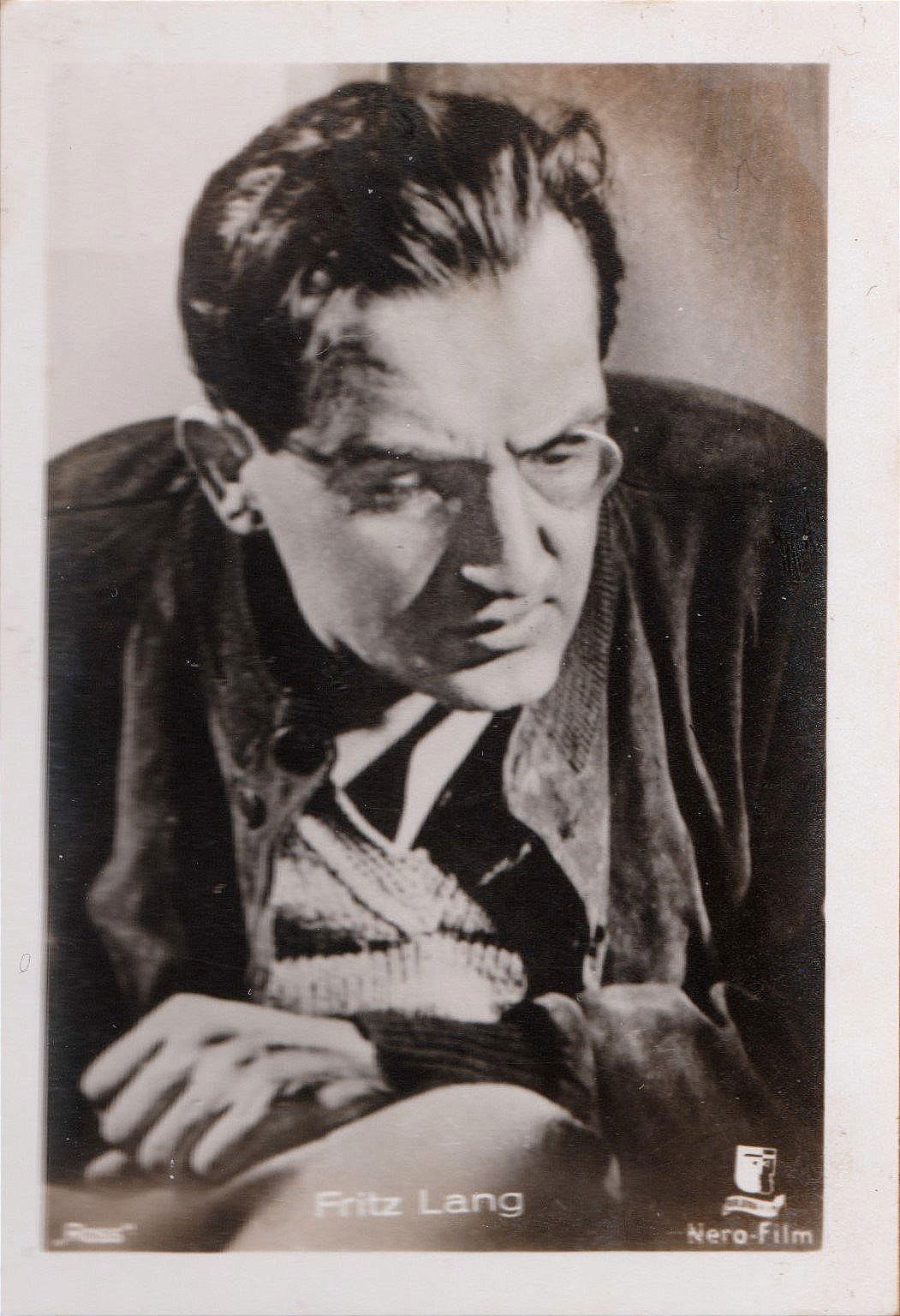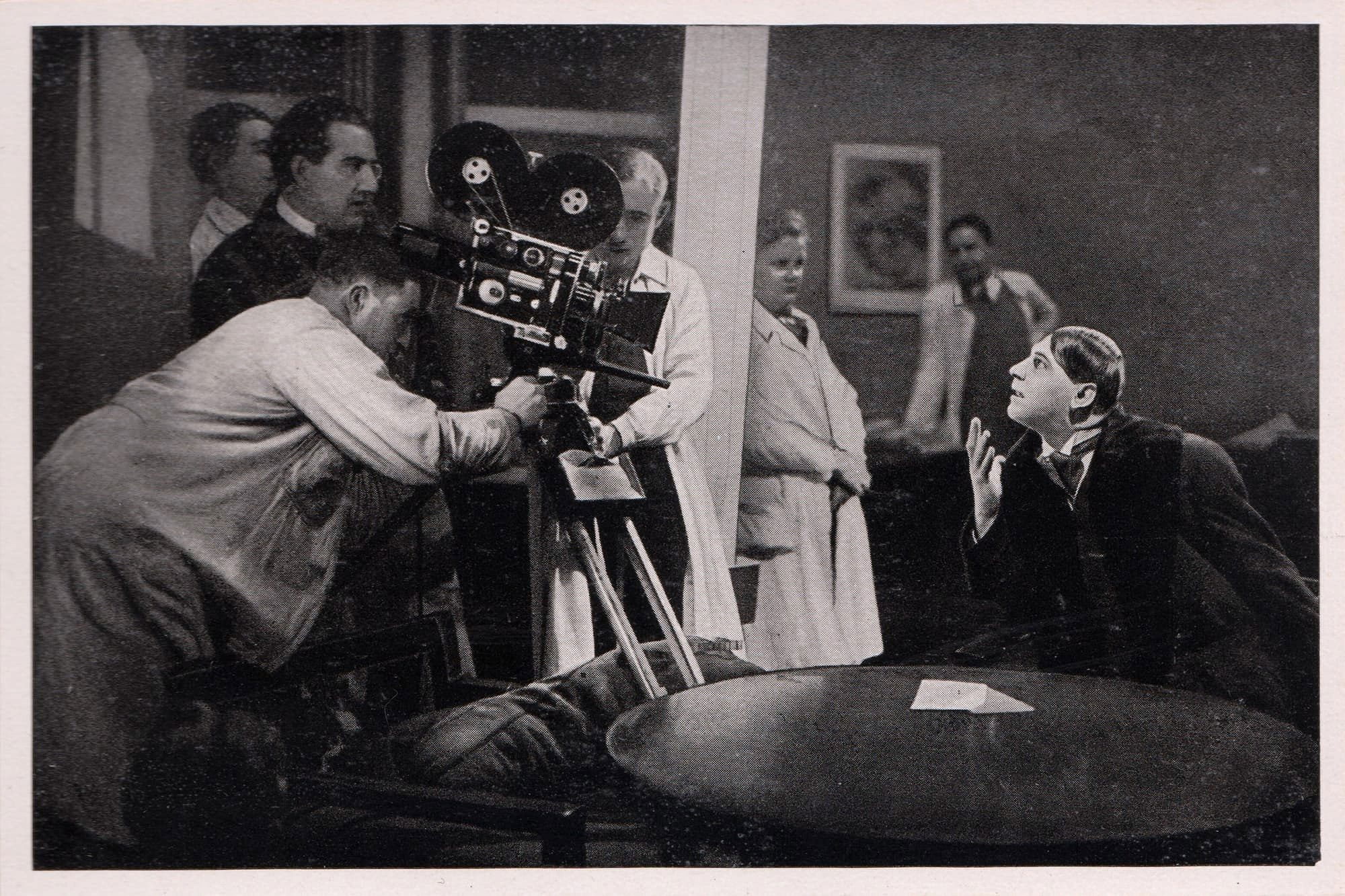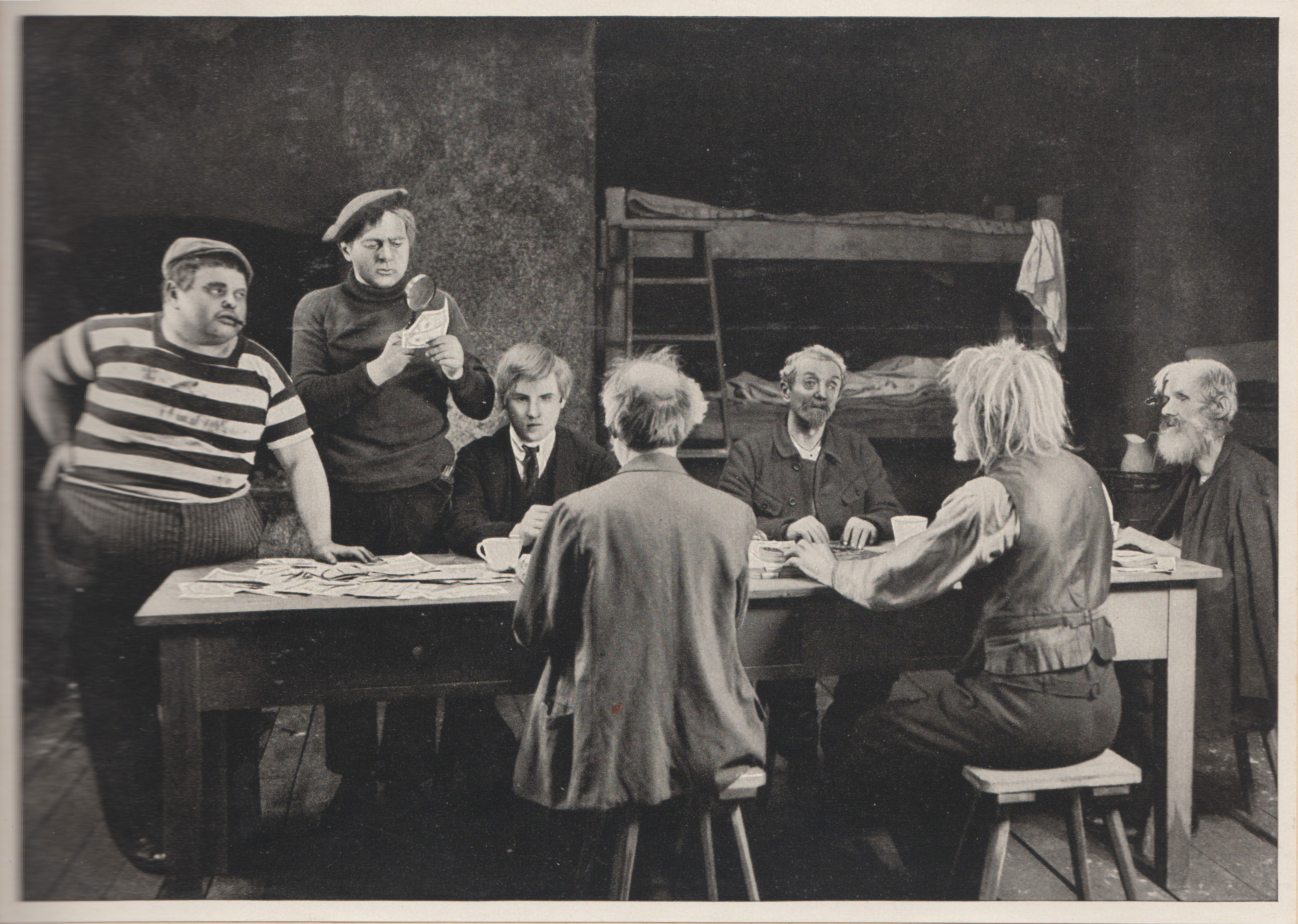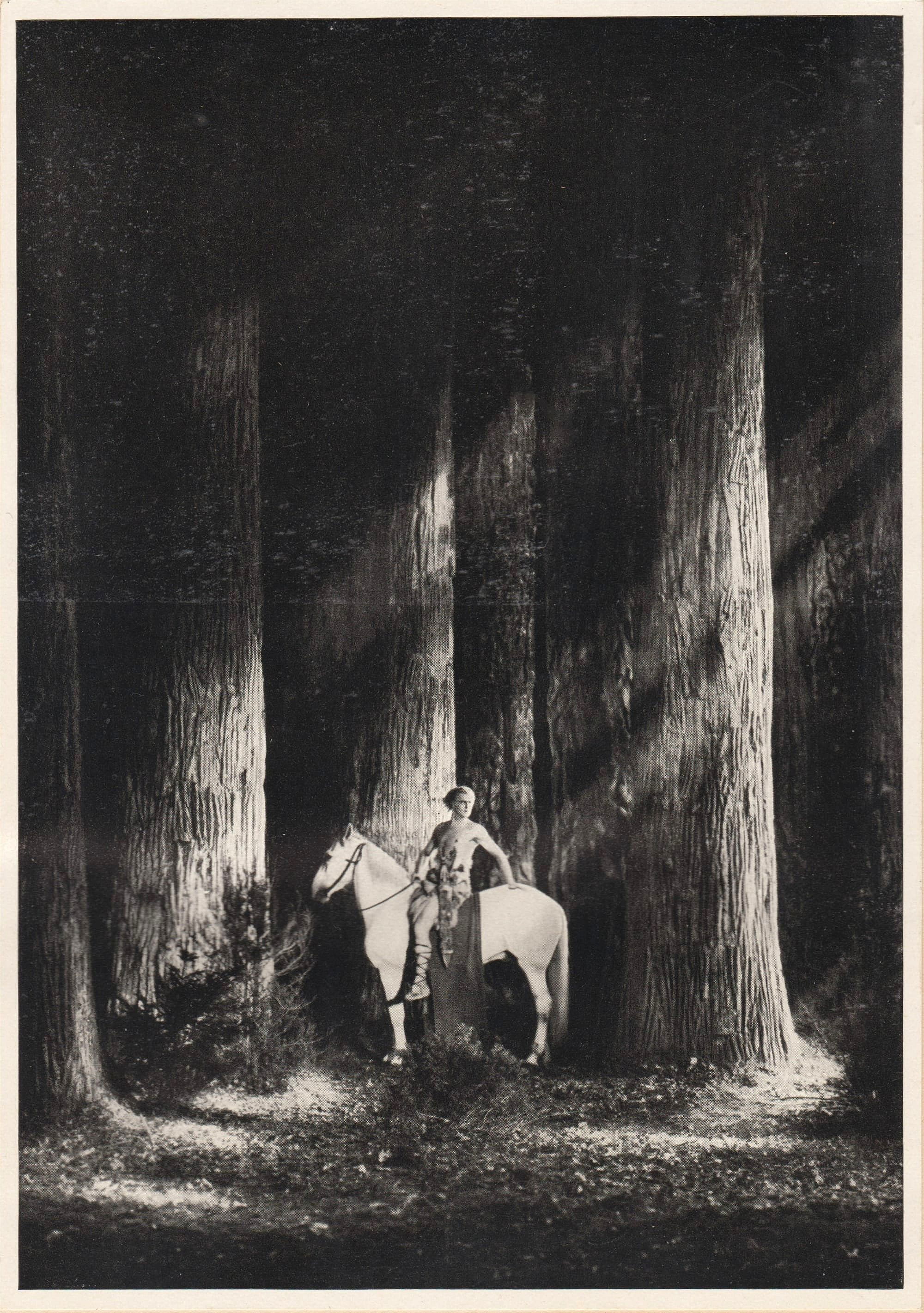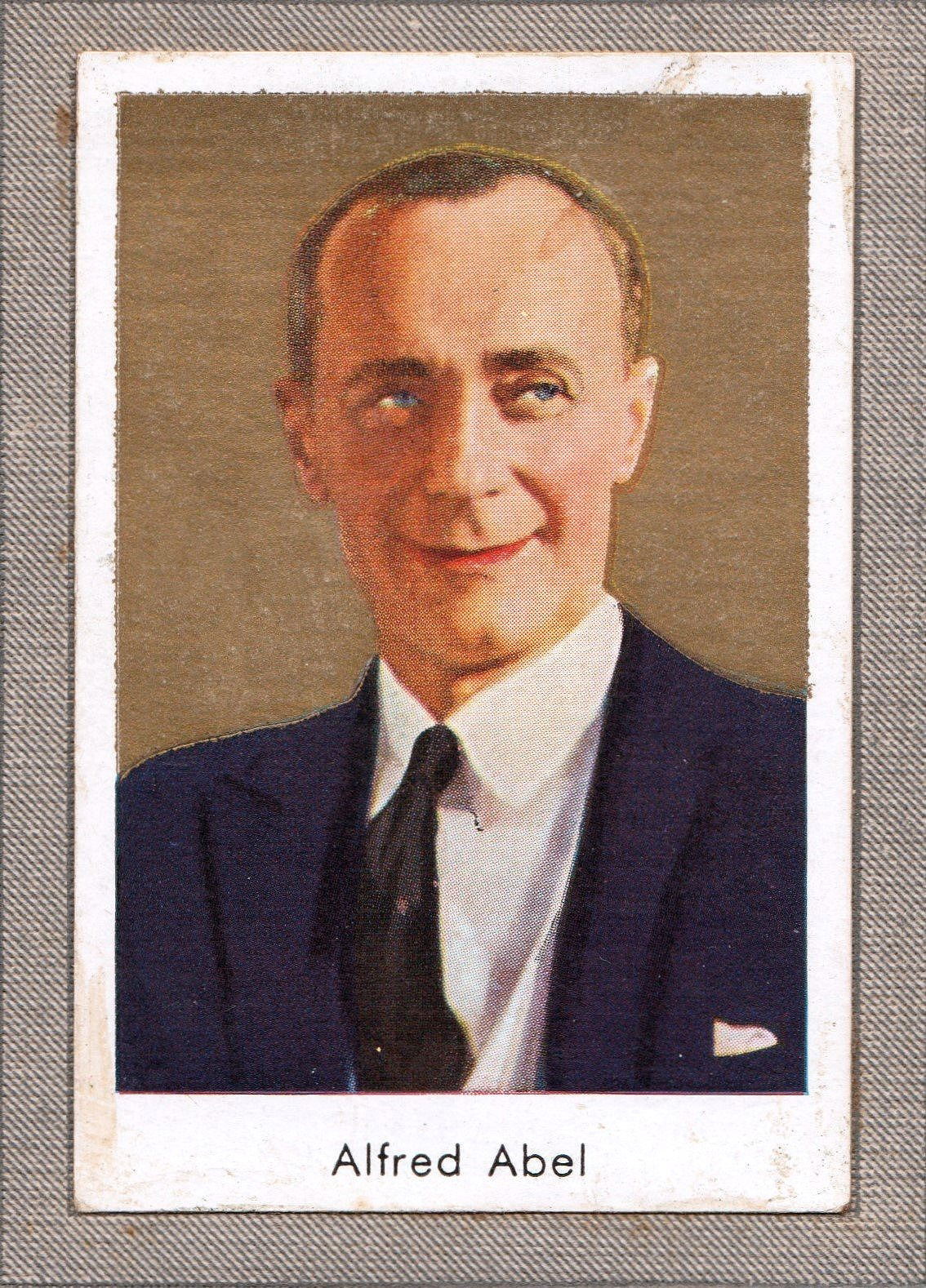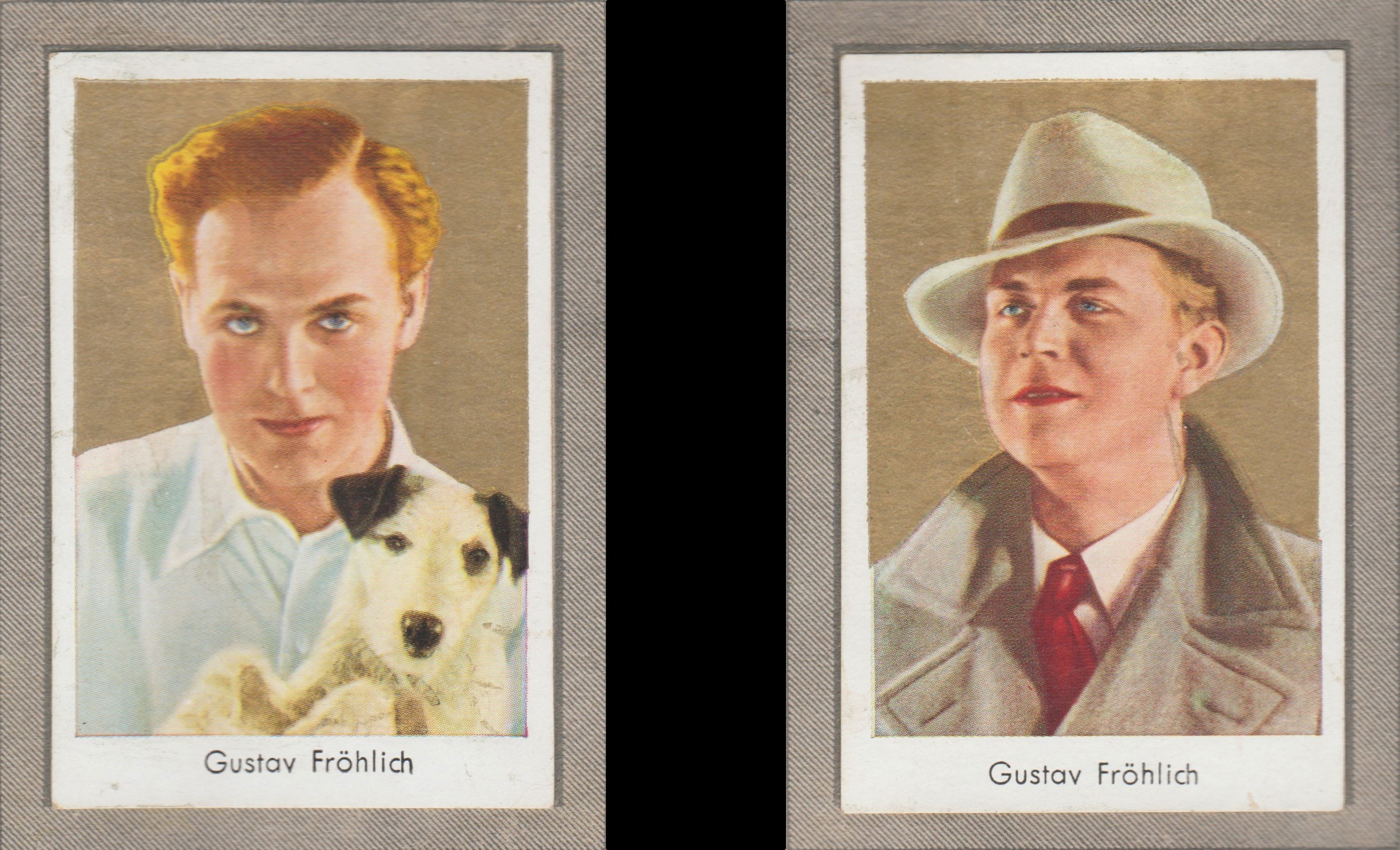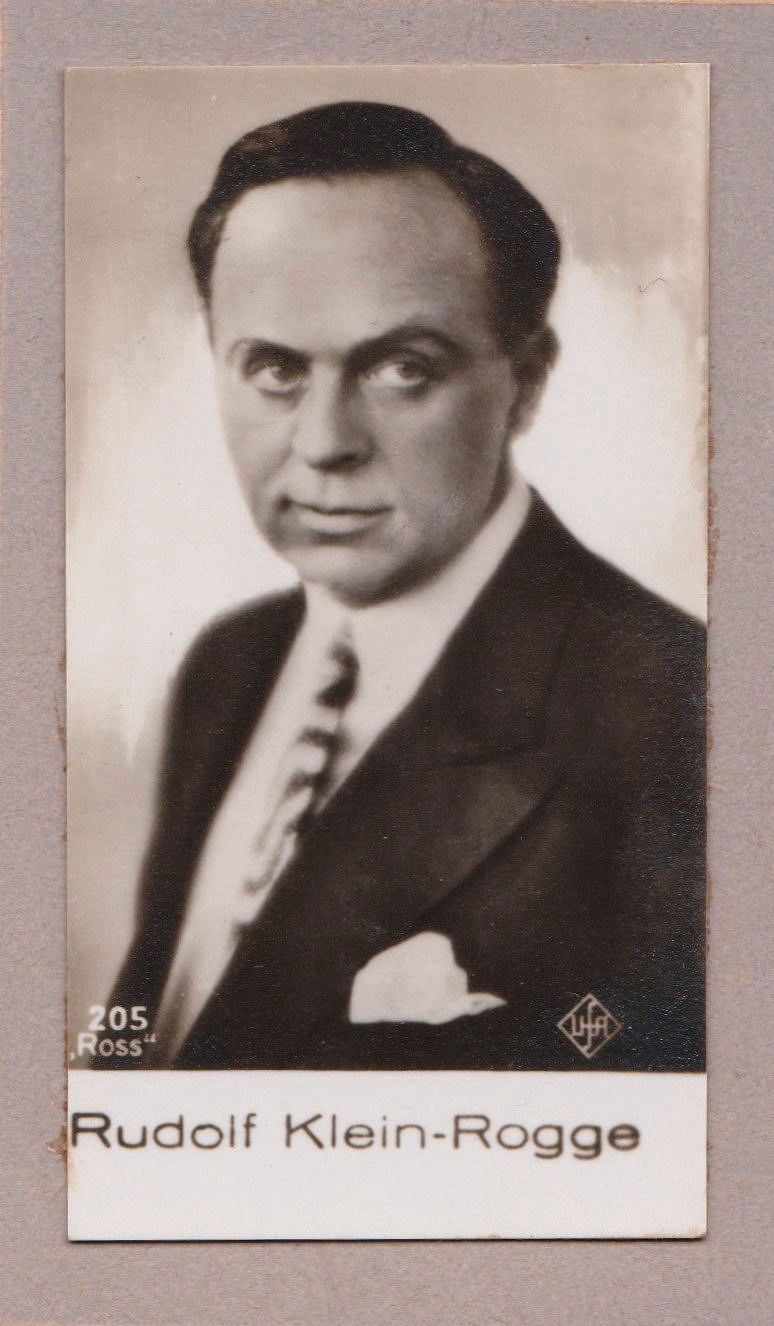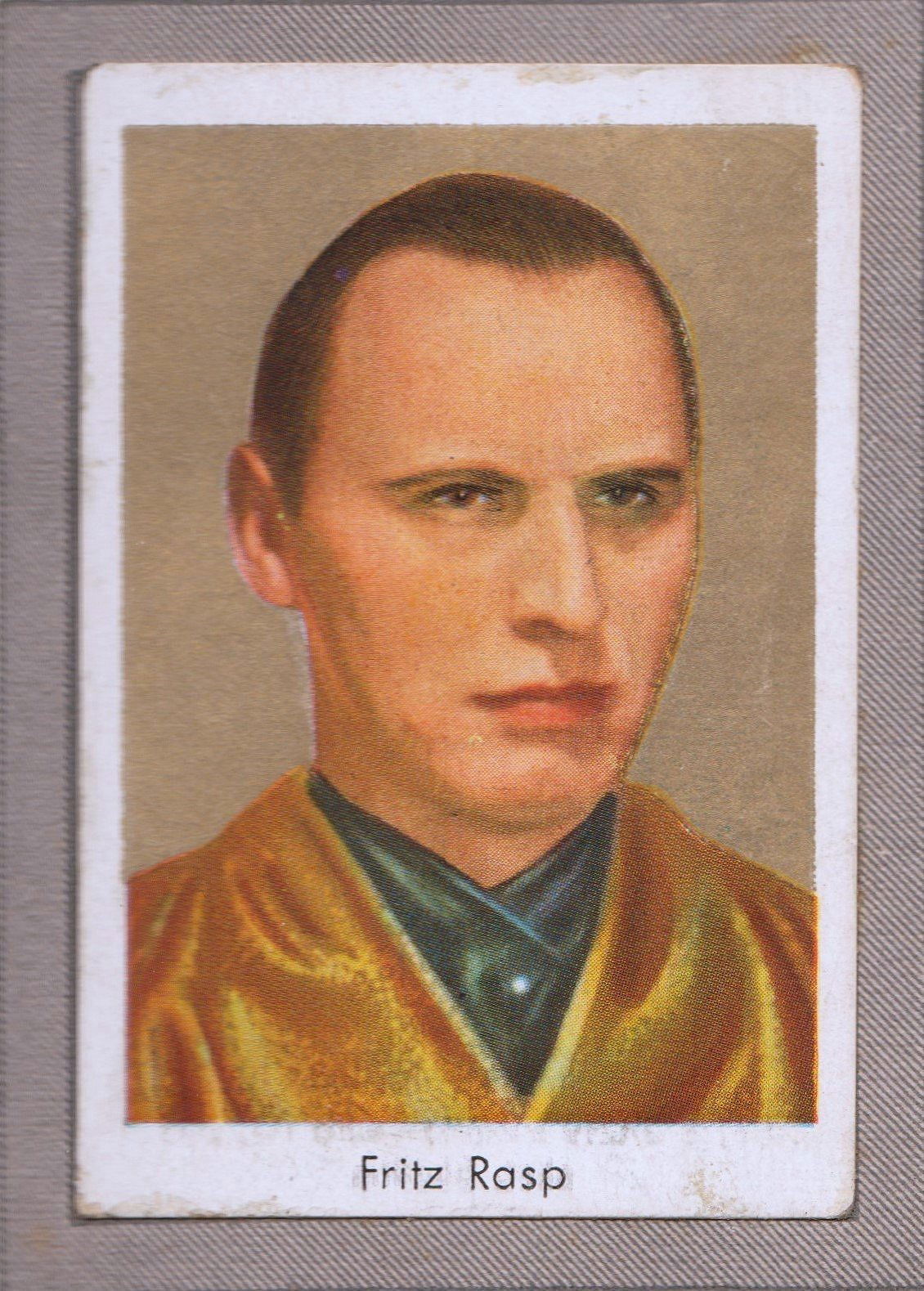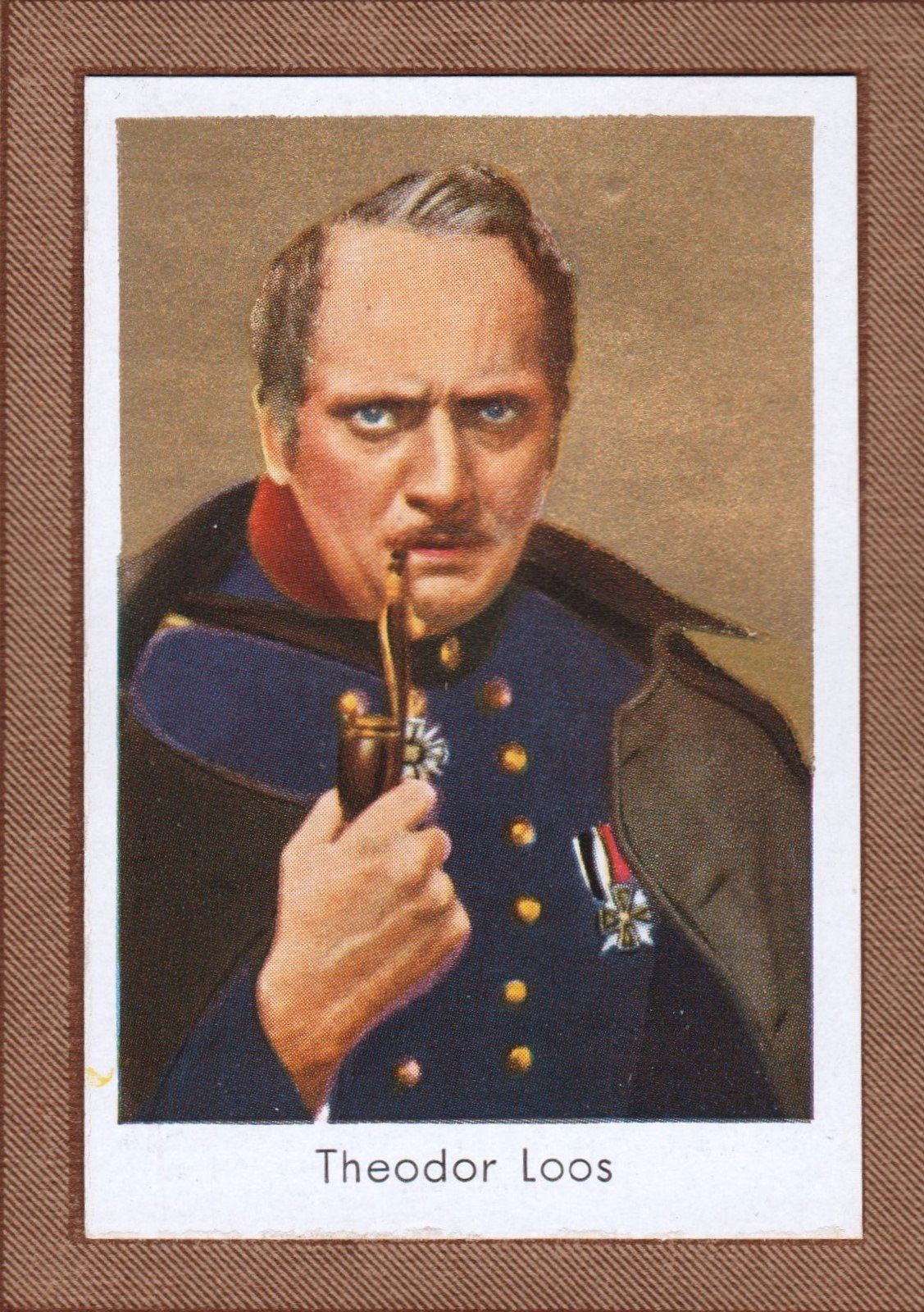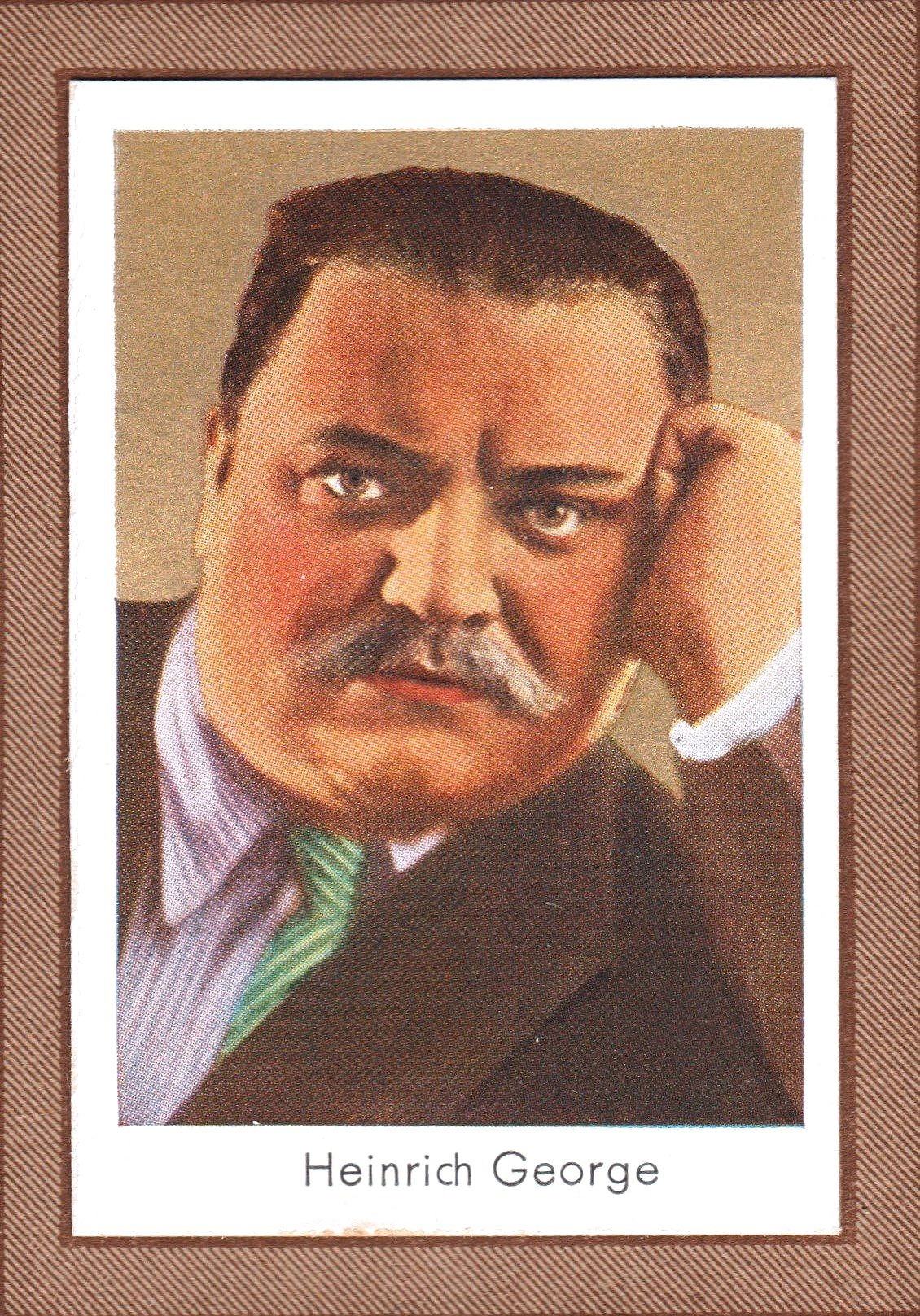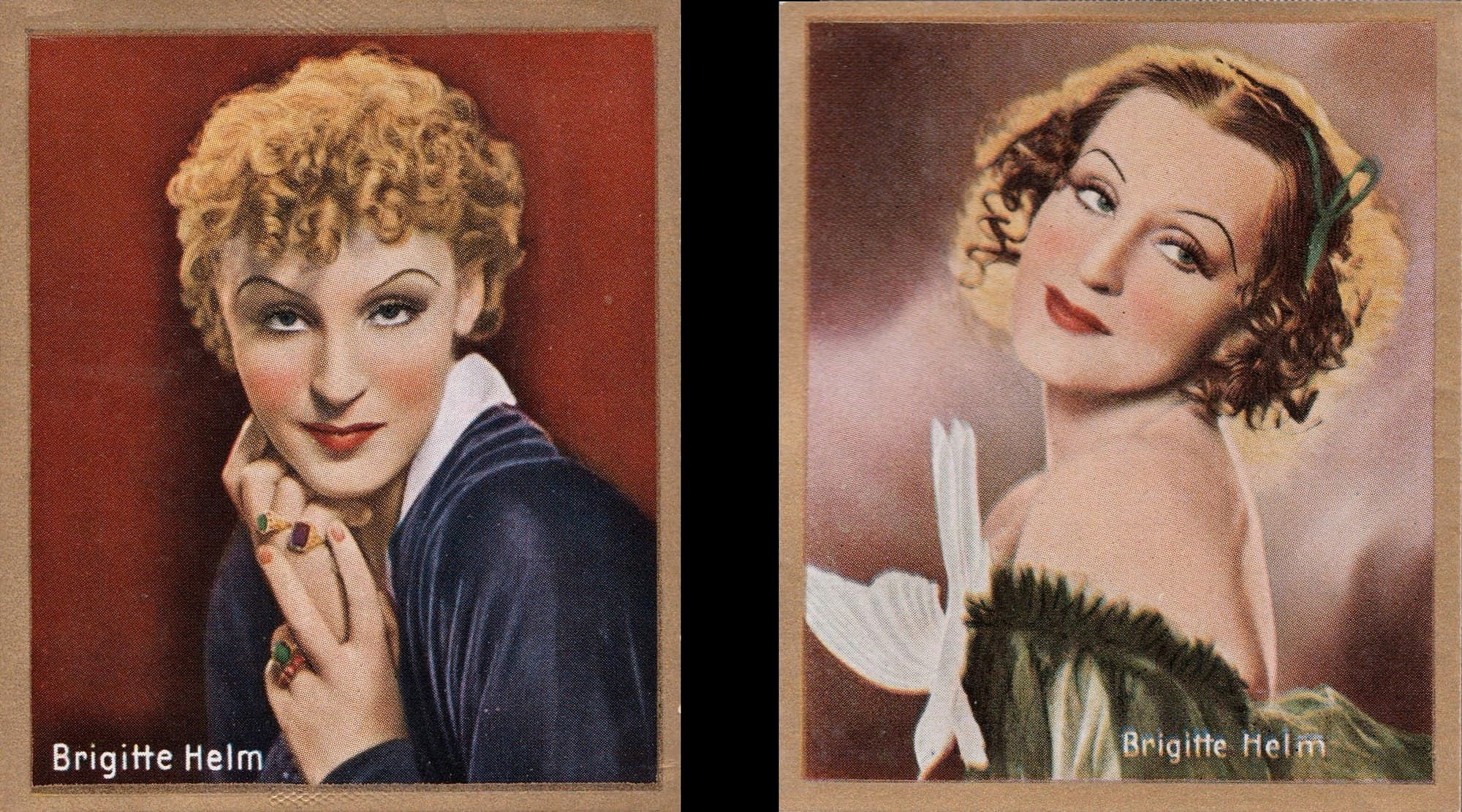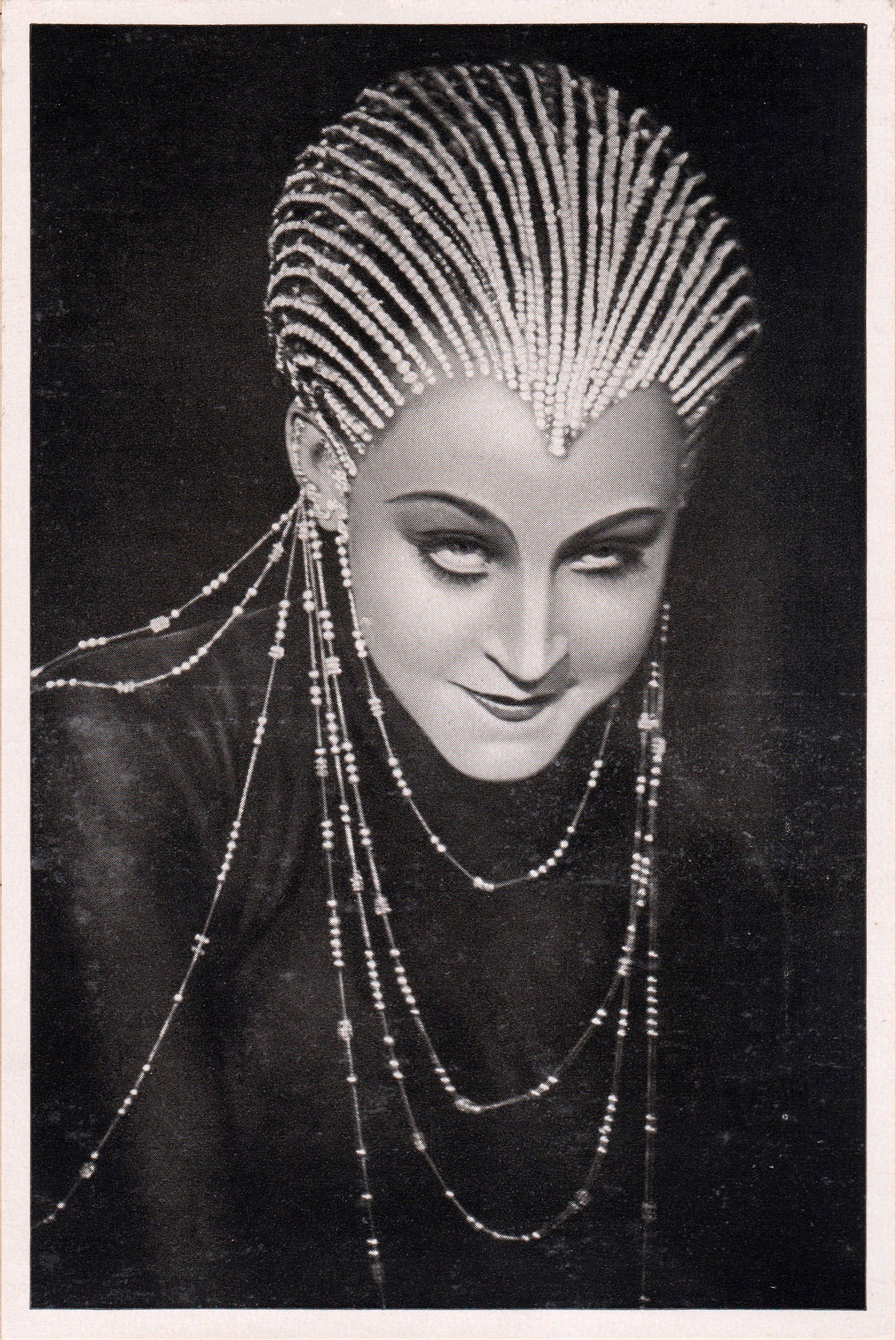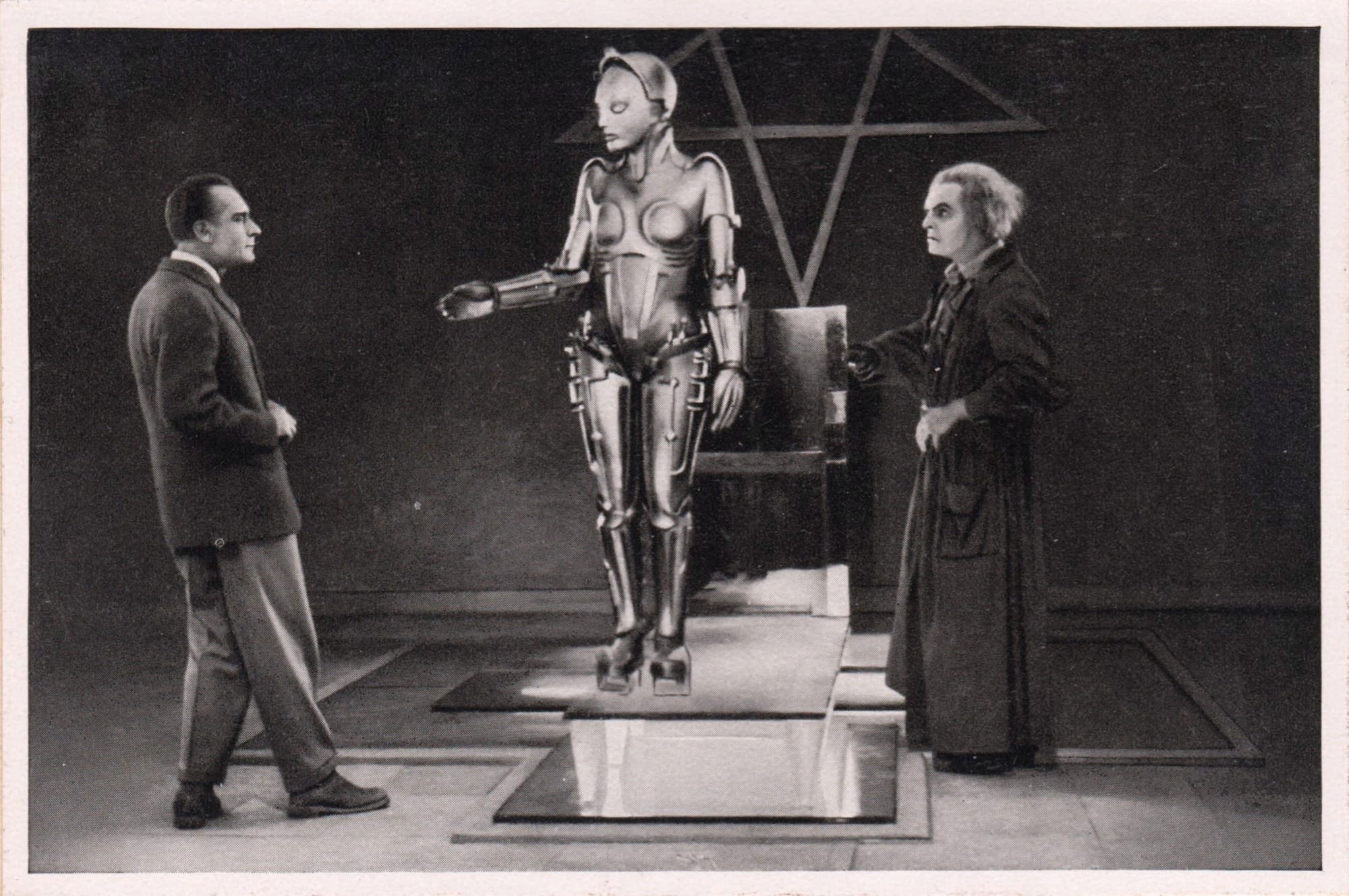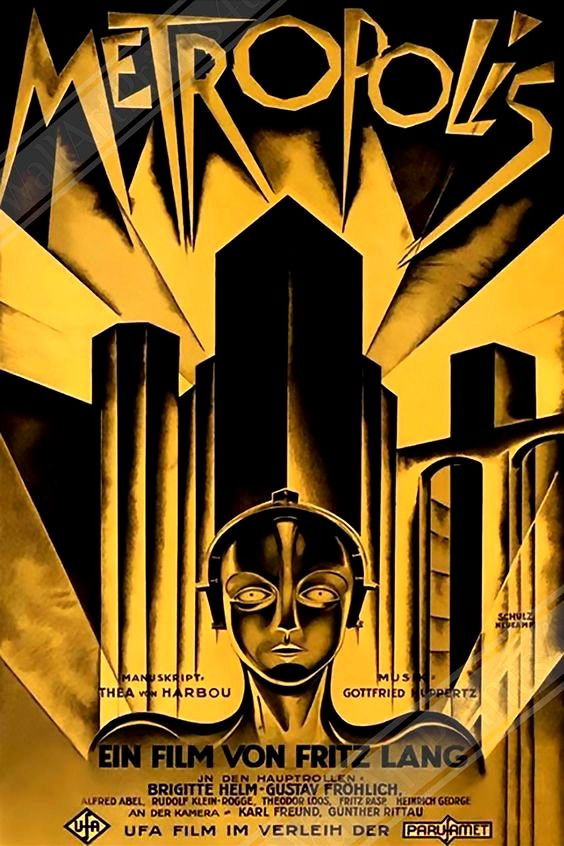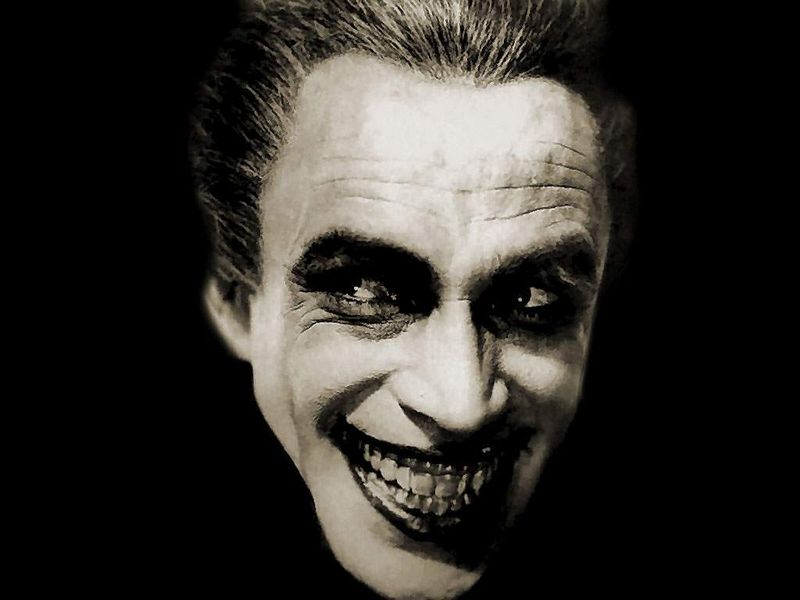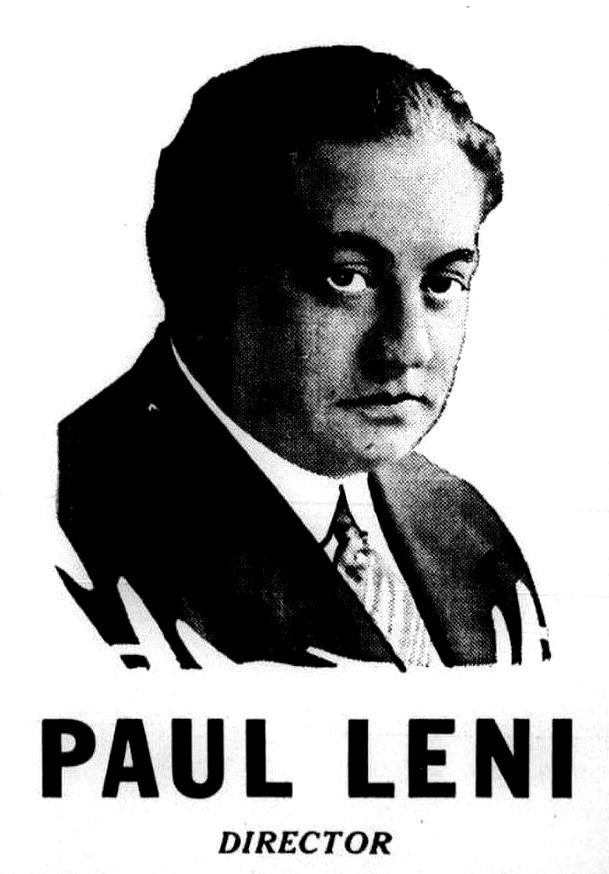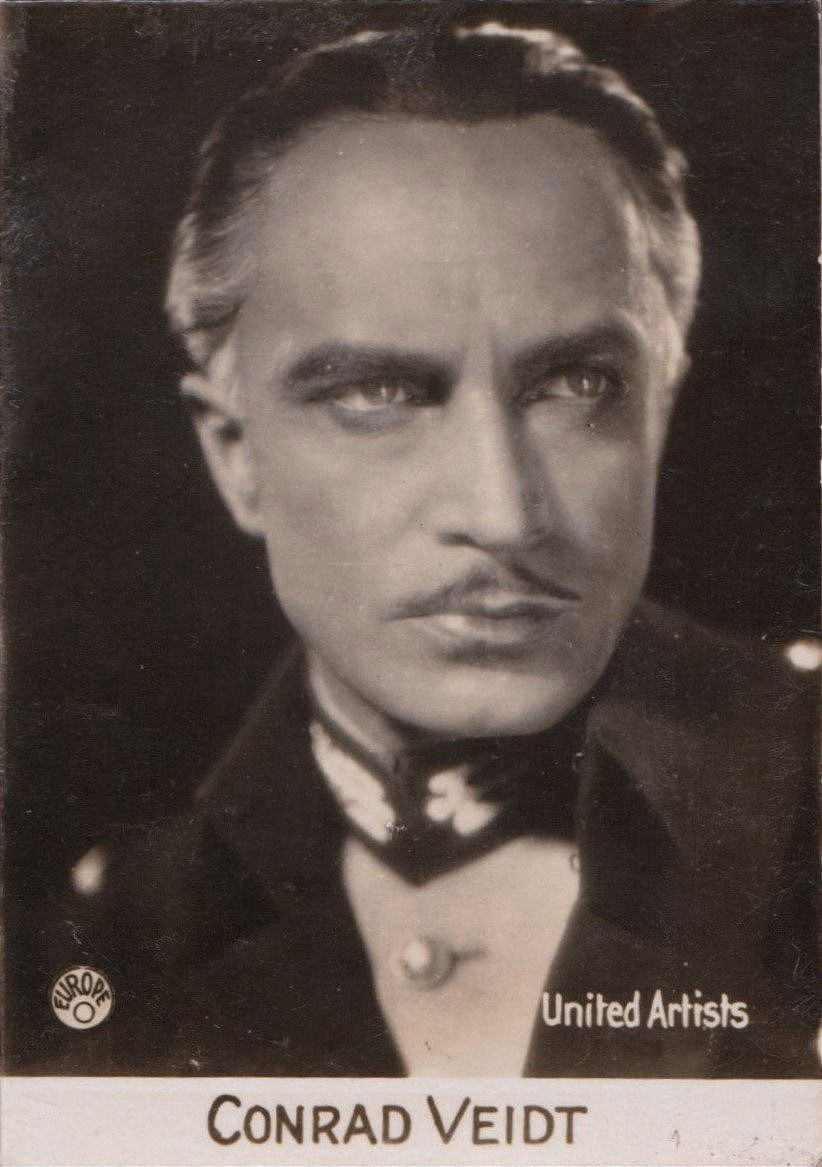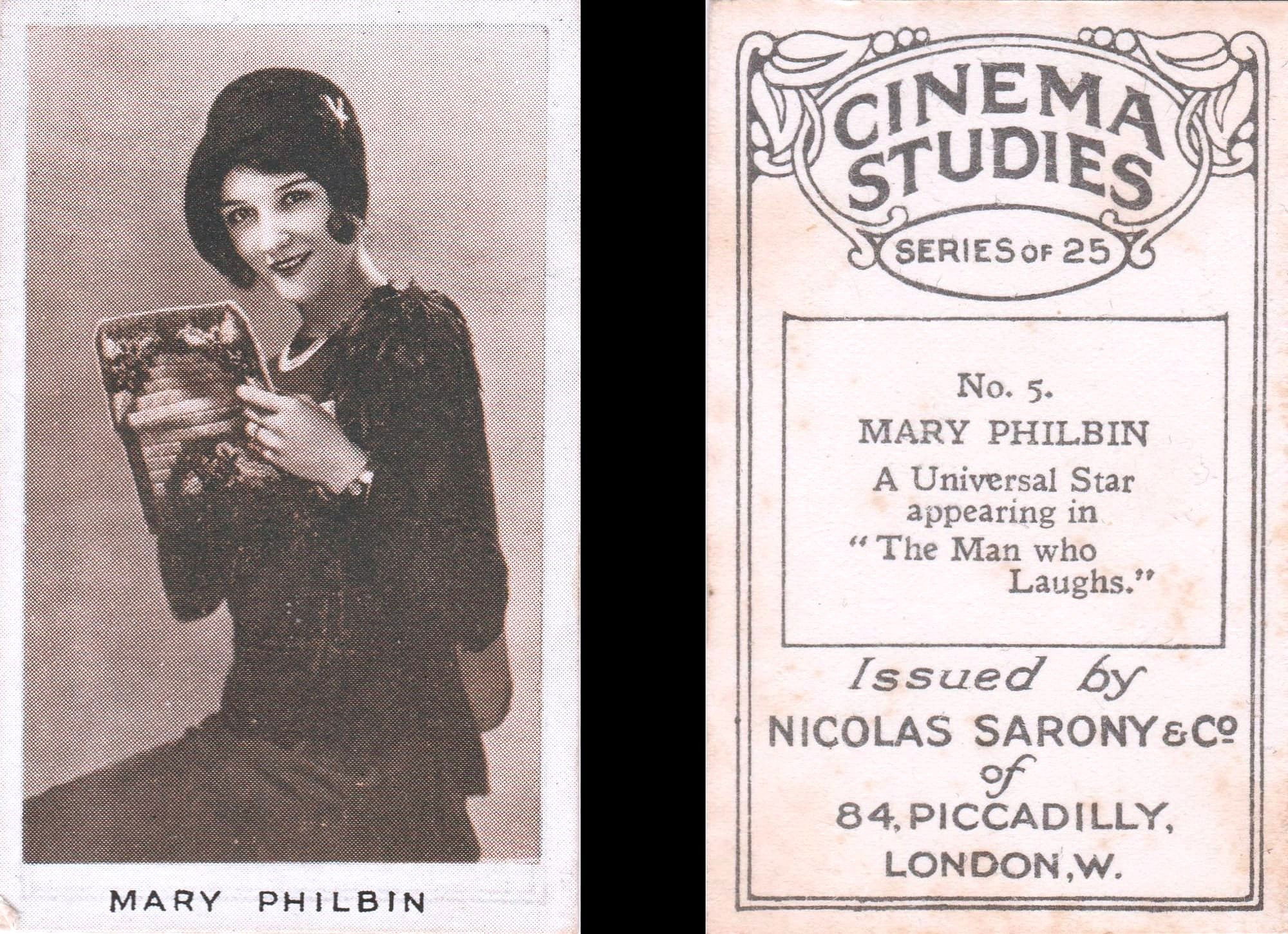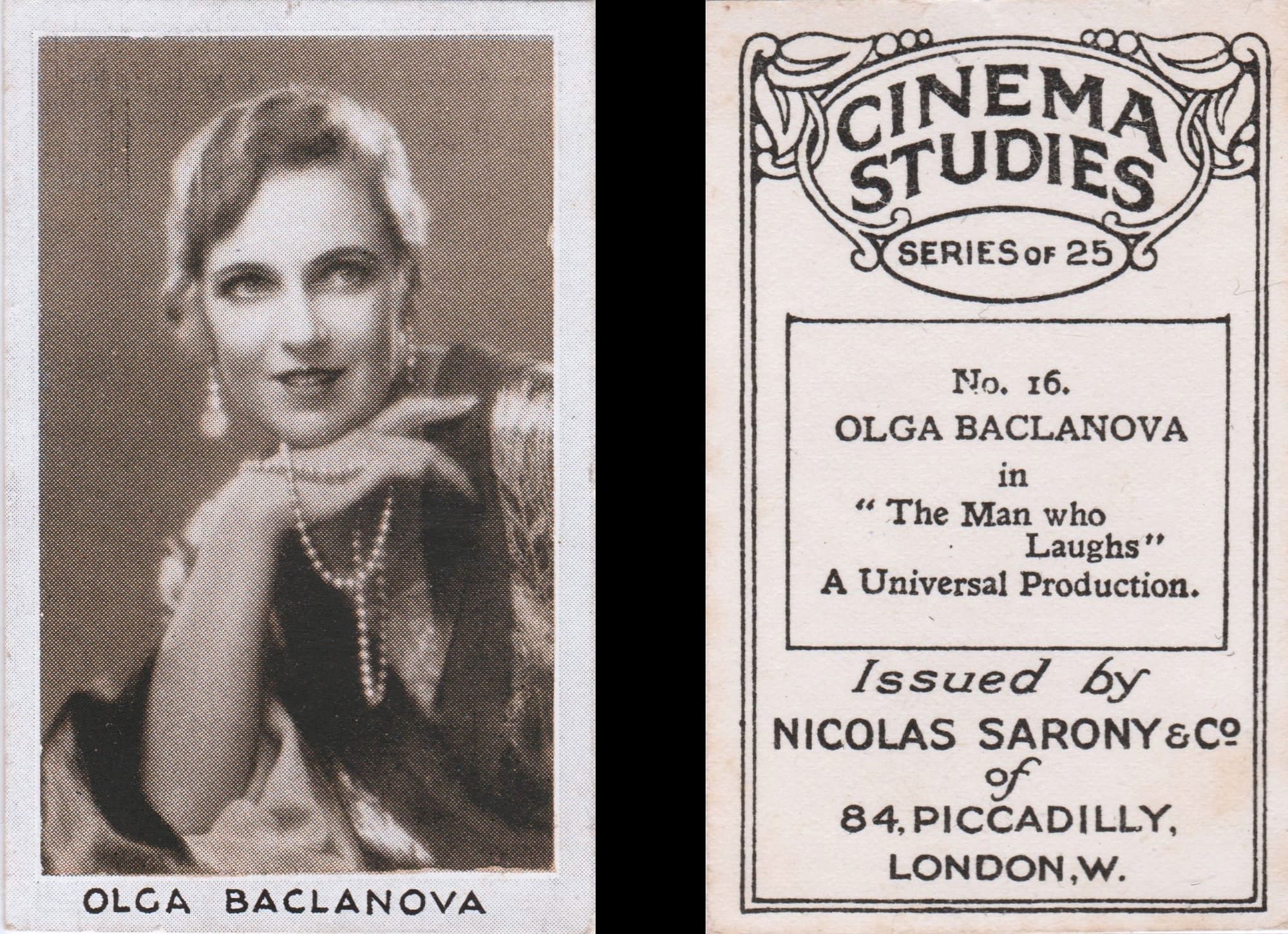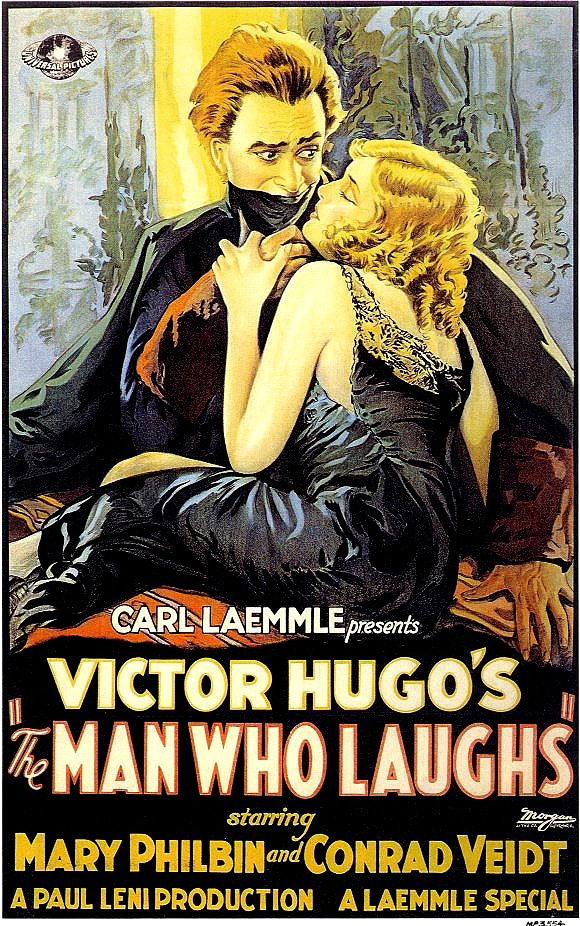GERMAN EXPRESSIONIST CINEMA
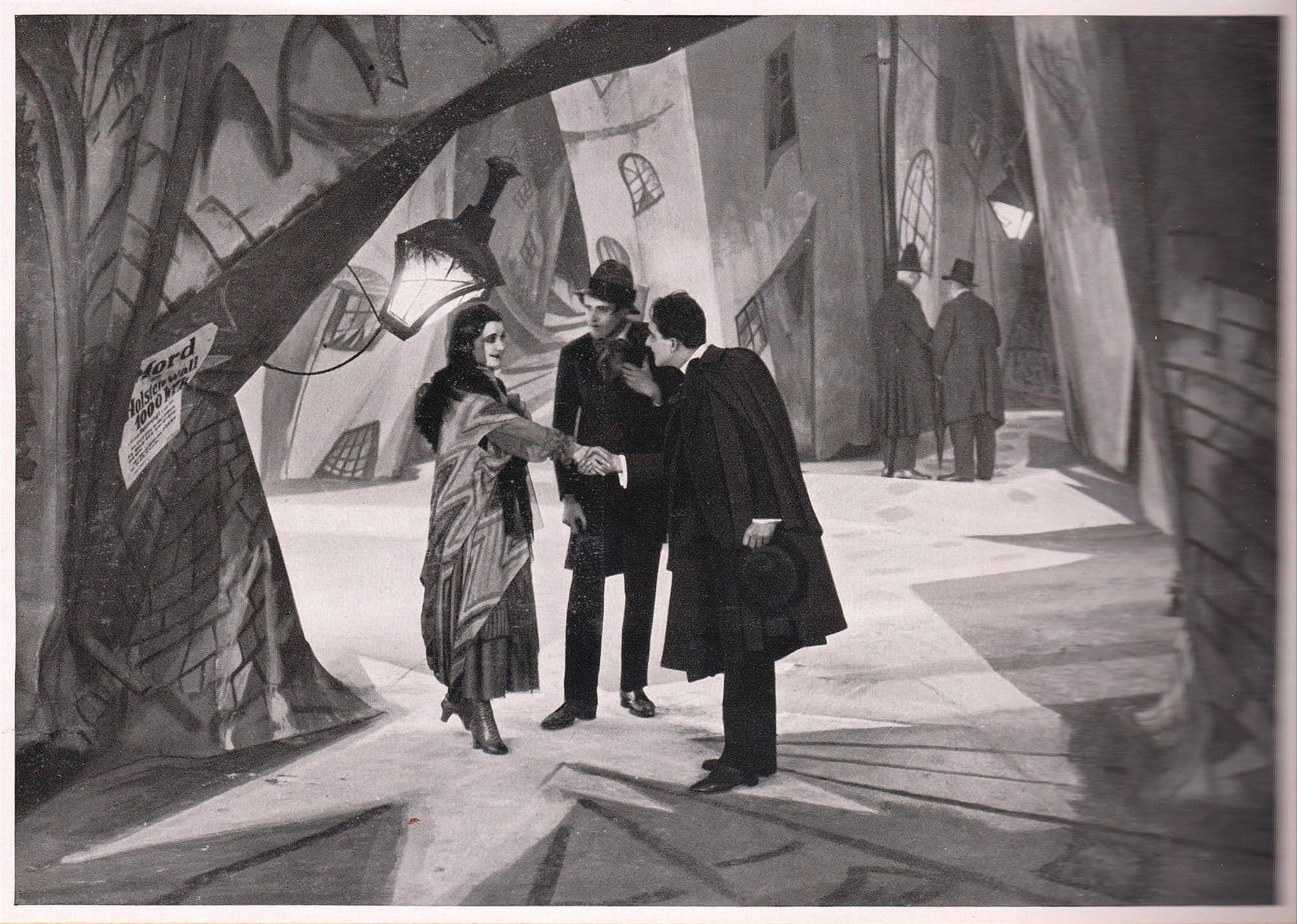
Card position 1 page 108 of the Album
"ON THE DEVELOPMENT OF GERMAN FILM ART THE SILENT FILM"
(personal collection)
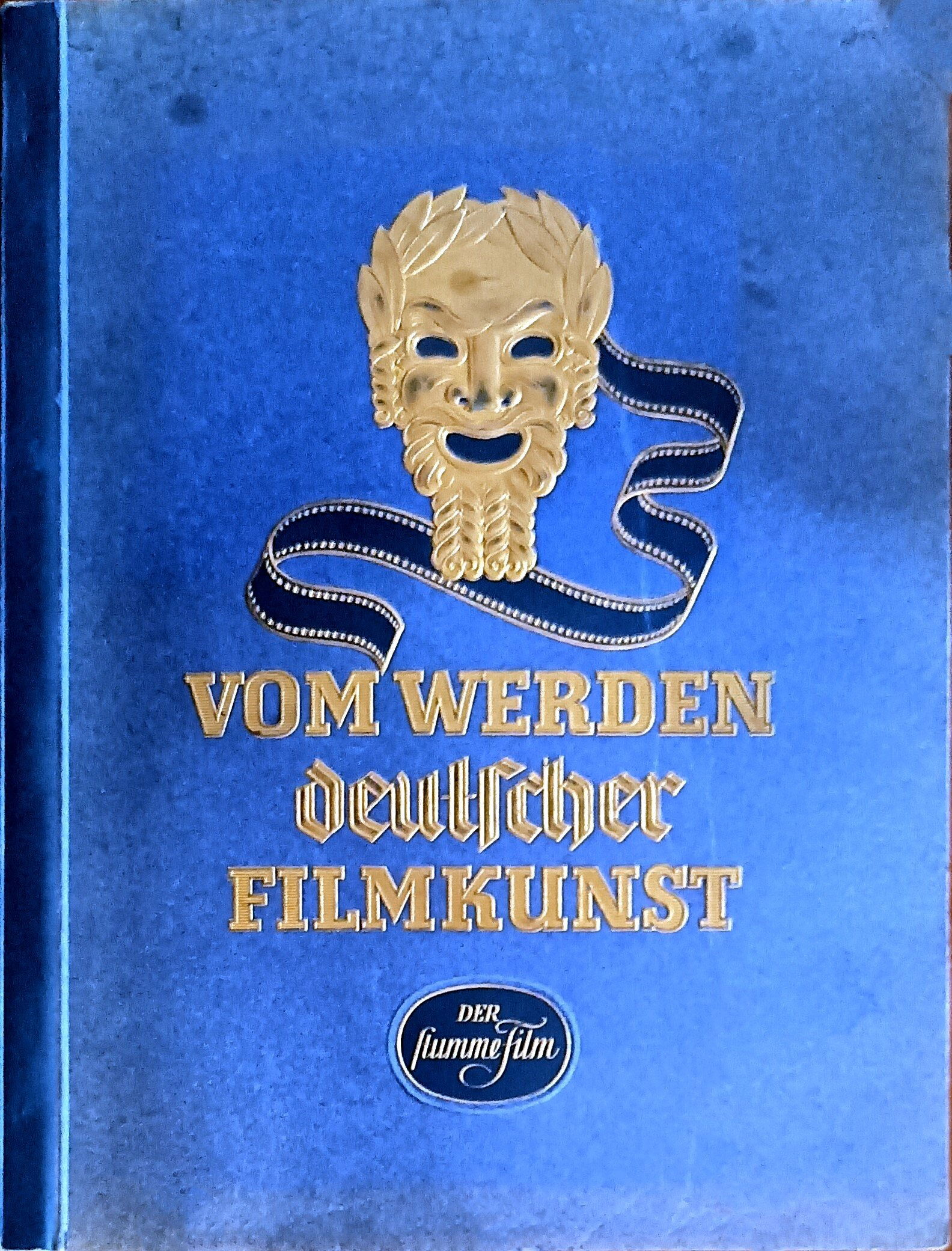
HISTORICAL PERIOD
The First World War was a traumatic and devastating event for Germany, which emerged defeated, humiliated and impoverished. Germany had to accept the harsh conditions imposed by the Treaty of Versailles, which included the loss of territories, the reduction of the army, the payment of huge war reparations and moral responsibility for the outbreak of the conflict. This situation caused a deep economic, social and political crisis, which undermined the stability and legitimacy of the Weimar Republic, born in 1919 after the abdication of Emperor Wilhelm II. The Weimar Republic faced challenges and threats from external and internal forces, such as international isolation, hyperinflation, unemployment, riots, coups, terrorism, nationalism, communism, and Nazism. The Weimar Republic was also a period of great cultural ferment and innovation, in which avant-garde artistic and intellectual movements developed, seeking to express the emotions and anxieties of modern man, upset by war and crisis. Among these movements, expressionism stood out, which manifested itself in various fields, such as painting, theater, literature and cinema. Expressionism was an artistic movement that was based on the deformation of reality, to express the subjective and emotional point of view of the artist. This artistic movement used intense and contrasting colors, broken and curved lines, geometric and abstract shapes, to create an atmosphere of tension, anguish, alienation, nightmare and opposed naturalism and realism, which it considered inadequate to represent the complexity and drama of the human condition. The movement was inspired by different sources, such as romanticism, symbolism, primitivism, surrealism, cubism, futurism, dadaism. Expressionism had a great influence on German cinema in the twenties, which produced original and innovative works, which broke with the previous cinematic tradition. German expressionist cinema was characterized by a visual and narrative style that used techniques such as chiaroscuro, deformations, tricks, unusual shots, to create unreal, symbolic and metaphorical worlds. German expressionist cinema dealt with themes such as fantasy, horror, crime, psychology, politics, religion, using characters such as vampires, monsters, criminals, heroes and victims. This reflected the historical and cultural situation of Germany at the time, expressing the fears, hopes, contradictions, utopias and dystopias of a nation in transformation. German expressionist cinema was of great importance in the history of cinema, because it demonstrated the artistic and creative potential of the cinematographic medium, influencing genres such as noir, horror, science fiction, thriller, and directors such as Alfred Hitchcock, Tim Burton, David Lynch and many others. In conclusion, it can be said that the First World War and the defeat of Germany had a transposition into art and consequently into cinema, through the expressionist movement, which created an original and innovative language and style, which expressed the emotions and anxieties of a people and an era.
THE CABINET OF DR. CALIGARI
The symbol of German expressionist cinema
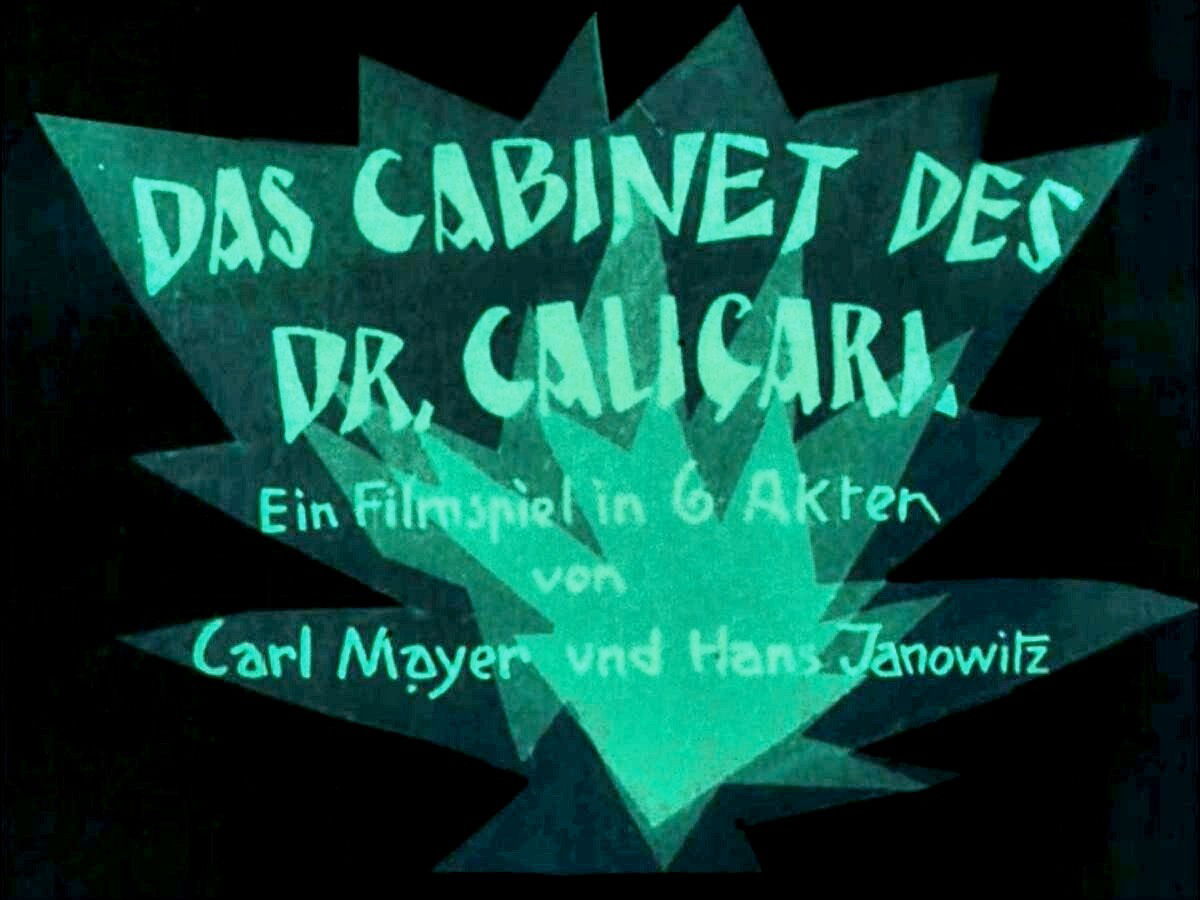
The Cabinet of Dr. Caligari is a 1920 silent film directed by Robert Wiene, considered the symbol of German expressionist cinema. The film tells the story of a mysterious hypnotist who uses a sleepwalker to commit murders, but in the end it turns out that the narrator is a patient of an asylum and that his story is the result of his madness. The film is famous for its distorted and distressing set design, which reflects the psychological state of the characters and creates a nightmarish atmosphere.
A man named Francis tells another man about his terrible experience in a small German town, where he had gone with his friend Alan. The two friends visit a fair, where they attend the show of Dr. Caligari, a mysterious hypnotist who shows the public his sleepwalker, Cesare, whom he keeps under hypnosis in a coffin. Caesar, once awakened, is able to know the past and predict the future. Alan, intrigued, asks him how long he has left to live, and Cesare replies that he will die by dawn the following day. The prediction comes true, and Alan is found dead in his bed, stabbed by an unknown assassin. Francis immediately suspects Caligari and Cesare, and decides to investigate them, with the help of Jane, his fiancée, with whom Alan was also in love. Francis discovers that Caligari uses Caesar to commit murders, taking advantage of his sleepwalking state. Caligari, in fact, is obsessed with the figure of an ancient sorcerer, also named Caligari, who in the eighteenth century used a sleepwalker to kill his victims. Francis follows Caligari to a psychiatric hospital, where he discovers that he is the director, and that he stole Cesare from one of the cells. Francis manages to unmask Caligari in front of the other doctors, who lock him up in a cell. However, the story turns out to be a fantasy of Francis, who is actually a patient at the hospital, and who imagined being the protagonist of a horrific story, identifying the people around him with the characters of his delirium. Caligari is also actually a doctor, trying to cure Francis of his madness.
Dr. Caligari's cabinet was received by critics of the time with mixed reactions. Some have praised it as an innovative and revolutionary masterpiece, which opened up new expressive possibilities for cinema and reflected the spirit of modernity and the avant-garde. Others criticized it as a confused, incoherent, irrational and depressing film, which betrayed the social and pedagogical function of cinema and expressed a pessimistic and nihilistic vision of reality. Among the film's supporters, we can mention the names of important intellectuals and artists such as Bertolt Brecht, Walter Benjamin, Siegfried Kracauer, Carl Mayer, Fritz Lang and Luis Buñuel. Among the detractors, however, we can mention the negative opinions of some film critics such as Herbert Ihering, Rudolf Kurtz and Béla Balázs. The film also aroused political controversy, as it was interpreted allegorically as a denunciation of totalitarianism and the manipulation of the masses, or on the contrary as a justification of violence and authoritarian order. The film was also a great success with audiences, both in Germany and abroad, becoming one of the most viewed and discussed films of the twenties. The film has been recognized as a classic of world cinema and has influenced generations of directors and filmmakers. The film has been restored and re-edited several times, and has received numerous tributes and references in other artistic works. The film is considered today one of the masterpieces of German expressionist cinema and silent cinema in general.
THE DIRECTOR
Robert Wiene
Robert Wiene was a German film director, screenwriter and producer, born in Wrocław in 1873 and died in Paris in 1938. He is considered one of the greatest and most influential directors of German expressionist cinema, an artistic movement that used unusual sets, lights and camera angles to create distressing and surreal atmospheres. His best-known film is The Cabinet of Dr. Caligari, from 1920, considered the masterpiece of the genre and a milestone in the history of cinema. The film is based on a screenplay written by two soldiers who were veterans of World War I and had a great impact on audiences and critics alike. Robert Wiene also directed other important films, such as Genuine, Raskolnikow, I.N.R.I. and The Hands of the Other, but none achieved the same success as Caligari. With the advent of sound cinema, Wiene had difficulty adapting to the new technology and the new market. In addition, being of Jewish origin, he had to leave Nazi Germany and take refuge first in Budapest, then in London and finally in Paris. Here he tried to make the sound remake of The Cabinet of Dr. Caligari, together with Jean Cocteau, but the project did not materialize. Wiene died of cancer in Paris in 1938, ten days before finishing his last film, The Ultimatum, which was completed by Robert Siodmak.
THE CAST:
WERNER KRAUSS
Card Pag. 14 JOSETTI FILM ALBUM N°2
(personal collection)
Werner Krauss was a famous German actor, who starred in many films of German expressionist cinema, such as The Cabinet of Dr. Caligari, Destiny and Autumn Roses. She was also one of Adolf Hitler's favorite actresses and one decorated with the War Merit Cross. Here is a brief presentation of his life and career:Werner Krauss was born in 1884 in Gestungshausen, Bavaria, where his grandfather was a Protestant pastor. He spent his childhood in Wrocław and then attended a school for teacher training. He abandoned his studies to devote himself to the theater and made his debut in 1903 in Guben. Although he never studied acting, he established himself as a talented actor and worked in various German cities. In 1913 he was hired by Max Reinhardt at the Deutsches Theater in Berlin, where he played minor and then major roles in works by Shakespeare and Goethe. In 1916 he began his film career, which made him famous all over the world. His most famous role was that of Dr. Caligari in the 1920 film of the same name, considered a masterpiece of expressionist cinema. Krauss also played other diabolical and disturbing characters, such as the vampire Nosferatu, the criminal Mabuse, and the false prophet Tartuffe. He also worked in France and Sweden, where he participated in the film adaptation of The Count of Monte Cristo.In 1934 Krauss was appointed State Actor by the Nazi regime, which appreciated his artistic talents and often invited him to official and private events. Krauss did not join the Nazi Party, but neither did he openly criticize it. He participated in propaganda films, such as Süss the Jew, where he played six different roles, including that of the Duke of Württemberg. He received the War Merit Cross for his commitment to entertaining the troops. His name appeared in the list of artists considered fundamental to Nazi culture, drawn up by Hitler and Goebbels in 1944.After the end of the Second World War, Krauss resumed his career, alternating cinema with theater and television. Among her best-known films of this period, there are Autumn Roses, The Diary of Anne Frank and The Castle. In 1954 he received the Filmband in Gold for his contribution to German cinema and the prestigious Iffland-Ring, a ring that is awarded to the best German-speaking actor. He died in 1959 in Vienna, at the age of 75.
CONRAD VEIDT
Card Pag. 18 JOSETTI FILM ALBUM N°2
(personal collection)
Conrad Veidt was born in 1893 in Berlin, to a family of Jewish origin. From a young age he showed a passion for theater and acting, and enrolled in the school of Max Reinhardt, one of the most important theater directors of the time. He made his stage debut in 1914, and in the same year began his film career, which led him to work with major German directors, such as Robert Wiene, Fritz Lang and F.W. Murnau. His most famous role was that of Cesare, the sleepwalker used to commit murders by Dr. Caligari, in the film The Cabinet of Dr. Caligari (1920), considered a masterpiece of expressionist cinema. The film is famous for its distorted and distressing set design, which reflects the psychological state of the characters and creates a nightmarish atmosphere. Conrad Veidt also played other diabolical and disturbing characters, such as the vampire Nosferatu, the criminal Mabuse and the false prophet Tartuffe. He also worked in France and Sweden, where he participated in the film adaptation of The Count of Monte Cristo. In 1933, after the advent of Nazism, Conrad Veidt left Germany and moved to England, where he obtained British citizenship. Here he continued to star in successful films, such as The Thief of Baghdad (1940), in which he played the evil grand vizier Jaffar. In 1941, he moved to the United States, where he obtained American citizenship. Here he played villain roles, such as Major Strasser in Casablanca (1942), one of the most famous films in the history of cinema. He died in 1943, due to a heart attack, while playing golf. His last film was Above Suspicion (1943), in which he played a Nazi officer. Conrad Veidt was an actor of great talent and charisma, who was able to masterfully interpret complex and multifaceted characters. He was also a man of great courage and integrity, who opposed the Nazi regime and who supported the cause of the Jews and the Allies. He was also a philanthropist, who donated much of his earnings to humanitarian and relief organizations. He was loved and esteemed by colleagues and friends, such as director Michael Curtiz, who said of him: "He was a wonderful man and a great actor. I will never forget it".
LIL DAGOVER
Card Pag. 8 JOSETTI FILM ALBUM N° 2

(personal collection)
Lil Dagover was a famous German actress, who starred in many films of German expressionist cinema, such as The Cabinet of Dr. Caligari, Destiny and Autumn Roses. She was also one of Adolf Hitler's favorite actresses and one decorated with the War Merit Cross. Here is a brief presentation of his life and career:Lil Dagover was born in 1887 in Madiun, on the island of Java, to German parents. After the death of his mother, he returned to Germany, where he attended various boarding schools. She began her career as a stage actress, and in 1913 she made her film debut, directed by Louis Held. In 1917 she married actor Fritz Daghofer, from whom she took her stage name, changing her surname to Dagover. She divorced in 1919, after having a daughter, Eva Marie.In the twenties, Lil Dagover became one of the most popular and appreciated actresses in German cinema, working with directors such as Robert Wiene, Fritz Lang and F.W. Murnau. She played roles as an exotic and unjustly persecuted heroine in films such as The Cabinet of Dr. Caligari (1920), Harakiri (1919), Destiny (1921), Dr. Mabuse (1922) and Metropolis (1927). He also worked in Sweden and France, where he participated in the film adaptation of The Count of Monte Cristo (1929). With the advent of sound cinema, Lil Dagover continued to act, but less frequently. During the Nazi regime, she was one of Hitler's favorite actresses, who often invited her to official and private events. Lil Dagover did not join the Nazi Party, but neither did he openly criticize it. He received the War Merit Cross for his commitment to entertaining the troops. Among the films he made during this period are Princess Turandot (1934), Queen Louise (1935) and The Lady of Monte Cristo (1936). After the end of World War II, Lil Dagover resumed his career, alternating between cinema and theater and television. Among her best-known films of this period, there are Autumn Roses (1955), The Diary of Anne Frank (1959) and The Castle (1968). In 1979 he received the Filmband in Gold for his contribution to German cinema. He died in 1980 in Munich, at the age of 92.
GERMAN MOVIE POSTER
FIST
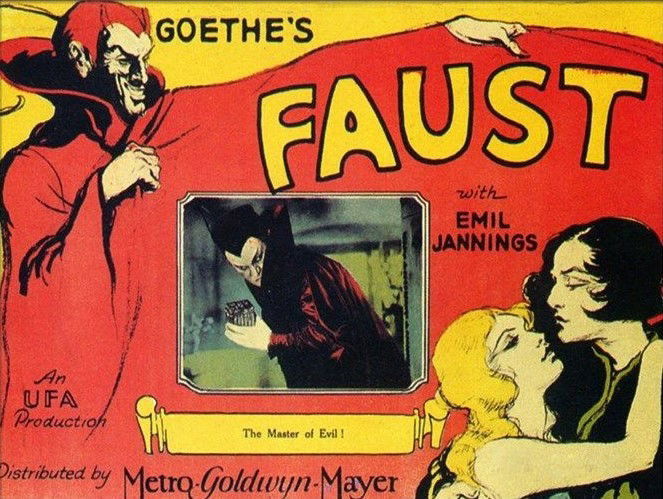
The 1926 film "Faust", directed by the visionary Friedrich Wilhelm Murnau, represents a seminal work in the history of cinema, embodying the very essence of the German expressionist movement. Inspired by the tragic legend of Faust and Johann Wolfgang von Goethe's monumental work of the same name, this cinematic masterpiece delves into the depths of the human soul, exploring universal themes such as ambition, desire and morality. The narrative focuses on the tormented figure of Dr. Faust, an elderly and disillusioned alchemist, whose thirst for knowledge and power leads him to make a nefarious pact with the devil, Mephisto, a deal that will prove to have devastating consequences.
Card n.3 Pag.1 ABC (August Batschari Cigarettes) MERCEDES FILM IMAGES FROM BEAUTIFUL FILMS FILM ALBUM 4
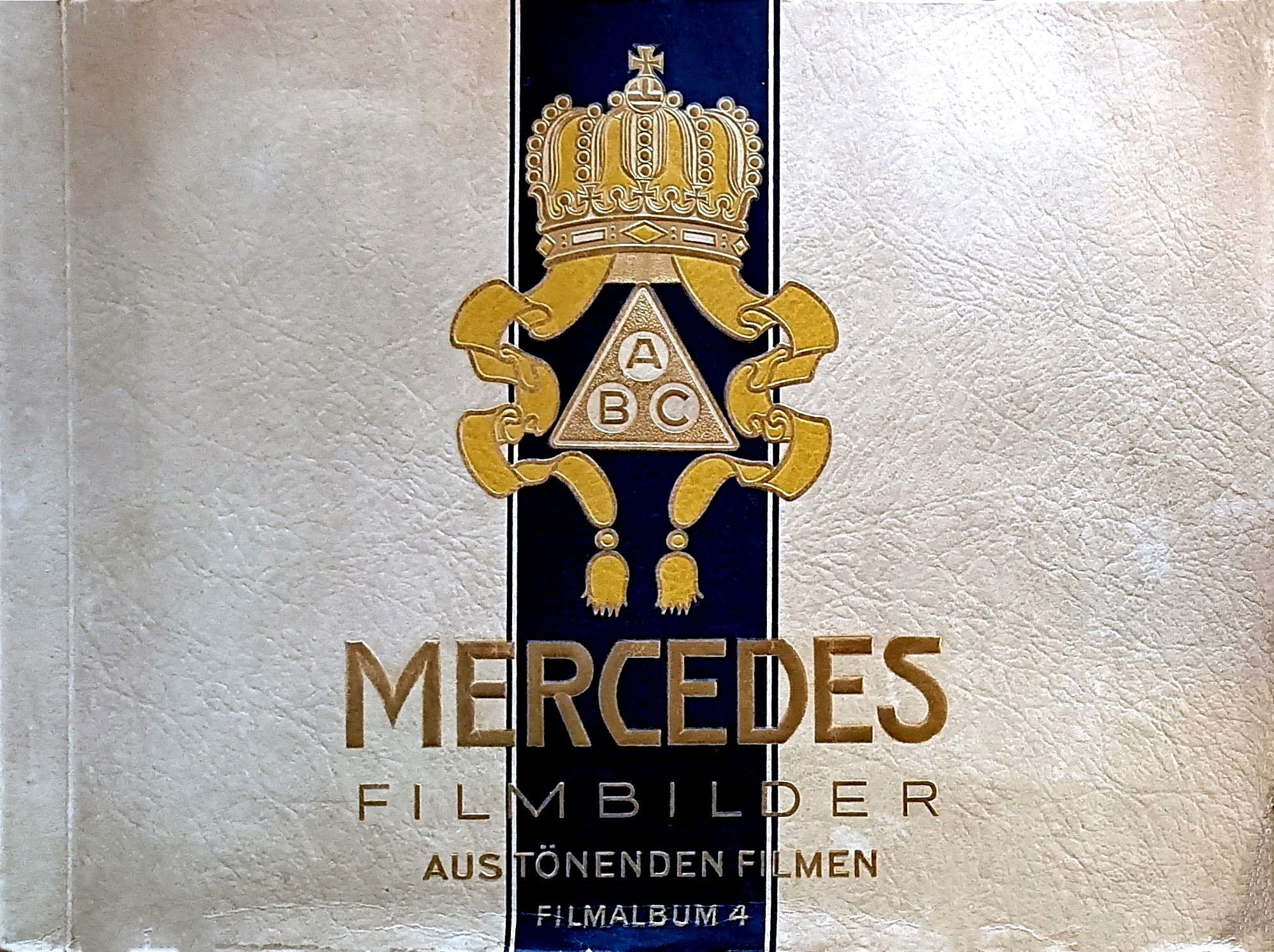
(personal collection)
Friedrich Wilhelm Murnau, born Friedrich Wilhelm Plumpe, was a film icon, whose legacy continues to influence the world of filmmaking and screenwriting. His ability to capture the nuances of the human soul through German Expressionism and the Kammerspiel has left an indelible mark on the art of cinema. Murnau explored the depths of the human psyche and experimented with visual techniques that revolutionized the way stories are told on screen. His work has gone through several phases, from theater to war, to the culmination of his career in Hollywood. Each of Murnau's films is a chapter in an artistic journey that has challenged the boundaries of the possible, pushing audiences to see beyond the surface and dive into the dark and complex depths of human existence. "Nosferatu" is not just a film, but an experience that transcends time, while "The Last Laugh" and "Aurora" are testaments to his mastery of conveying deep emotions without the need for words. Murnau didn't just create movies; He created worlds, gave life to dreams and nightmares that continue to live in the collective imagination. His artistic vision remains a beacon for filmmakers around the world, a reminder that filmmaking is an art form that can explore the darkest depths while also celebrating the ineffable beauty of the human condition.
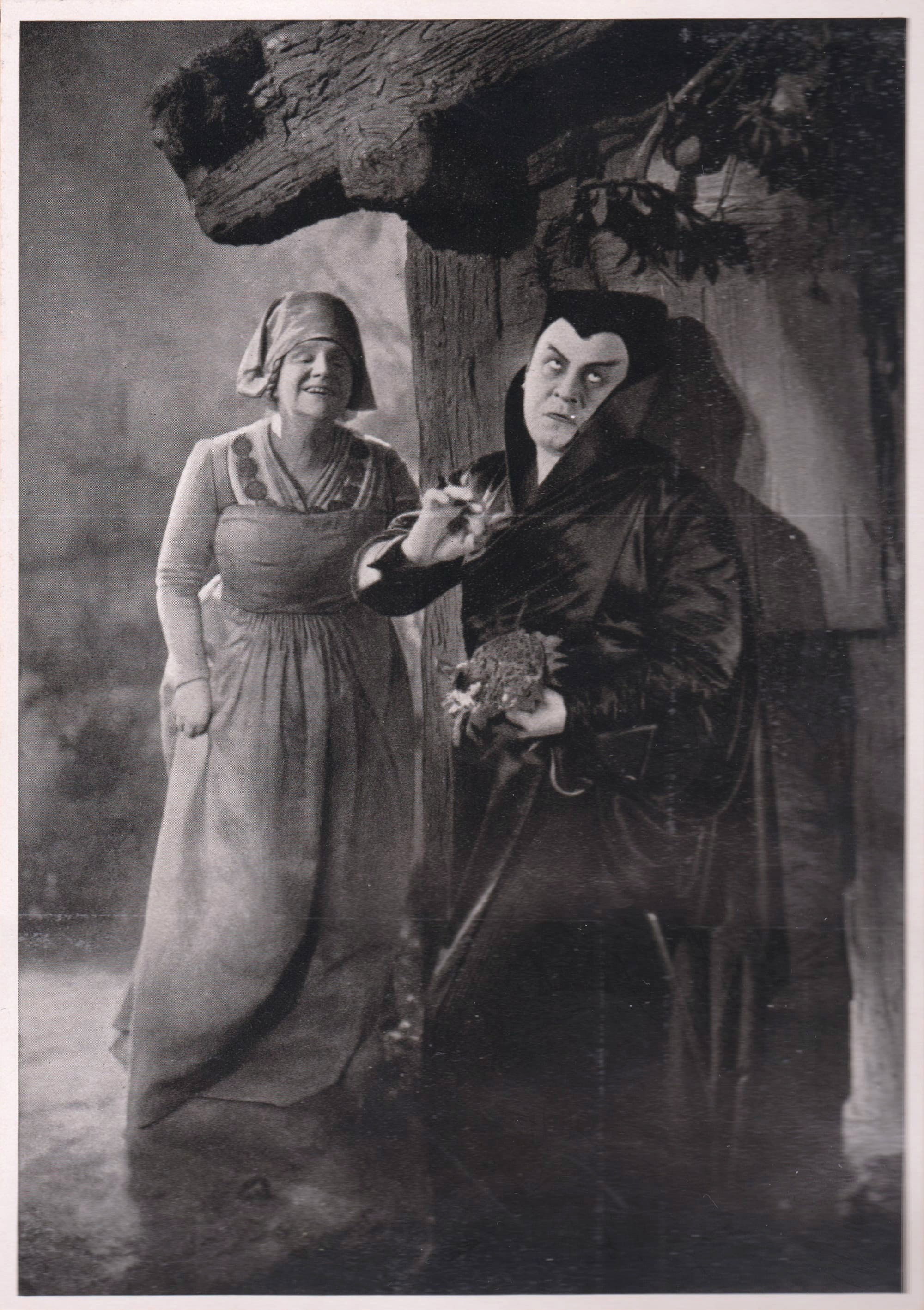
Yvette Guilbert ed Emil Jannings
Card Posizione 1 pag. 68 ON THE DEVELOPMENT OF GERMAN FILM ART THE SILENT FILM
Murnau, with his innovative direction, uses revolutionary cinematic techniques for the time, such as advanced special effects and an expressive use of shadows and light, to bring to life a world in which reality merges with illusion, creating an atmosphere full of emotional and visual tension. In Faust, he stands out not only for his engaging narrative but also for his impressive aesthetic, which leaves an indelible imprint on the viewer's memory.
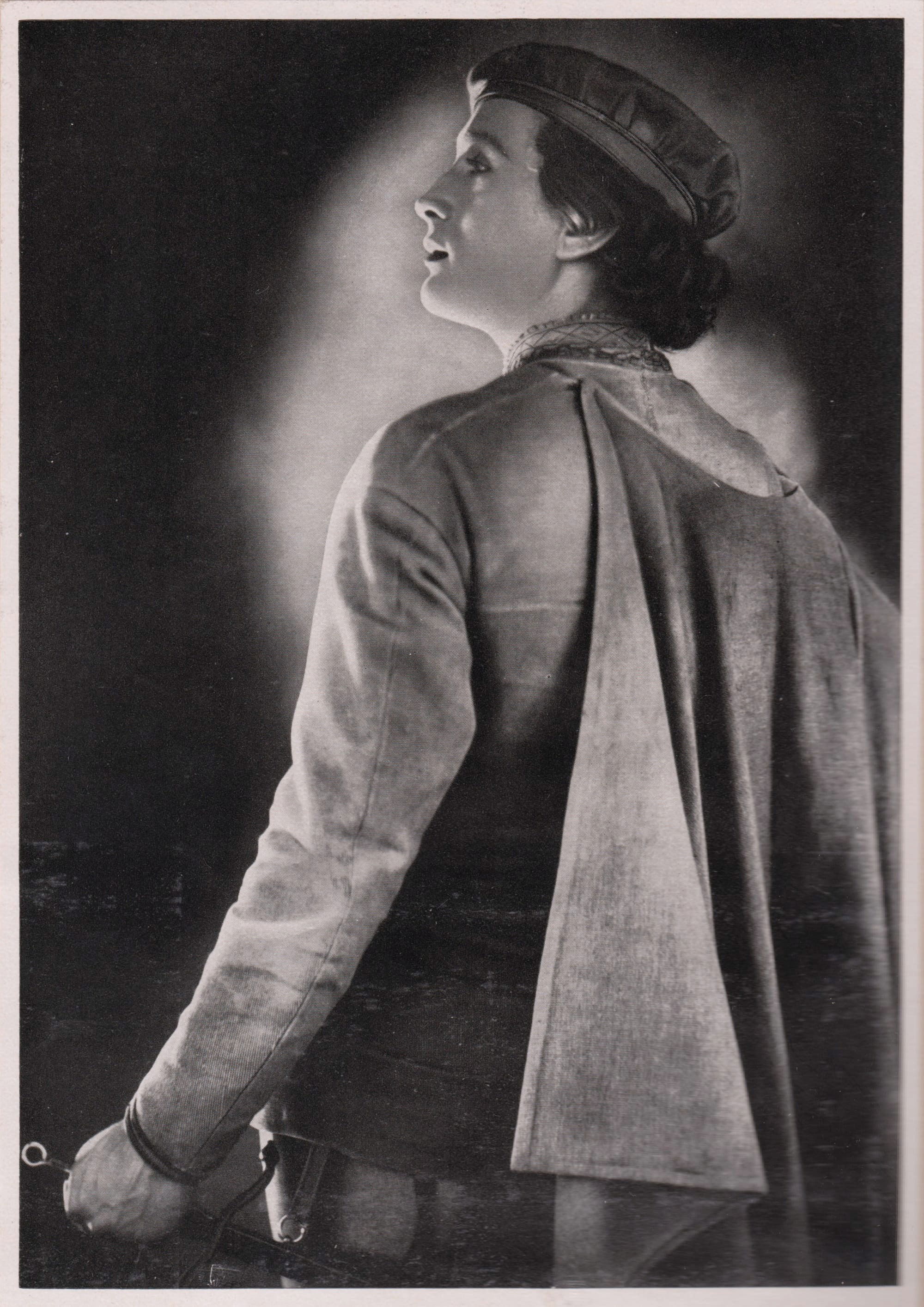
Gösta Ekman as the young Faust
Card Position 1 p. 118 VOM WERDEN DEUTSCHER FILMKUNST DER STUMMEFILM

Gösta Ekman as Old Faust
Card Posizione 2 pag. 117 ON THE DEVELOPMENT OF GERMAN CINEMA: THE SILENT FILM
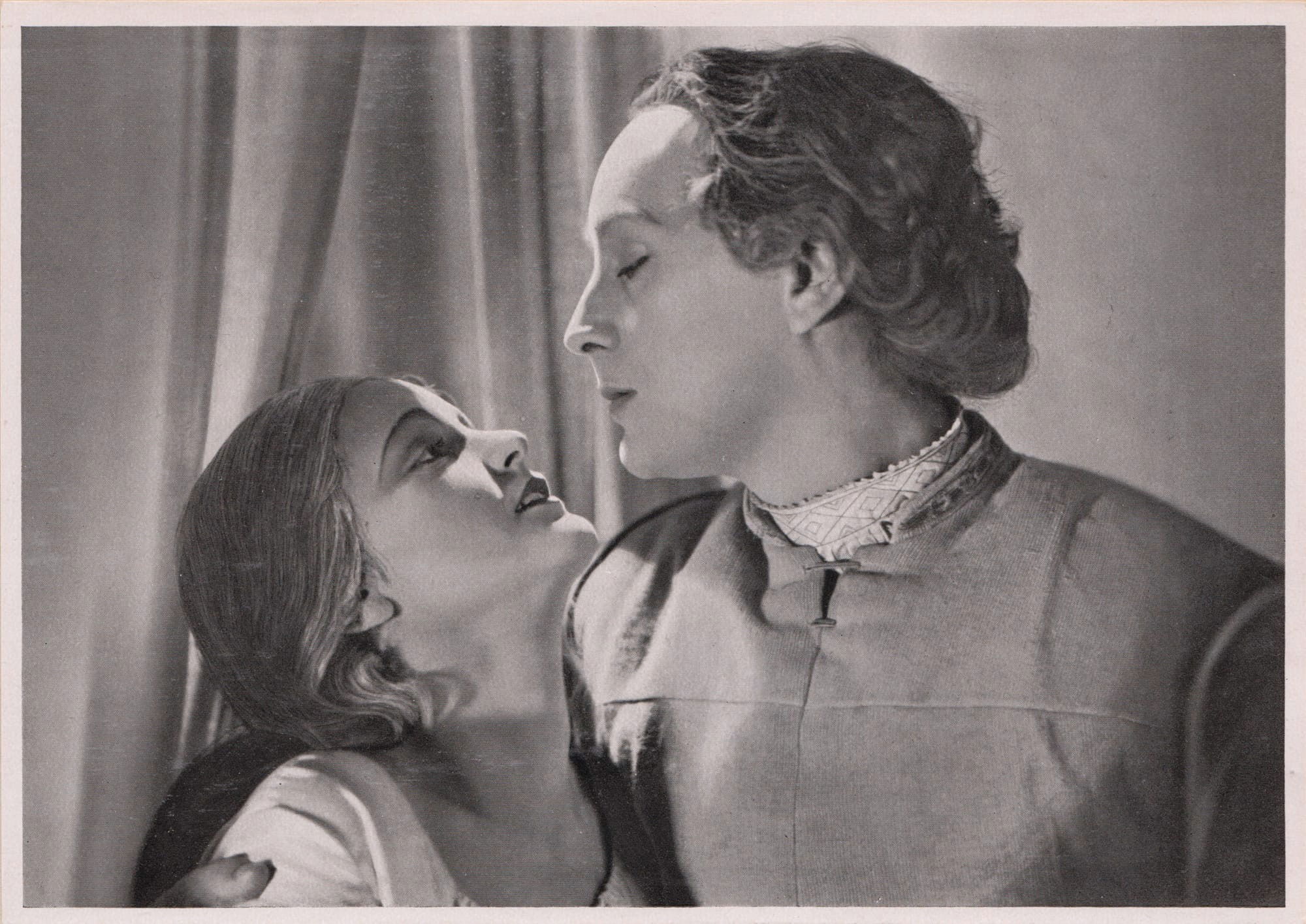
Camilla Horn as Gretchen and Gösta Ekman the young Faust
Card Posizione 1 pag. 125 ON THE DEVELOPMENT OF GERMAN CINEMA: THE SILENT FILM

(personal collection)
The star-studded cast, led by Gösta Ekman as the title role of Faust, Emil Jannings as Mephisto, and Camilla Horn as Gretchen, deliver memorable performances that capture the complex essence of their characters, helping to make "Faust" a timeless work. Jannings' performance, in particular, was lauded for its ability to embody both seduction and the threat of the devil, while Ekman masterfully conveys Faust's transformation from a desperate man to a tragic figure.
"Faust" also marks a turning point in Murnau's career, being the last film he directed in Germany before his move to Hollywood. The influence of this film extends far beyond the boundaries of expressionist cinema, influencing generations of filmmakers and continuing to be studied and admired for its artistic boldness and thematic depth. Murnau's transition to American cinema, culminating in the making of "Aurora" in 1927, would not have had the same impact without the foundations laid by "Faust", which remains an essential point of reference for understanding the evolution of cinematic language.
Card n. 102 THE ORAMI ALBUM
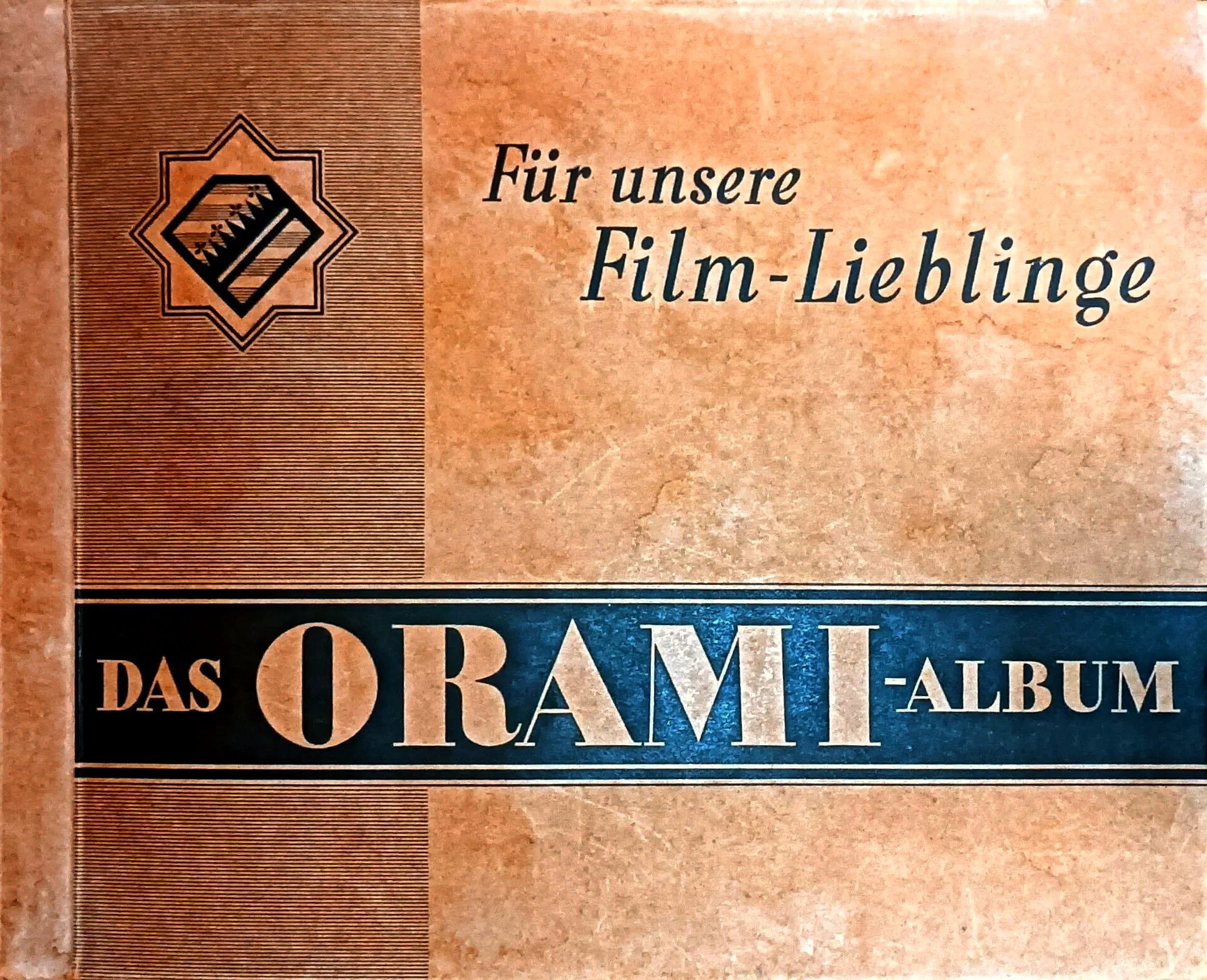
(personal collection)
Gösta Ekman's dual performance in the 1926 film "Faust" is an extraordinary example of the Swedish actor's versatility and talent. Ekman, already a star of the theater in Sweden, brought a unique depth to the two roles, embodying both the old alchemist consumed by remorse and the young man renewed by the promise of power and youth. This performance is particularly remarkable considering the technical limitations of silent cinema, where physical expression and body language were essential to convey complex emotions and characterizations.
In the role of the elderly Faust, Ekman conveys a sense of despair and weariness that is palpable. His interpretation reflects the inner struggle of a man who is faced with mortality and human suffering, unable to find a cure for the plague that ravages his village. Faust's decision to make a deal with the devil is rendered with a gravity that underscores the weight of the choice. On the other hand, as a young Faust, Ekman displays renewed energy and vigor, capturing the euphoria and enthusiasm of a man who has achieved what he desired, but at a terrible price.
The transition between the two aspects of Faust is masterfully handled by Ekman, who not only changes his physical appearance, but also alters his stage presence and acting style to reflect the character's internal change. This step is made even more impressive by the fact that the audience has to believe in this transformation without the help of spoken dialogue, relying solely on the visual power of the performance.
Ekman's ability to play both roles with such distinction is a tribute to his skill as an actor and his understanding of the source material. His elderly Faust is a man marked by life, while his young Faust is full of hope and desire, yet both are clearly the same character, linked by a common destiny. This duality is critical to the film's success, as audiences must sympathize with Faust despite his questionable choices, and Ekman makes this task possible with his empathetic and multifaceted performance.
Ultimately, Gösta Ekman's performance in "Faust" is a landmark in the history of cinema. Not only because of his ability to bring to life two versions of the same character at a time when cinema was still in its formative stages, but also because he established a model for future generations of actors in silent cinema and beyond. His performance is an example of how a great actor can transcend the barriers of language and technology to create a cinematic experience that remains powerful and moving even decades later.

Card n. 23 MONOPOLY FILM - PICTURES
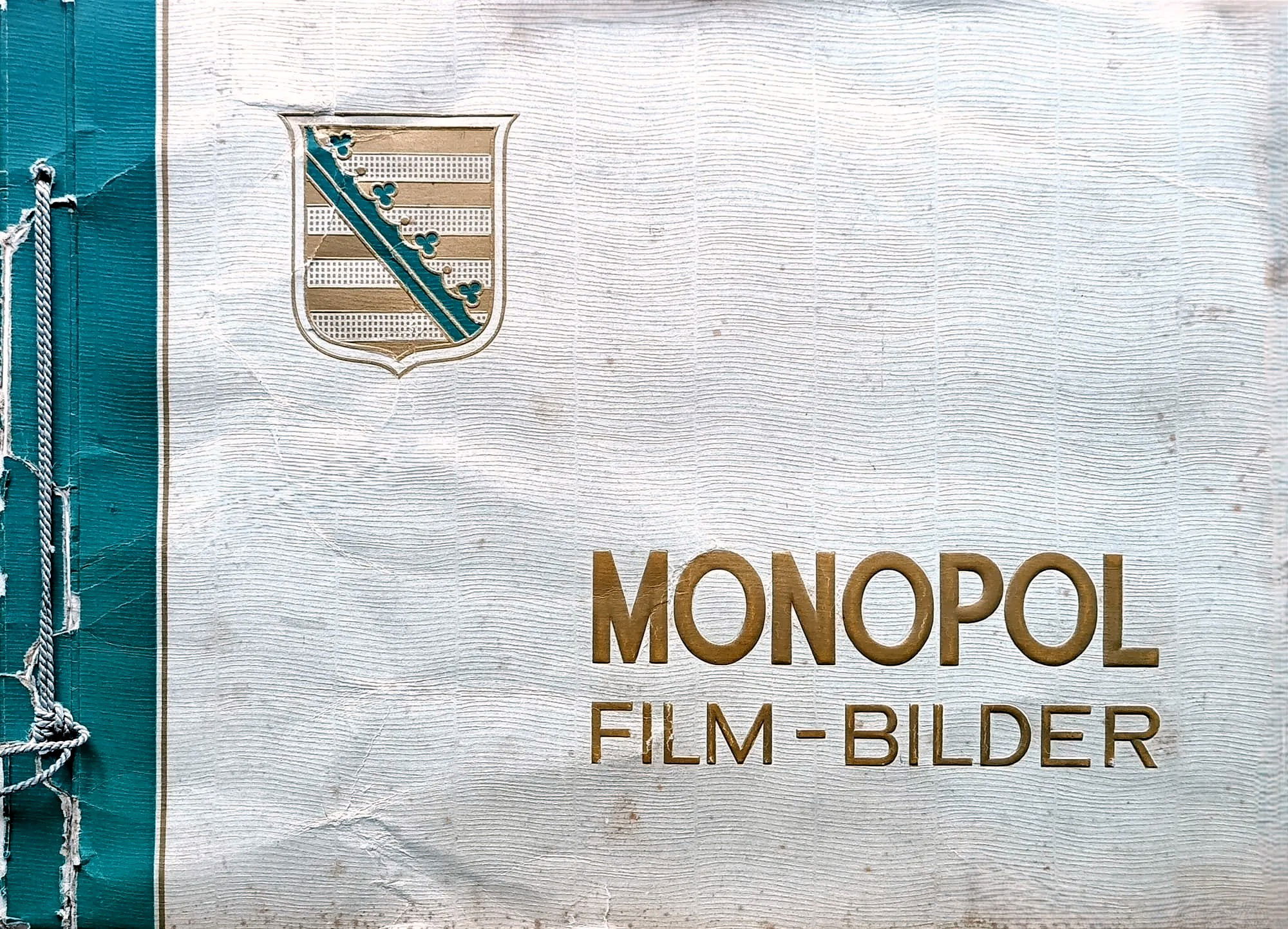
(personal collection)
Emil Jannings, as Mephisto in the 1926 film "Faust," delivered one of his most memorable performances, embodying the devil with a stage presence that dominates the screen. His performance was acclaimed for its ability to capture the complexity of a character who is both seductive and menacing. Jannings, an actor of great stature in German and international cinema, has used his talent to bring to life a Mephisto that is both brutal and burlesque, an antagonist who embodies temptation and excess.
His portrayal of Mephisto is particularly notable for his expressive use of body language and facial expressions, which were essential in silent cinema to convey emotion and intention. Jannings has leveraged these techniques to create a character who, despite the lack of spoken dialogue, clearly communicates his evil and deception. His performance has been described as one of the most powerful depictions of the devil in the history of cinema, a perfect balance between the comic and the diabolical, which has left an indelible imprint on the genre of the German expressionist film.
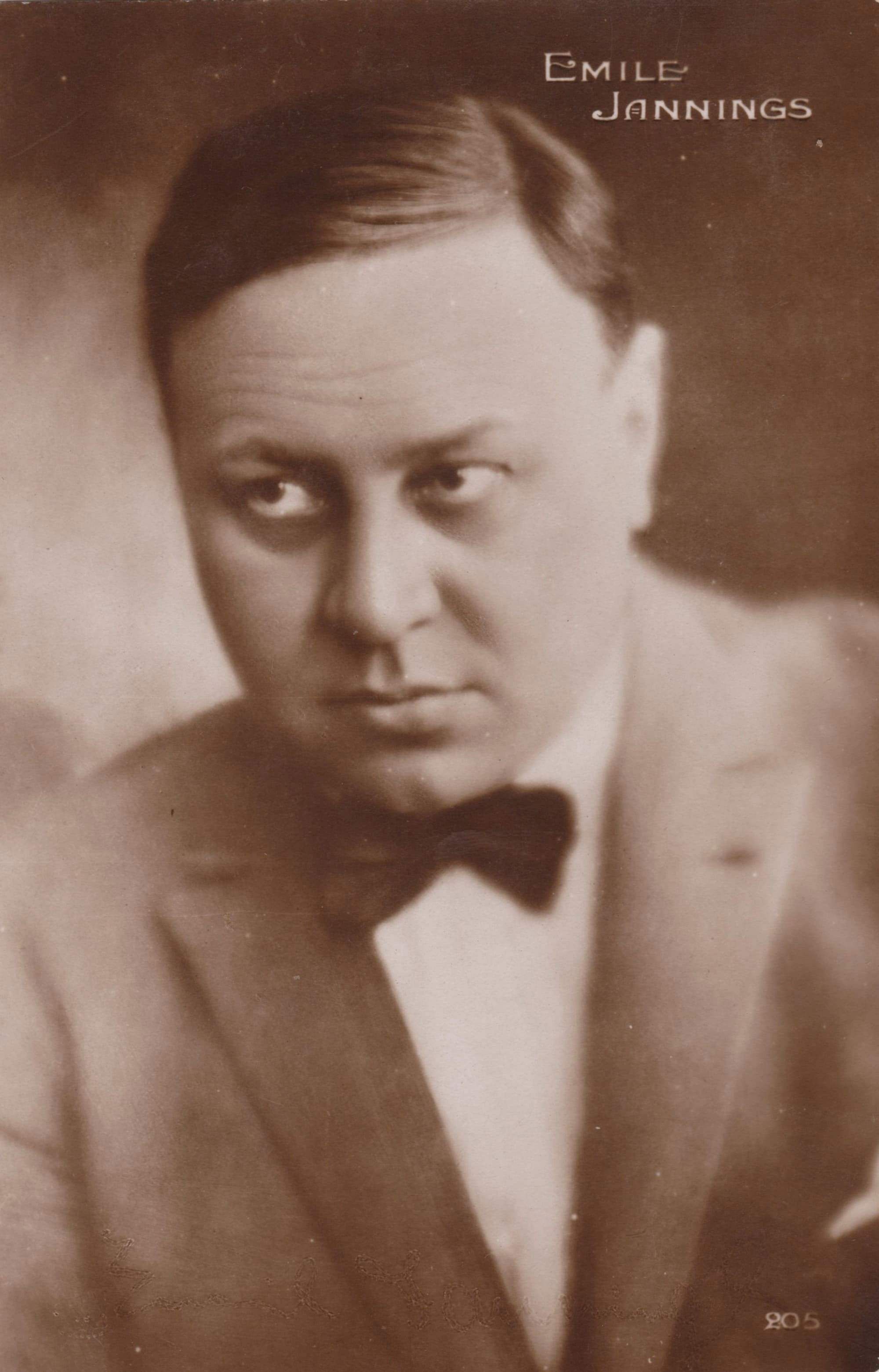
Postcard - Cinémagazine - Edition Paris
(personal collection)
Jannings' contribution to the film is not limited to his acting; His influence also extends behind the scenes. He was in fact one of Murnau's supporters, convincing producer Erich Pommer to choose Murnau as director of the film, despite the fact that he was already busy with another project. This decision proved crucial to the film's success, as Murnau's artistic vision and Jannings' performance combine to create a work that transcends its time and genre.
The figure of Mephisto, as played by Jannings, serves as a catalyst for the events of the film, pushing Faust towards choices that will define his destiny. His presence is a constant challenge to Faust, a reminder of the dark forces to which he succumbed. Jannings manages to convey this tension with a mastery that makes his Mephisto not just a character, but a force of nature, an essential element of the expressionist atmosphere that pervades the film.
In conclusion, Emil Jannings' performance in "Faust" is emblematic of his talent and his importance in the cinema of the time. His ability to bring depth and nuance to a role that could easily become one-dimensional demonstrates his craft as an actor and its impact on the development of filmmaking as an art form. His portrayal of Mephisto remains a benchmark for actors and directors seeking to capture the essence of evil on screen, and his work on "Faust" continues to be studied and admired for its boldness and innovation.
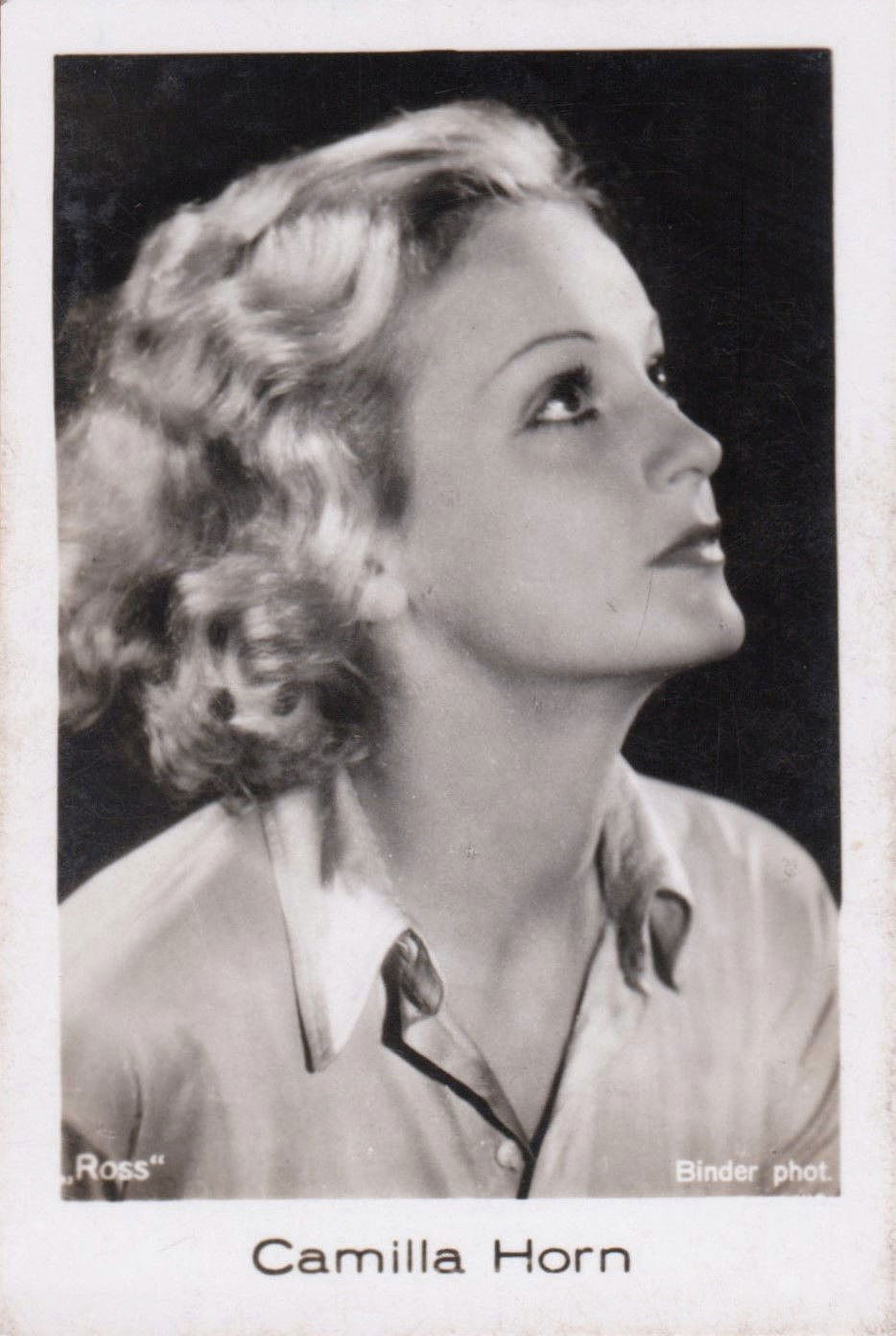
Card position 5 pag. 6 RAMSES FILM BILDER ALBUM 1
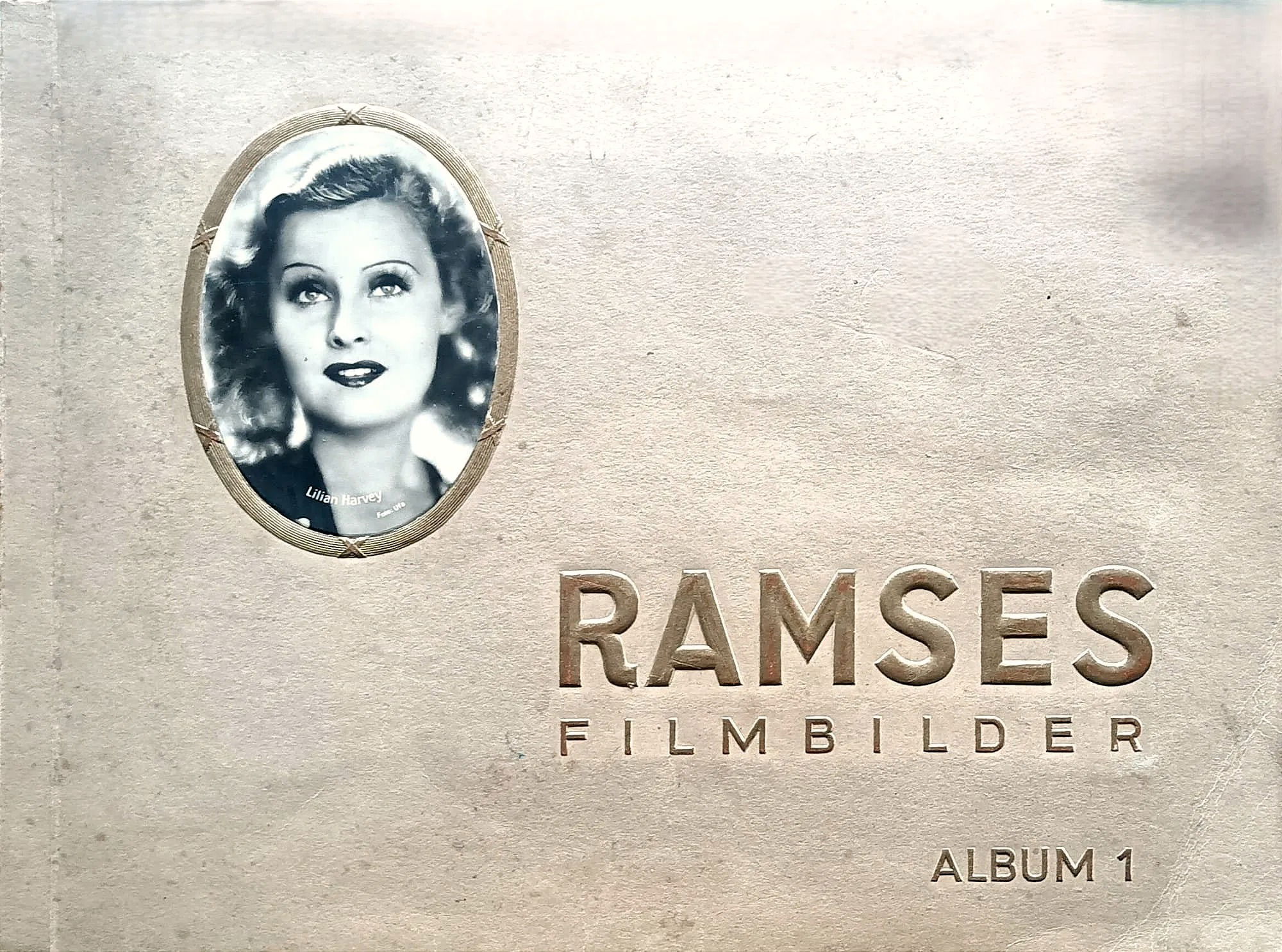
(personal collection)
Camilla Horn, in the role of Gretchen in the 1926 film "Faust", gracefully and delicately embodied the main female character, becoming one of the icons of silent cinema. His portrayal of Gretchen, the pure and innocent young woman who becomes the object of Faust's affection, was celebrated for its emotional intensity and her ability to convey a range of complex emotions without the use of her voice. Horn brought to the screen a vulnerability and inner strength that made her character memorable and contributed significantly to the film's success.
Before "Faust", Horn was relatively unknown in the film world, but her performance in Murnau's film opened the doors to international fame for her. Her ethereal beauty and stage presence caught the attention of the director, who cast her for the role after actress Lillian Gish turned down the part. Murnau's decision proved to be acute, as Horn brought a freshness and performance that many consider unsurpassed for that character.
Horn demonstrated remarkable on-screen chemistry with Gösta Ekman, who played Faust, and their interaction provided some of the film's most poignant moments. His depiction of Gretchen's descent into despair, as a result of Mephisto's manipulations and Faust's choices, was particularly powerful. Horn used body language and facial expressions to communicate her character's internal conflict and tragedy, a considerable challenge in an era when cinema lacked sound dialogue.
After "Faust," Horn's career took off, taking her to Hollywood where she went on to work with some of the biggest names in cinema at the time. However, it is his role in "Faust" that remains the most emblematic of his career, a role that defined his status as a star and left a lasting imprint on film history. Her performance helped set the standard for actresses in silent film and continues to be a benchmark for actors looking to express deep emotions without words.
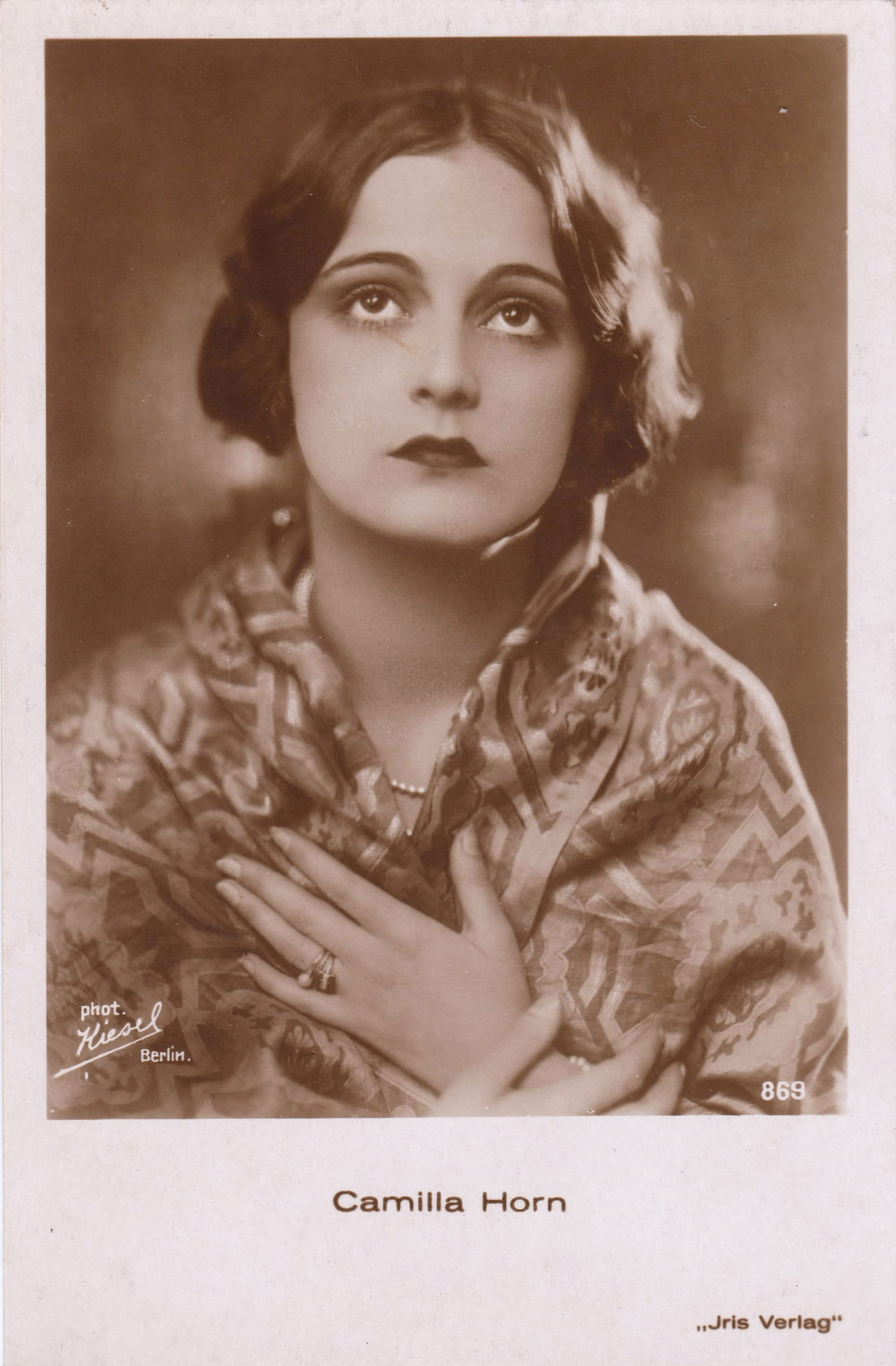
GERMAN POSTCARD JRIS n° 869 Berlin
(personal collection)
Ultimately, Camilla Horn, through her role in "Faust", proved that silent cinema could be an incredibly powerful means of expression. Her ability to communicate the complexity of Gretchen's character through subtle gestures and facial expressions helped define an era of cinema and inspire future generations of actors and filmmakers. His interpretation is a tribute to his artistry and a shining example of the talent that helped make "Faust" a timeless classic.
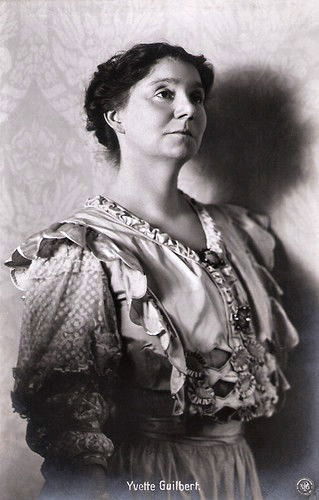
GERMAN POSTCARD - NPG n° 266/74 Berlin
Yvette Guilbert, as Marthe Schwerdtlein, Gretchen's aunt, in the 1926 film "Faust", brought to the screen a performance that, although not at the center of the main narrative, enriches the story with a significant presence. Guilbert, a celebrated French cabaret singer and actress, was known for her unique style and acting skills, which allowed her to turn a supporting role into a memorable part of the film. Her Marthe is a maternal and comic figure, providing a much-needed contrast to the film's darker themes and adding a human dimension to the expressionist narrative.
Guilbert's career, already well established before "Faust", saw the actress perform in the most famous cabarets in Paris, such as the Moulin Rouge, and become an influential figure in the popular culture of the time. His transition from the stage to silent cinema was marked by an ability to adapt that demonstrated the versatility of the artists of that period. In "Faust", Guilbert used his theatrical experience to create a character who, despite limited screen time, leaves a lasting impression.
His portrayal of Marthe Schwerdtlein offers moments of levity and humor, balancing the gravity of the main story of Faust and Mephisto. Guilbert used his talent for comedy to breathe life into scenes that might otherwise have been too tense. His ability to communicate through exaggerated gestures and facial expressions, typical of his cabaret style, added a visual richness to the film that helped define Murnau's expressionist aesthetic.
Although her role is not as central as that of Gösta Ekman, Emil Jannings or Camilla Horn, Yvette Guilbert's performance in "Faust" is an example of how an actor can influence a film and enrich its plot. His Marthe is not just a supporting figure; is a character who represents normality and everyday life, offering the viewer a break from the intense dynamics between the protagonists. This aspect is fundamental in an expressionist work, where each character contributes to building the overall atmosphere of the film.
In conclusion, Yvette Guilbert, with her portrayal of Marthe Schwerdtlein in "Faust", has shown that even supporting roles can have a significant impact on a cinematic work. His ability to bring lightness and humanity to an otherwise dark and dramatic context is a tribute to his artistry and his importance in the cultural landscape of the time. His performance in "Faust" remains a benchmark for actors in supporting roles and a shining example of the contribution an artist can make to the success of a film.
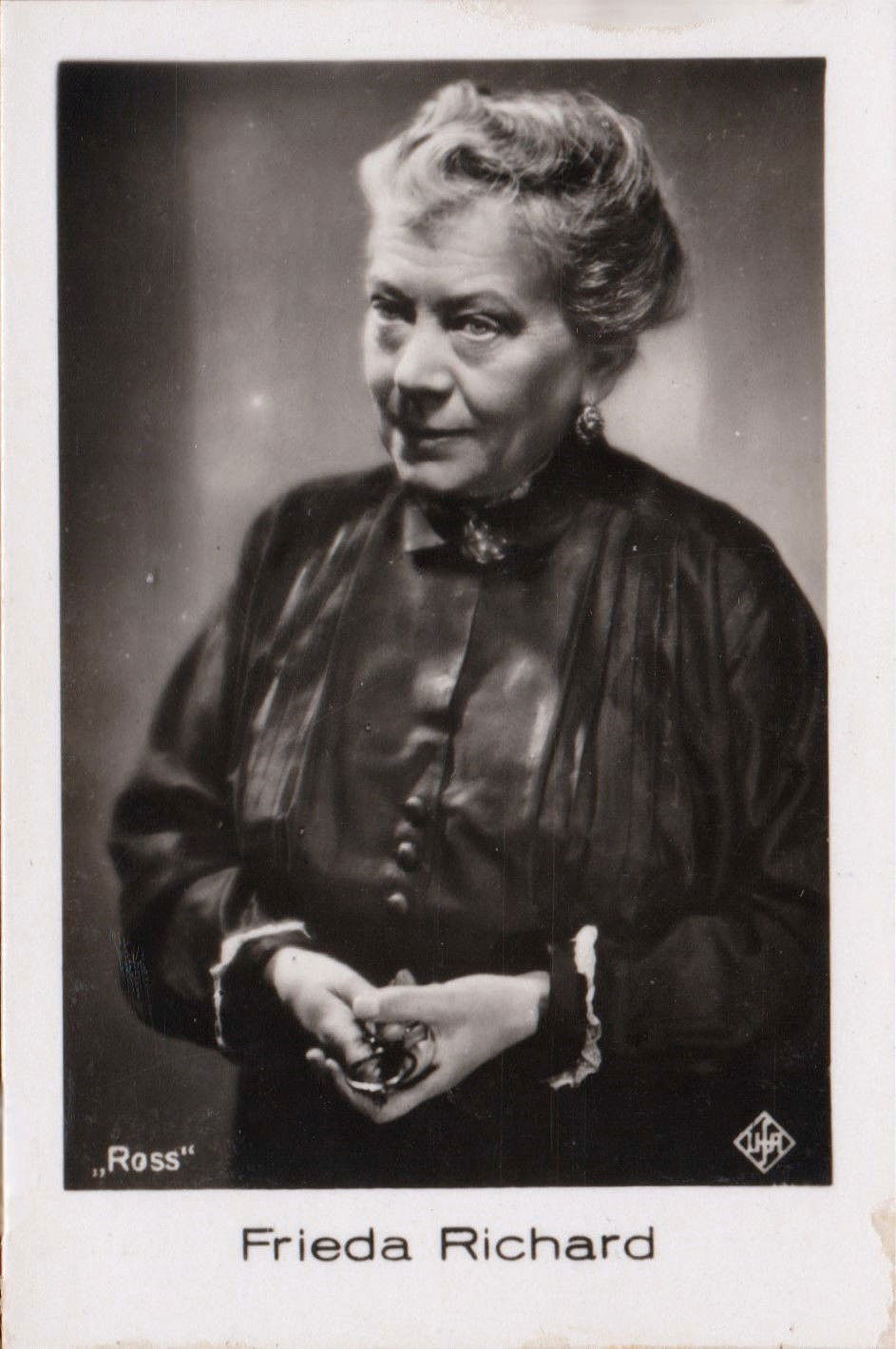
CARD position 8 pag.26 RAMSES FILM BILDER ALBUM 1
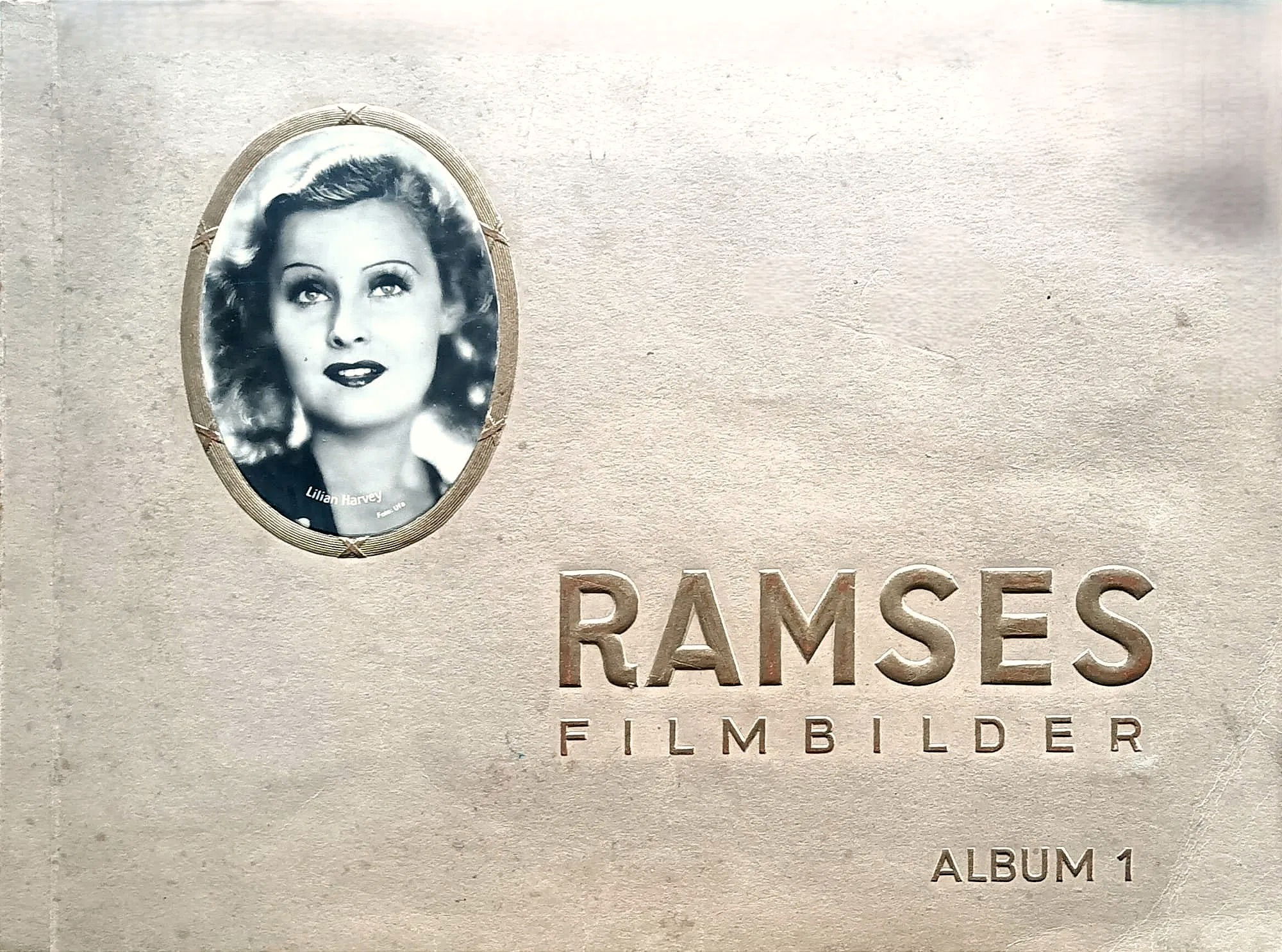
(personal collection)
Frida Richard, born Friederike Raithel, was an icon of German cinema, beginning her film career in 1910. With an extensive filmography that testifies to her versatility and talent, Richard has distinguished herself for her ability to play maternal roles with depth and authenticity, as demonstrated in her role in the 1926 film "Faust." This film, directed by the visionary F.W. Murnau, is considered a masterpiece of German expressionist cinema and one of the most memorable performances of the legendary story of Faust. Richard's performance as Gretchen's mother helped create an intense and moving atmosphere, which made the film a timeless classic. His career has gone through the evolution of cinema from silent to sound, showing a remarkable ability to adapt and a stage presence that has left an indelible mark on the history of cinema. His dedication to the art of acting and his contribution to German cinema remain a shining example for future generations of actors and filmmakers. Frida Richard is a symbol of perseverance and passion, a star that continues to shine in the Olympus of cinema.

Card posizione 4 pag.12 FILM ARTISTS FROM ALL OVER THE WORLD
"HÄNSOM"
(personal collection)
Wilhelm Dieterle, also known as William Dieterle in his Hollywood career, had a significant role in the 1926 film "Faust," playing Valentin, Gretchen's brother. His performance helped bring the film's complex emotional texture to life, enriching the narrative with a strong and assertive presence. Dieterle, who later became an acclaimed director, already showed in this role his deep understanding of drama and characterization, elements that he would bring to his later career behind the camera. His portrayal of Valentin has been praised for its intensity and the way it embodied the values and tensions of the time, reflecting the struggle between good and evil that is central to the legend of Faust. The film "Faust" has remained in history as one of the masterpieces of German expressionist cinema, and Dieterle's participation is an example of his versatility and talent as an actor before becoming an influential director. His transition from actor to director was smooth, and his work in "Faust" certainly laid the foundation for his future career in film, where he continued to explore complex themes and create films that have left an indelible mark over time.
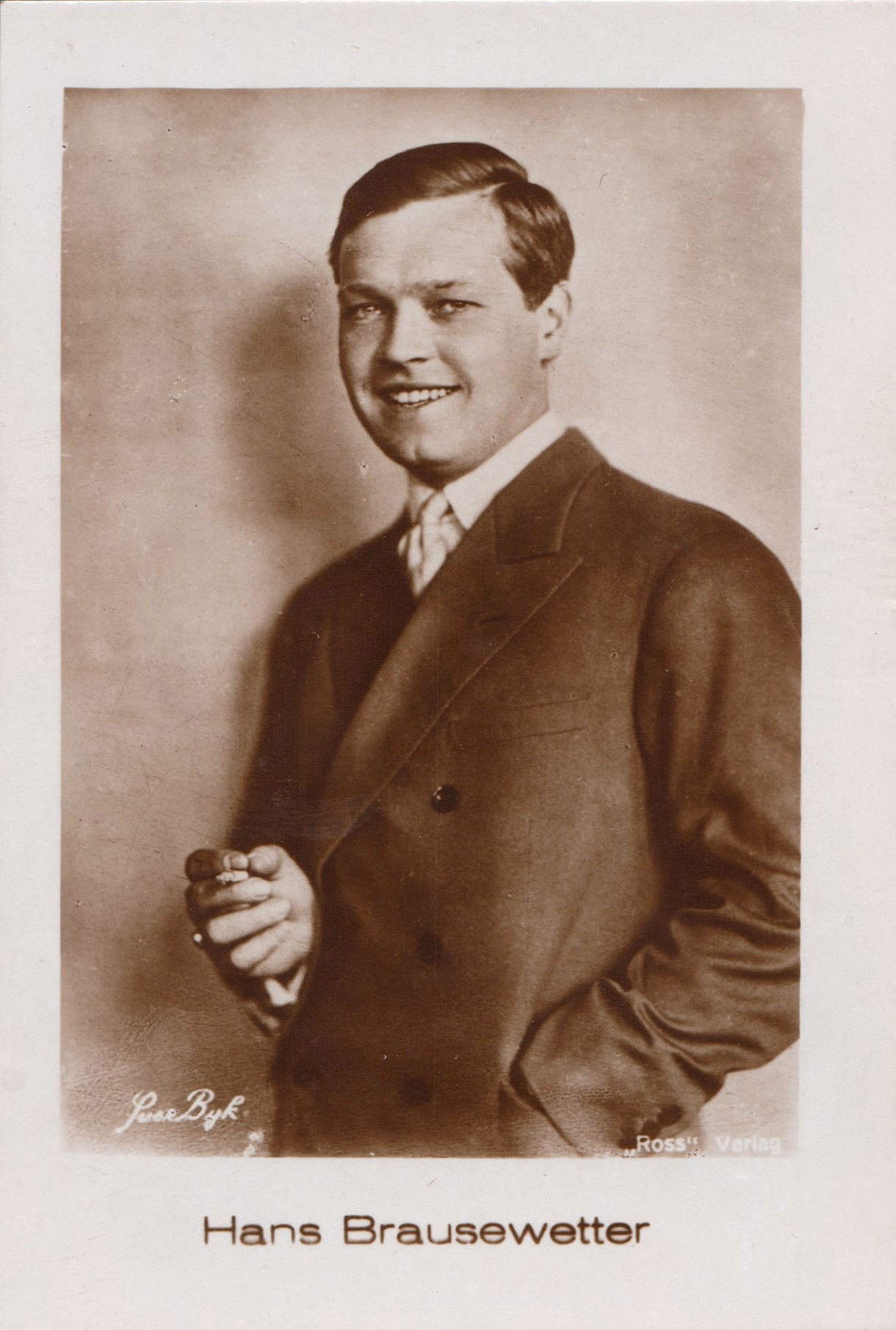
Card posizione 3 pag.21 FILM ARTISTS FROM ALL OVER THE WORLD
"HÄNSOM"

(personal collection)
Hans Brausewetter contributed a memorable performance to the 1926 film "Faust", although his role is not among the best known. His ability to bring complex and multifaceted characters to the screen enriched the narrative of the film, a classic of German expressionist cinema. His career, filled with over a hundred films, testifies to his exceptional versatility and talent, making him a prominent figure in the German film industry of the time.
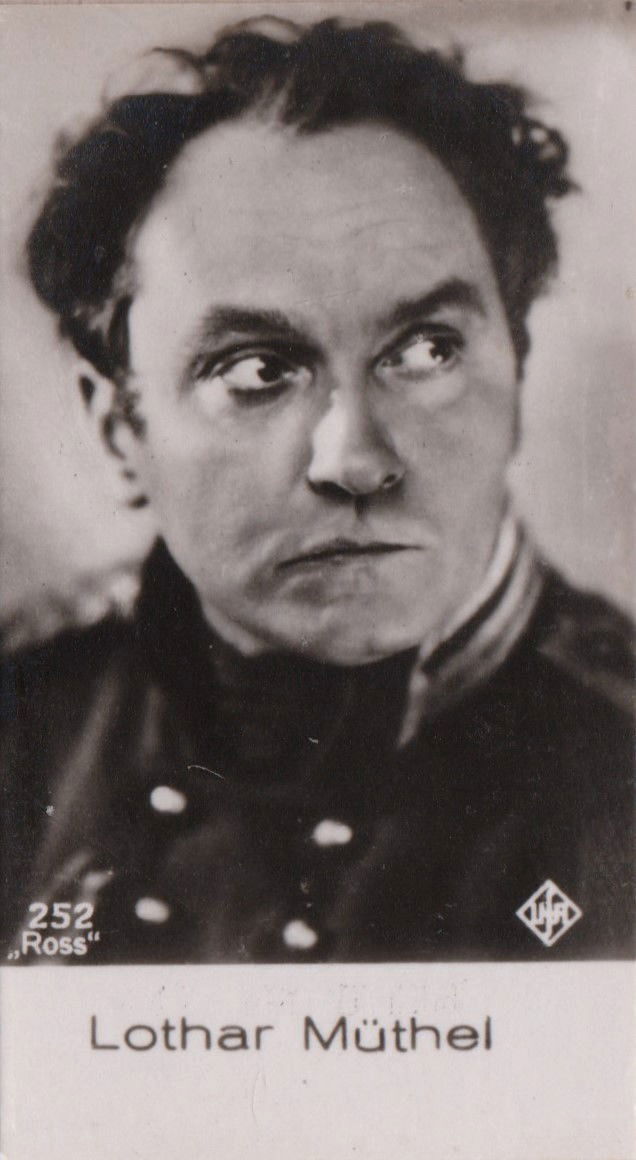
Card n.252 3 pag.5 SALEM FILM PICTURES ALBUM 2
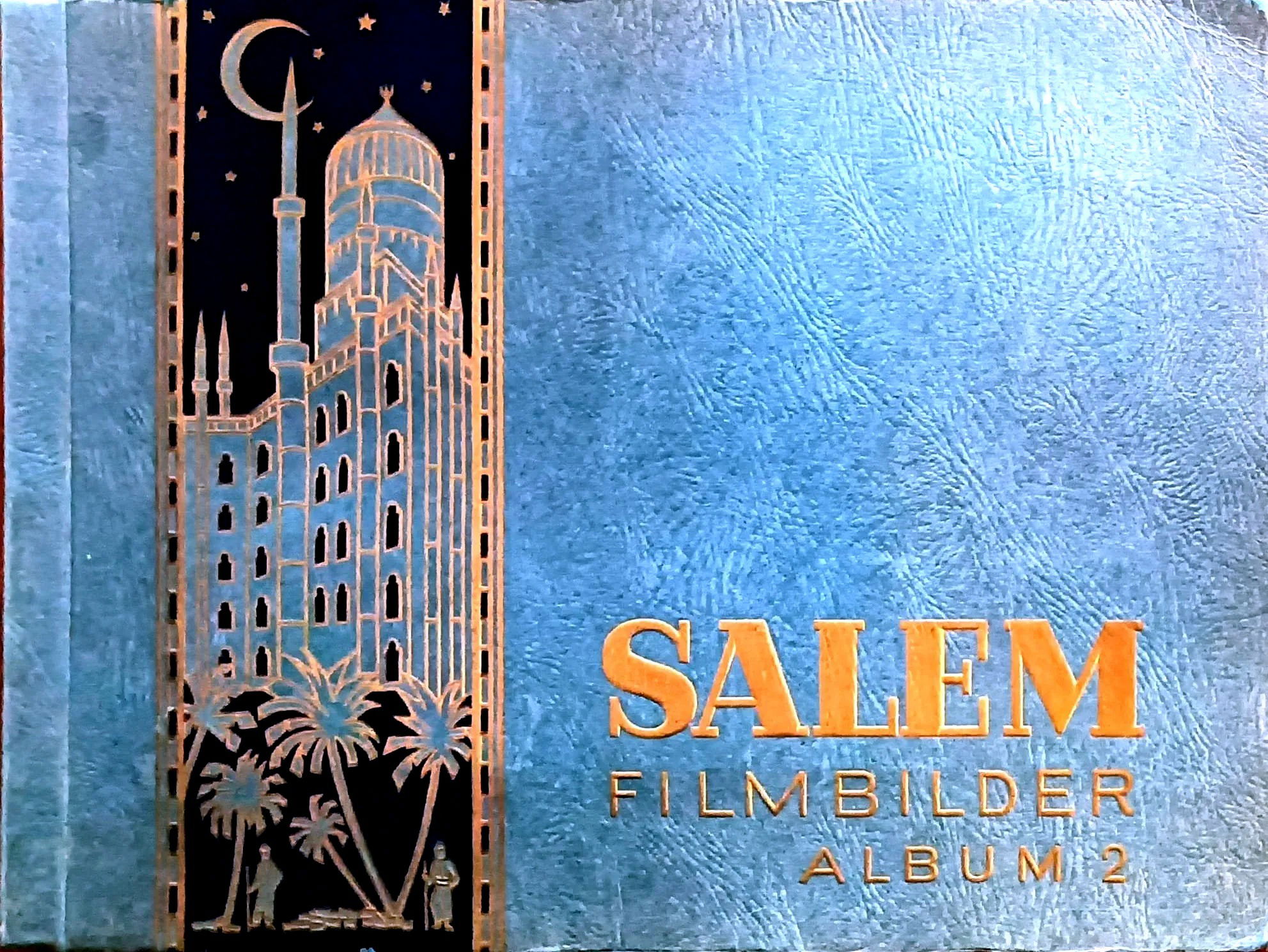
(personal collection)
Lothar Müthel, born Lothar Max Lütcke, was a German actor and director who left an indelible mark on the world of theater and cinema. His career has been characterized by remarkable versatility, which has allowed him to move with ease from stage to camera. In the 1926 film "Faust", Müthel played the role of the monk, a character who, although not at the center of the main narrative, contributes significantly to the atmosphere and thematic depth of the work. His performance demonstrated his ability to capture the essence of a complex character, adding an extra layer of meaning to the film, which is considered a masterpiece of German expressionist cinema.
In addition to his work on "Faust", Müthel has had a prolific career, appearing in numerous other films and working as a director. His training at Max Reinhardt's acting school and his commitment to the Deutsches Theater in Berlin forged his acting and conducting skills, which left a lasting imprint on German theater and cinema. Müthel was also an active member of the artistic community during Germany's turbulent period of the 1930s and 1940s, navigating the political and cultural challenges of the time.
His life and career reflect the complexities of an era when art and politics were intimately intertwined. Müthel continued to explore and experiment with his work, leaving behind a legacy of innovation and artistic expression that continues to influence the worlds of theatre and film. His dedication to the art of acting and directing has been an inspiration to many, and his contribution to the film "Faust" remains an example of his talent and passion for the craft.
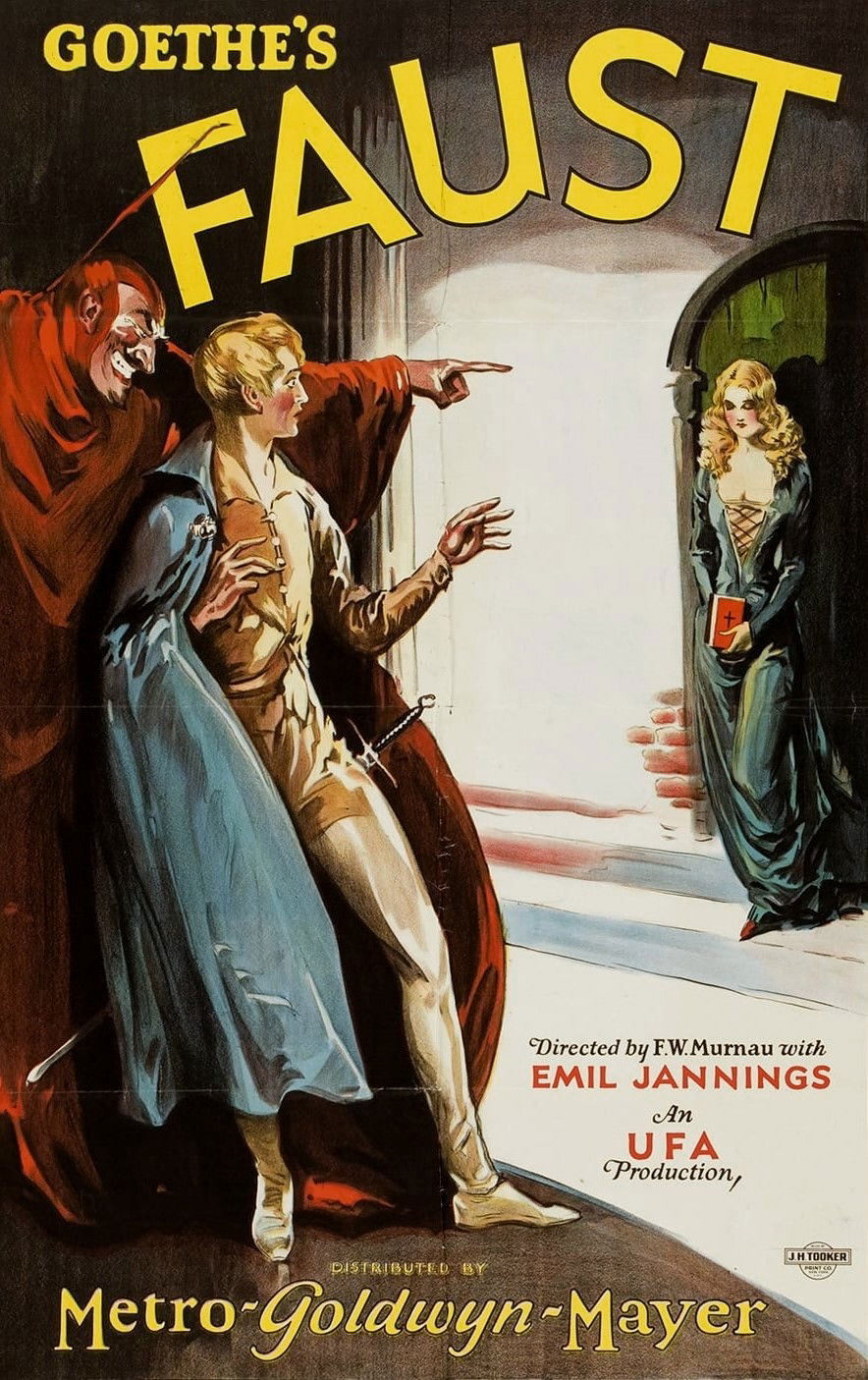
METROPOLIS
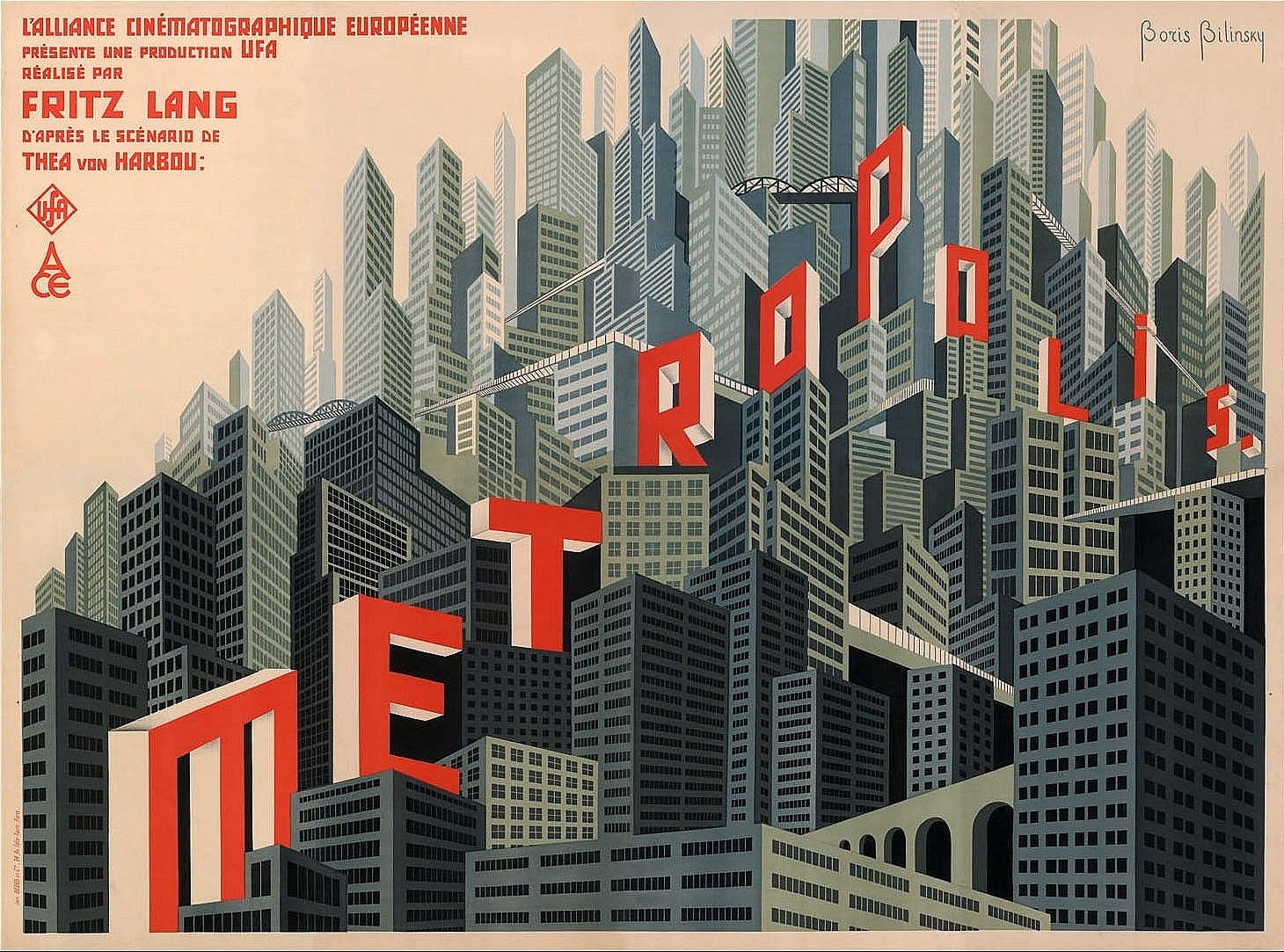
FRITZ LANG'S MASTERPIECE BETWEEN EXPRESSIONISM AND SCIENCE FICTION
Metropolis is a 1927 silent film directed by Fritz Lang, considered his masterpiece. Lang sets the film in a dystopian future (in 2026, i.e. 100 years later than when it was written) in which class divisions seem to be accentuated. The film is one of the symbolic works of expressionist cinema and is universally recognized as a model for much of modern science fiction cinema, having inspired films such as Blade Runner and Star Wars.
The plot of the film revolves around the clashes between the ruling class, who live in luxurious skyscrapers, and the working class, forced to work in inhumane conditions in the city's underground. The son of the powerful Joh Fredersen, Freder, falls in love with Maria, a young prophetess who preaches peace and harmony between classes. Freder's father, however, orders his scientist Rotwang to create a robot in the image of Mary, to sow chaos and revolt among the workers. Freder will then have to save the real Maria and prevent the destruction of Metropolis.
The film was visually and technically impactful and required 17 months of filming and a budget of over 5 million Reichsmarks. The film made use of innovative special effects, such as compositing, rhythmic editing, miniatures, animations and rotoscoping. The film also introduced the concept of anthropomorphic robots, with the famous scene of the transformation of the robot woman.
Metropolis had a troubled and controversial distribution, being cut and modified several times to adapt to different markets and political needs. Many scenes from the original film have been lost or damaged over time, making it difficult to reconstruct. Only in 2010 was a restored version presented that almost completely restores the original film, thanks to the discovery of an almost intact print in Argentina.
Metropolis is considered a masterpiece of cinema and a work of art of great cultural and historical value. The film was listed as a UNESCO World Heritage Site in 2001 and has received numerous accolades and tributes from critics, filmmakers, artists, and musicians. The film also influenced the science fiction genre, both literary and cinematic, and anticipated themes and problems of modern society, such as technology, globalization, inequality, and the ecological crisis.
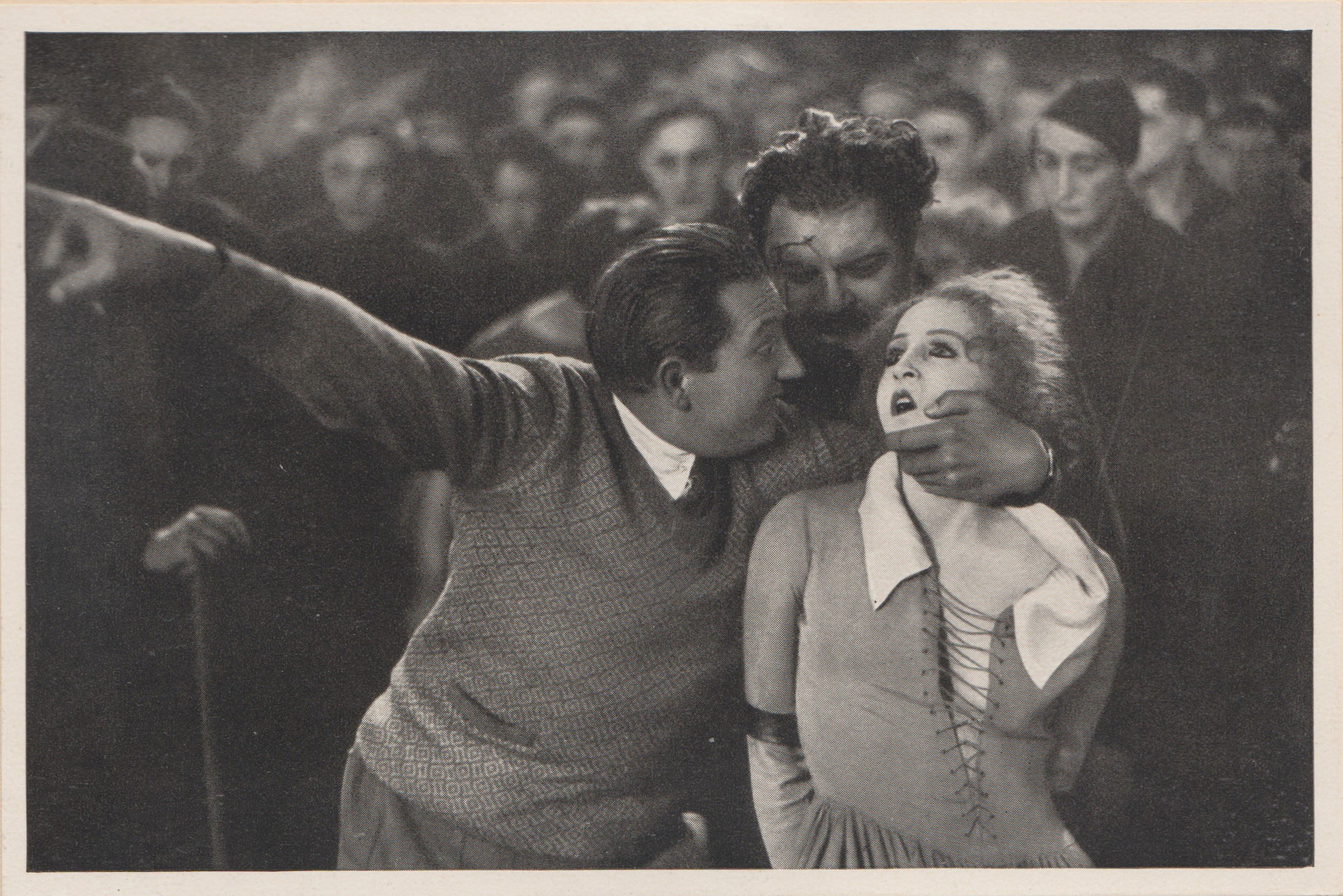
In this card, director Fritz Lang shows Heinrich George how he should grab Brigitte Helm in the scene from the film.
Below the scene of the Movie.
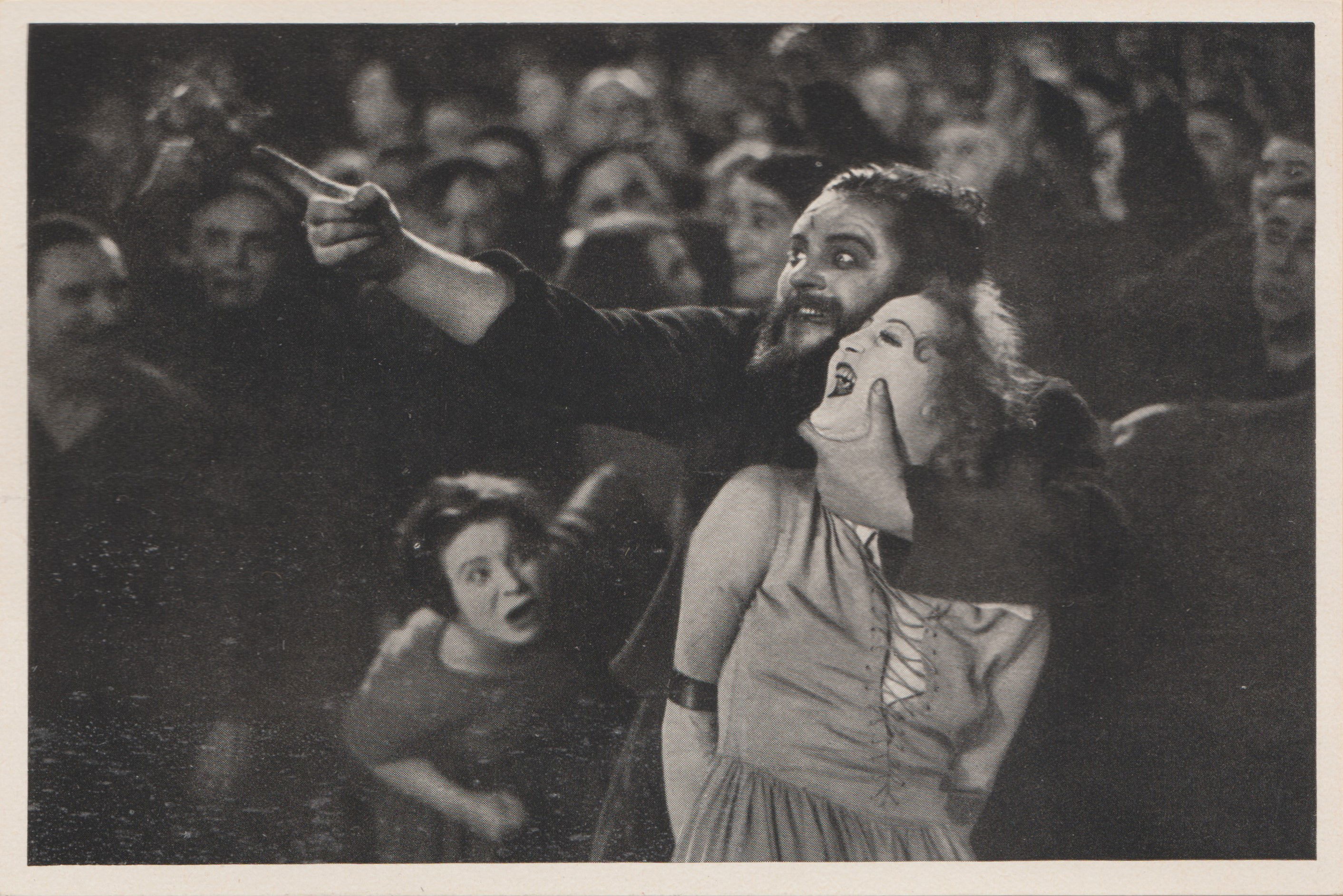
Cards Posizione 1 e 2 pag. 101 ON THE DEVELOPMENT OF GERMAN FILM ART THE SILENT FILM
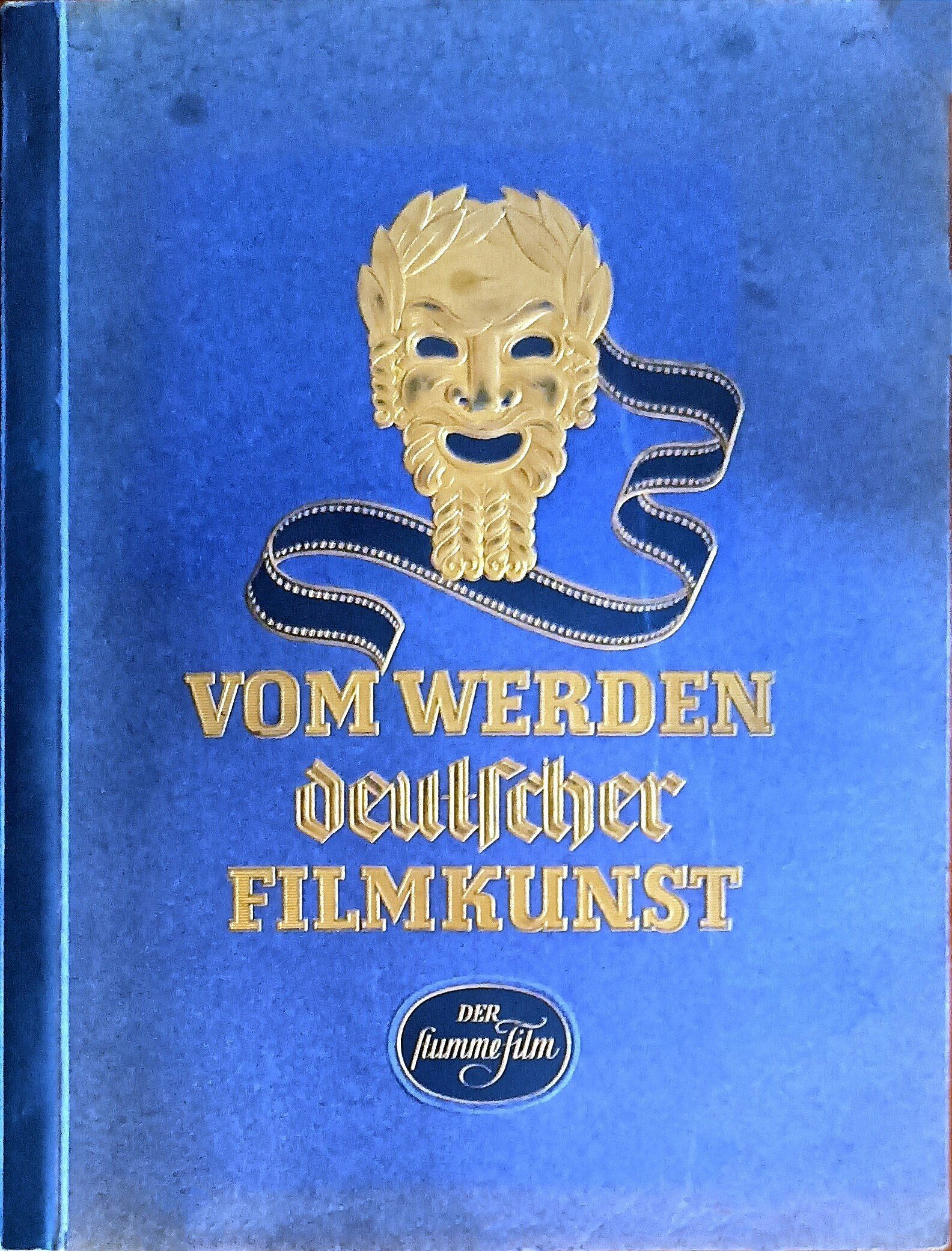
(personal collection)
THE DIRECTOR
Fritz Lang
Card n.5 Pag.1 ABC (August Batschari Cigarettes) MERCEDES FILM IMAGES FROM BEAUTIFUL FILMS FILM ALBUM 4
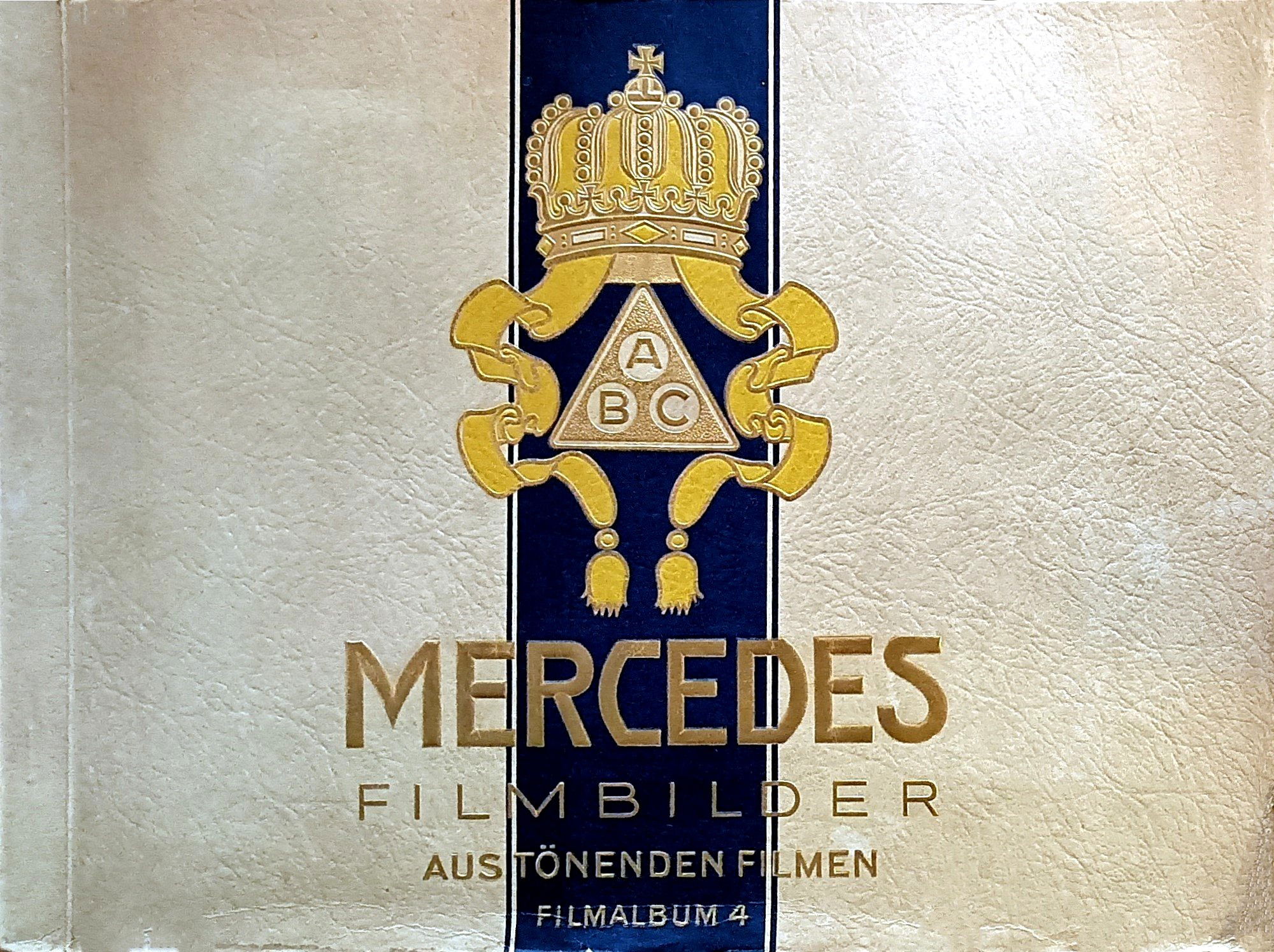
(personal collection)
Fritz Lang, born Friedrich Christian Anton Lang, was an Austrian-naturalized American director, screenwriter and producer, considered one of the masters of expressionist cinema and science fiction. Among his most famous films are Metropolis, M, The Woman in the Window and The Big Heat. Lang had an adventurous and troubled life, between the First World War, the rise of Nazism, exile in America and return to Europe. Lang influenced many later directors, such as Alfred Hitchcock, Jean-Luc Godard, Steven Spielberg, and Ridley Scott.
Lang was born on December 5, 1890 in Vienna, Austria, to a middle-class family. His father, Anton Lang, is a famous architect, while his mother, Paula Schlesinger, is Jewish. Lang did not follow in his father's footsteps, but became passionate about art and literature. He attended the Academy of Graphic Arts in Vienna and began working as a set designer and painter in various cabarets in the city. In 1913, he embarked on a long journey around the world, visiting Europe, Africa, Asia and America. During the journey, he earned his living by drawing comics for newspapers and painting postcards. He is also interested in cinema, which begins to spread as a form of popular entertainment.
In 1914, Lang returned to Austria on the occasion of the outbreak of the First World War. He voluntarily enlisted in the imperial army and fought on the Eastern and Balkan fronts. During the fighting, he was wounded several times and lost his right eye. During the period of convalescence, he began to write screenplays for the cinema, inspired by the adventure novels and feuilletons he read as a child. In 1919, Lang made his directorial debut with the film Half-Blood, an exotic drama set in India. The same year, he met Thea von Harbou, a German screenwriter and writer, with whom he married the following year. Von Harbou became Lang's main collaborator and muse, writing the scripts for almost all of his films until 1932.
Lang moved to Berlin, where he became one of the most representative figures of German expressionist cinema, an artistic movement that was characterized by the use of stylized sets, contrasting lights and shadows and psychological and social themes. Among his expressionist films, we remember The Spiders (1919-1920), a series of four episodes of exotic adventures, Dr. Mabuse (1922), a thriller about the exploits of a brilliant criminal, and the two films dedicated to the saga of the Nibelungs (1924), The Death of Siegfried and The Revenge of Crimilde, which take up the Germanic myth of Siegfried and Brunhilde. Lang's masterpiece, however, is Metropolis (1927), a science fiction film set in a dystopian future, in 2026, in which society is divided between a ruling class living in luxurious skyscrapers and a working class working in inhumane conditions in the city's underground. The film is a grandiose production, requiring 17 months of shooting, a budget of over 5 million Reichsmarks and the use of thousands of extras. The film makes use of innovative special effects, such as compositing, rhythmic editing, miniatures, animations and rotoscoping. The film also introduces the concept of anthropomorphic robots, with the famous scene of the transformation of the robot woman. Metropolis is a film of great visual and technical impact, but also of strong symbolic and social value, which expresses a critique of capitaltotalitarianism and the dehumanization of technology. The film is considered a model for much of modern science fiction cinema, having inspired films such as Blade Runner and Star Wars. In 1929 Fritz Lang made A Woman in the Moon, a silent science fiction film based on the novel by his wife Thea von Harbou, in which he tells of a space expedition in search of lunar gold.
In 1931, Lang made his first sound film, M, the Dusseldorf Monster, which tells the story of the hunt for a murderer of girls by the police and the underworld. The film is a masterpiece of suspense and psychological analysis, which makes the most of the potential of sound, such as the tune whistled by the killer and the voiceovers. The film stars Peter Lorre, who becomes famous for his role as a maniac. The film is also a denunciation of the violence and corruption of German society, which is about to fall under the Nazi regime.
In 1933, Lang made his last German film, The Testament of Dr. Mabuse, the sequel to the 1922 film, in which the criminal returns to sow terror with his diabolical plans. The film is banned by Nazi censorship, which sees in the character of Mabuse a metaphor for Hitler. Hitler himself, however, admired Lang's talent and proposed to him, through the minister of propaganda Joseph Goebbels, to become the head of the Reich's film industry. Lang, who has Jewish ancestry on his mother's side, accepts at first, but then refuses and leaves Germany, fearing for his life. Before leaving, he divorced his wife Thea von Harbou, who had joined Nazism.
Lang moved to Paris, where he made only one film, Liliom (1934), a fantastic comedy based on a play by Ferenc Molnár. In 1935, Lang traveled to the United States, where he obtained citizenship and began a new career in Hollywood. His first American film was Fury (1936), a social drama starring Spencer Tracy, which denounced lynching and summary justice. The film was produced by Joseph L. Mankiewicz, who became a friend and supporter of Lang.In
the 1940s, Lang made a series of anti-Nazi films, reflecting his political commitment and his experience as an exile. These include The Woman in the Portrait (1944), a psychological thriller starring Edward G. Robinson and Joan Bennett, Even the Executioners Die (1943), a resistance film written in collaboration with Bertolt Brecht, and The Ministry of Fear (1944), a spy film starring Ray Milland. Lang also devoted himself to the western genre, with films such as The Avenger of Jess the Bandit (1939), his first color film, and The Knights of the Northwest (1952), starring Robert Young and Randolph Scott.
In the fifties, Lang established himself as one of the masters of film noir, a genre that explored the themes of crime, violence, corruption and fatality. Among his noir films, we remember The Woman in the Window (1944) and Behind the Closed Door (1945), both with Edward G. Robinson and Joan Bennett, The Big Heat (1953), with Glenn Ford and Gloria Grahame, The Road of Violence (1954), with Robert Ryan and Ida Lupino, and The Woman Who Lived Twice (1958), with Henry Fonda and Vera Miles. Lang also tried his hand at other genres, such as musical comedy (You Are My Destiny, 1941, with Marlene Dietrich), melodrama (A Doll's House, 1943, with Joan Bennett), adventure films (The Pirates of Malaysia, 1952, with Stewart Granger and James Mason) and historical films (The Tiger of Eschnapur, 1959, and The Indian Sepulchre, 1959, both filmed in India). In 1956, Lang returned to Europe, where he made his last films. These include The Thousand and Second Nights (1959), a fantastic comedy starring Debra Paget and Oskar Werner, The Diabolical Dr. Mabuse (1960), the third and final installment in the criminal saga, and The Great Show (1963), a war film starring Hardy Krüger and Peter van Eyck. The director retired from cinema in 1964, due to health and eyesight problems. He died on August 2, 1976 in Beverly Hills, California, at the age of 85. He is buried in Forest Lawn Memorial Park in Glendale. Lang leaves behind an artistic and cultural legacy of great importance, having been one of the most innovative, influential and original directors in the history of cinema. Lang was able to express his often pessimistic and critical vision of the world through films of different genres and styles, which marked expressionist cinema, science fiction cinema, film noir and political cinema. Lang influenced many later directors, such as Alfred Hitchcock, Jean-Luc Godard, Steven Spielberg, and Ridley Scott, who recognized his contribution to film language and popular culture.
Close-up of Fritz Rasp for the film "The Woman in the Moon"
Card Posizione 1 pag.117 VOM WERDEN DEUTSCHER FILMKUNST DER STUMMEFILM
On the Moon. Scene from the film "Woman in the Moon" with Willy Fritsch, Gerda Maurus and Gustl Stark-Gstettenbaur
Card Posizione 1 pag.97 VOM WERDEN DEUTSCHER FILMKUNST DER STUMMEFILM
Scene from the film Dr. Mabuse (Rudolf Klein-Rogge) who prints counterfeit money, has the counterfeit banknotes sorted by blind people who cannot betray him.
Card Posizione 1 pag.59 VOM WERDEN DEUTSCHER FILMKUNST DER STUMMEFILM
The artificial forest of the studio in the film "The Nibelungs". Paul Richter as Siegfried.
Card Posizione 1 pag.106 ON THE DEVELOPMENT OF GERMAN FILM ART THE SILENT FILM
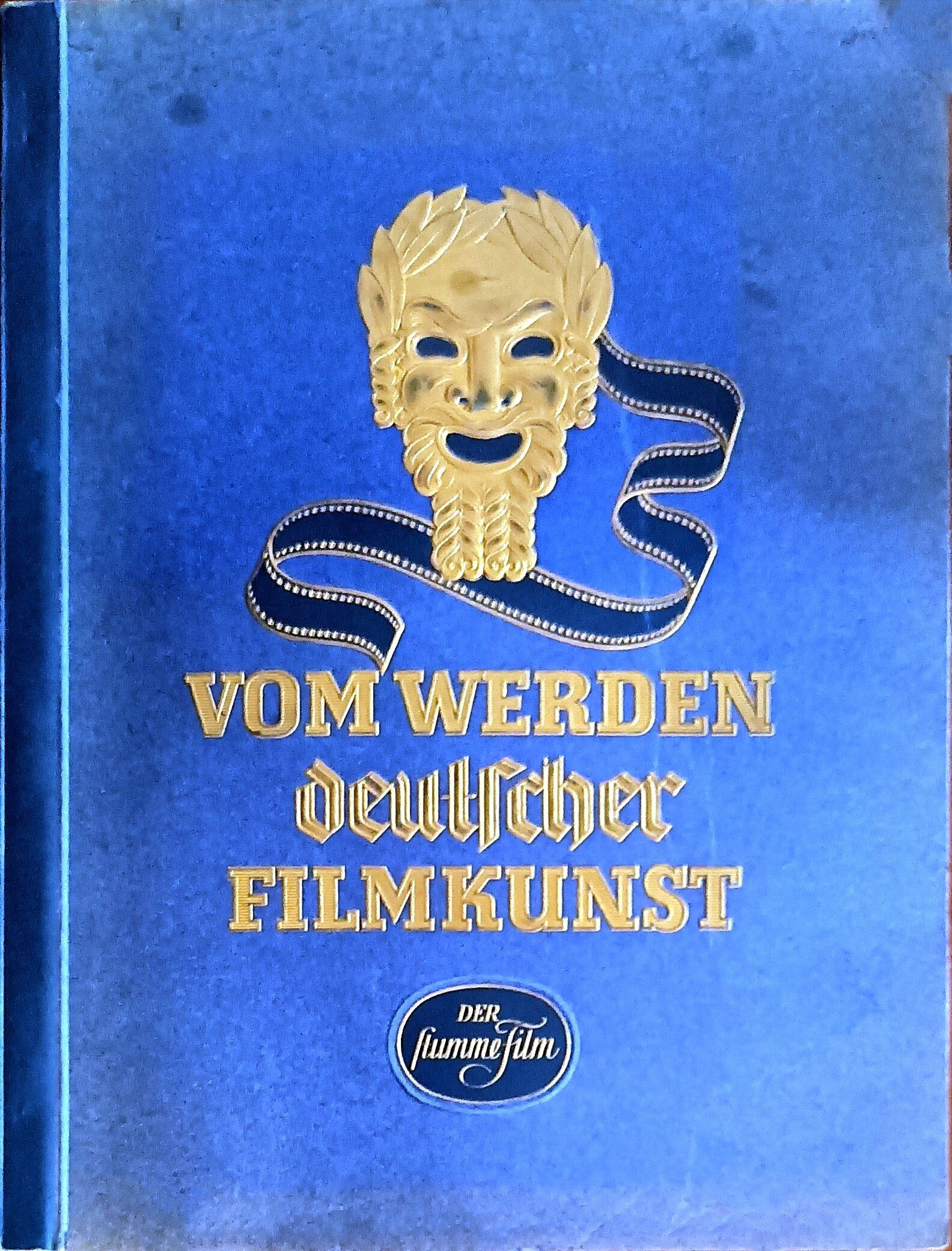
(personal collection)
THE CAST of METROPOLIS:
Alfred Abel
Card Position 6 pag.35 SALEM GOLD-FILM-BILDER ALBUM2

(personal collection)
Alfred Abel was born in Leipzig on March 12, 1879 into a family of merchants. Before turning to acting, he studied forestry, gardening, economics and artistic drawing. He made his debut as a stage actor in Switzerland and then moved to Berlin, where he worked with the famous director Max Reinhardt. In 1913, he entered the world of cinema thanks to the actress Asta Nielsen, who chose him for her film Venetian Nights. Since then, he appeared in over 140 films between 1913 and 1937, collaborating with directors such as Ernst Lubitsch, F. W. Murnau and Richard Oswald. He often played characters of authority or nobility, showing a great ability to express the psychological tensions of his roles with sober and refined expressions. His most famous role was that of Joh Fredersen, the tyrannical master of the metropolis, in Fritz Lang's masterpiece Metropolis (1927). Abel was also the director and producer of several films, including Narcosi (1929), a work influenced by the expressionist style. He died in Berlin on December 12, 1937, due to a heart attack.
Gustav Fröhlich
Cards Position 3 and 4 pag. 10 SALEM GOLD-FILM-BILDER ALBUM 2

(personal collection)
Gustav Fröhlich was a German actor and director, born on March 21, 1902 in Hanover and died on December 22, 1987 in Lugano. He is most famous for playing the role of Freder Fredersen in Fritz Lang's film Metropolis in 1927. He has starred in many other films, both silent and sound, ranging from the dramatic to the musical and comic genres. During the Nazi period, he directed a few films and continued to work as an actor, but did not participate in propaganda films. After the war, he reduced his film appearances and retired permanently in 1956. He was married twice: the first to the Hungarian singer and actress Gitta Alpár, with whom he had a daughter, and the second to Maria Hajek, until her death.
Rudolf Klein-Rogge
Card n.205 pag. 21 SAMEM FILM IMAGES

(personal collection)
Rudolf Klein-Rogge was a German actor born in Cologne in 1885 under the name of Friedrich Rudolf Klein. He graduated in history and literature and studied acting with Hans Siebert, a famous actor from Vienna. He made his debut in the theater in 1909 and in the cinema in 1912. In 1914 he married Thea von Harbou, a writer and screenwriter who collaborated with Fritz Lang, the director who made him famous all over the world. Klein-Rogge played sinister and memorable roles in films such as Dr. Mabuse, The Nibelungs, Metropolis, The Woman in the Moon and M: The Düsseldorf Monster. In 1921 von Harbou left him for Lang and Klein-Rogge moved to France, where he participated in important films such as Abel Gance's Napoleon and Georg Wilhelm Pabst's L'Atlantis. With the advent of Nazism, he retired from the film scene and died in Austria in 1955.
Fritz Rasp
Card Position 5 pag.17 SALEM GOLD-FILM-BILDER ALBUM2

(personal collection)
Fritz Rasp was a German actor who starred in more than 100 films between 1916 and 1976. He was known for often playing villain or ambiguous character roles in German cinema of the 20s and 30s. Some of his most famous films are Metropolis (1927), where he played the mysterious "Der Schmale" (The Thin Man), The Threepenny Opera (1931), where he played the con man "J. J. Peachum", and The Diary of a Lost Woman (1929), where he seduced the protagonist Meinert.
Rasp was born in Bayreuth, the thirteenth child of a surveyor. He studied acting in Munich and made his stage debut in 1909. He has worked with directors such as Ernst Lubitsch, Fritz Lang, Georg Wilhelm Pabst and Bertolt Brecht, and with actors such as Albert Bassermann, Joseph Schildkraut and Werner Krauss.
Rasp died of cancer at the age of 85 in Gräfelfing, where he is also buried. His son Andreas Rasp was a teacher and poet, his daughter Renate Rasp a writer associated with Gruppo 47.
Theodor Loos
Card Position 4 pag. 20 BULGARIA-GOLD-FILM-BILDER
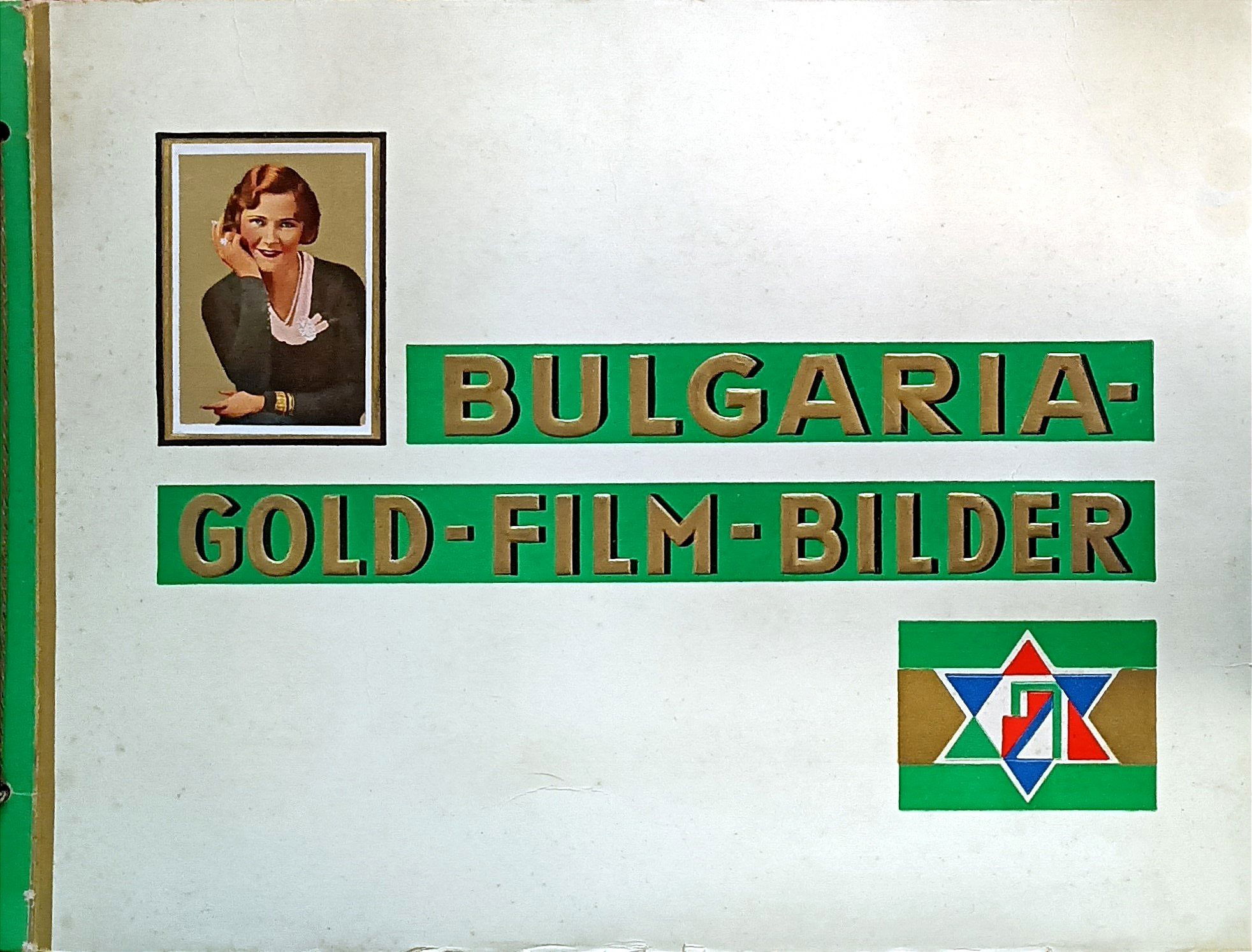
(personal collection)
Theodor Loos was a German actor born on May 18, 1883 in Zwingenberg, the son of a watchmaker and musical instrument maker. He has worked as a stage and film actor, starring in more than 170 films, especially in the silent film period. He is known for playing numerous roles in Fritz Lang's films, including Professor Georgy in Metropolis (1927) and Inspector Lohmann in M: The Düsseldorf Monster (1931). During the Nazi regime, Loos was a member of the advisory council of the president of the Reichsfilmkammer, the body that regulated the German film industry. After the end of the war, Loos returned to the theater, joining the Staatstheater in Stuttgart. His two sons both died at the front during World War II. Loos died in Stuttgart on June 27, 1954, at the age of 71.
Heinrich George
Card Position 2 pag. 10 BULGARIA-GOLD-FILM-BILDER
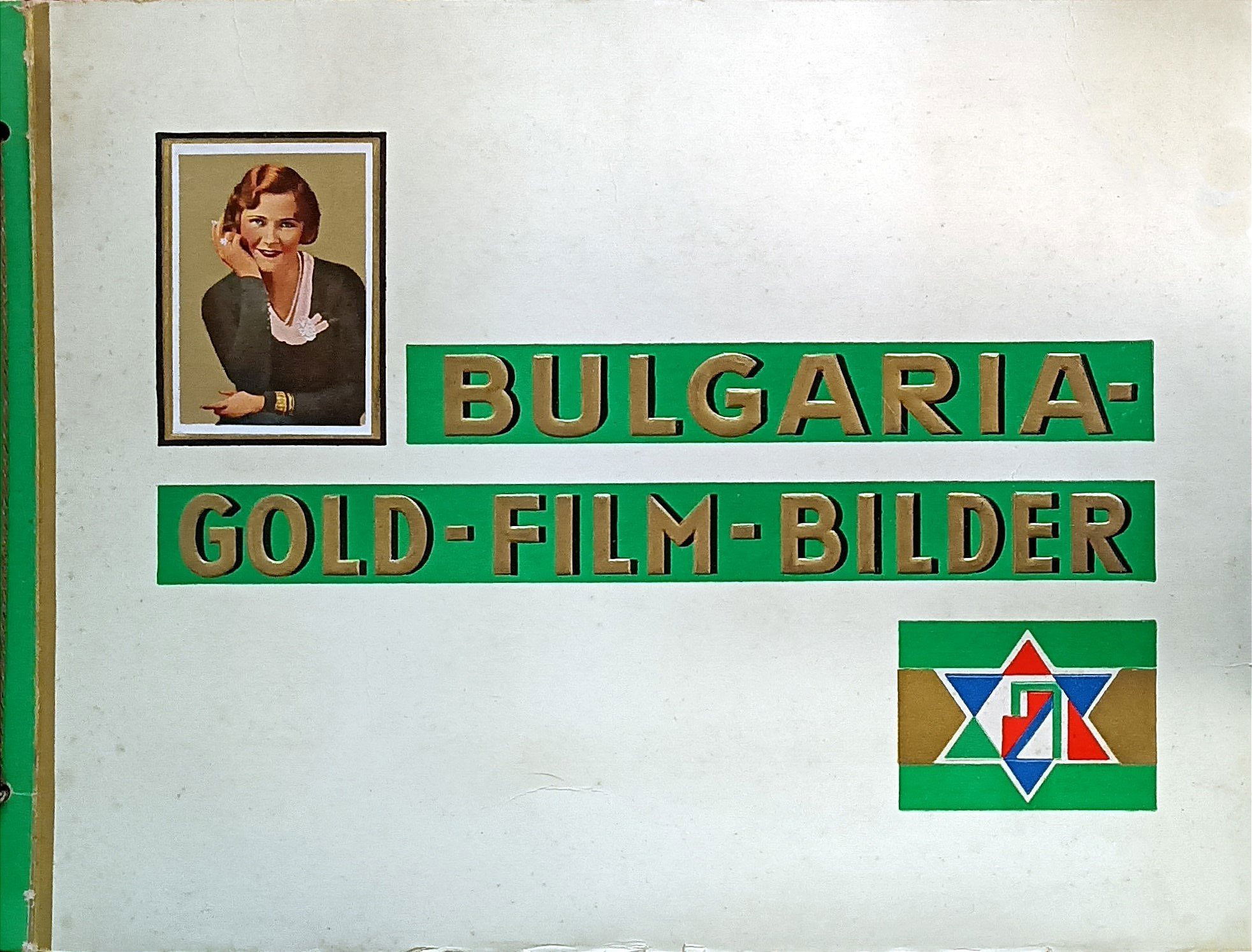
(personal collection)
Heinrich George, born Georg August Friedrich Hermann Schulz, was a German stage and film actor, active between 1912 and 1945. He landed some of his first big-screen roles in Fritz Lang's films Metropolis and Berlin Alexanderplatz. He has also worked with directors such as Richard Oswald, Wilhelm Dieterle, Leopold Jessner and Erwin Piscator. Before the Nazis took power, he had been an active member of the German Communist Party and as a result was not allowed to continue working and was placed on a list of "undesirable" actors. In the end, however, he came to terms with the new regime and during the Second World War he starred in a number of propaganda films such as Süss the Jew and The Citadel of Heroes. Heinrich George was captured by the Russians in May 1945, when Soviet troops occupied Berlin. George was in his villa in Grunewald, where he had hosted some refugees and wounded. The Russians arrested him on charges of being a Nazi collaborator and took him to the Sachsenhausen concentration camp. There he suffered torture and ill-treatment, until he died of starvation in September 1946.
Brigitte Helm
Cards Position 3 and 5 pag. 1 BUNTE FILM BILDER ALBUM 7
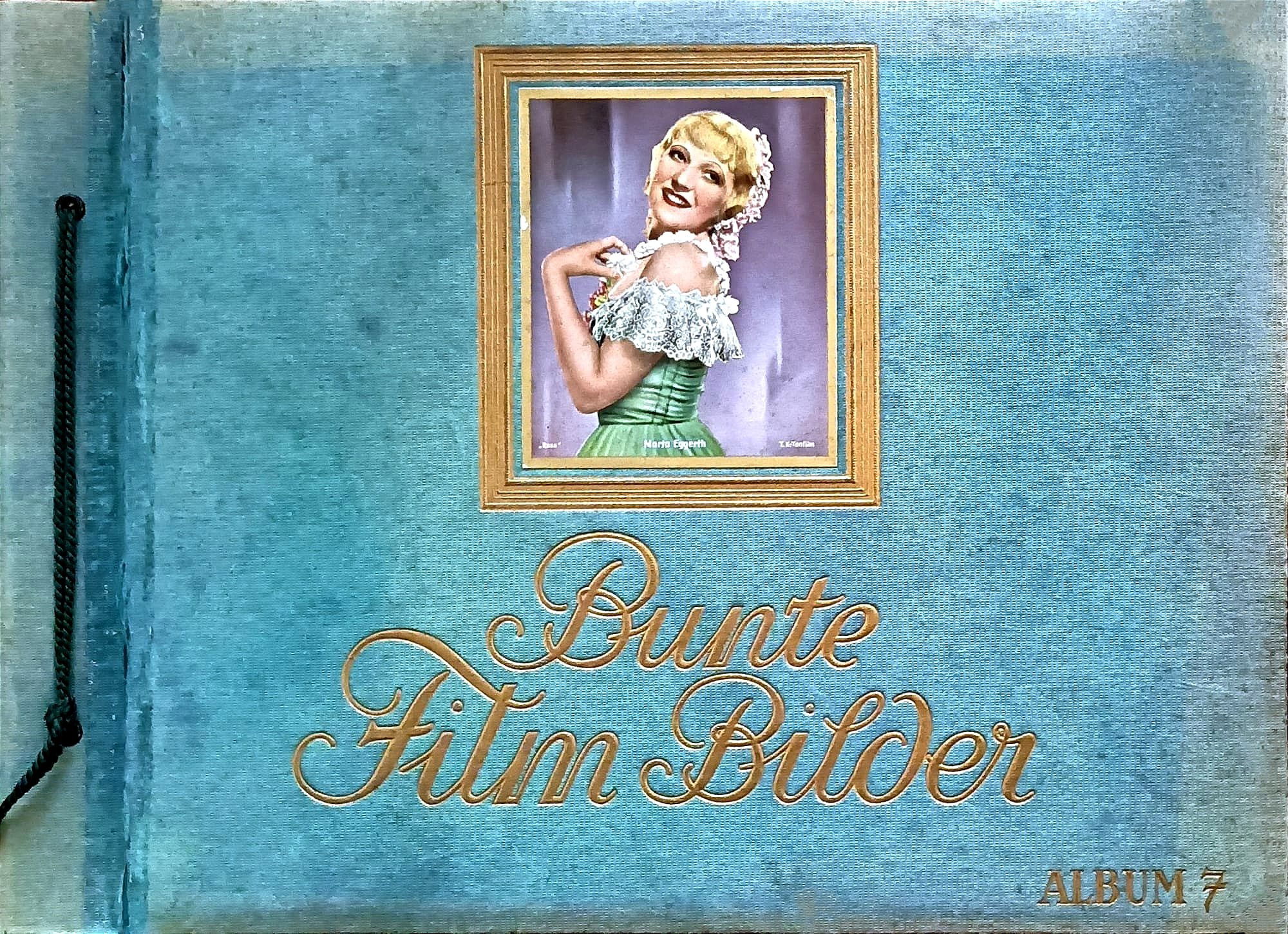
(personal collection)
Born in Berlin in 1908, Helm began her film career at the age of 19, after being noticed by Lang while working as a secretary in UFA studios. He starred in about thirty films, including The Ship of the Seven Sins (1928), Money (1928), Alraune, the Daughter of Evil (1930), Glory (1931), Atlantis (1932) and The Ideal Husband (1935).
Helm was considered for the lead role in The Blue Angel (1930), but turned it down and the part went to Marlene Dietrich. She worked with directors such as G.W. Pabst, Marcel L'Herbier and Richard Oswald, and distinguished herself for her beauty and talent in portraying femme fatale characters.
In 1935 she retired from the stage, in disagreement with the Nazi regime, and moved to Switzerland with her second husband, the industrialist Hugo Kunheim, with whom she had four children. In 1933, he also recorded a single, Fidèle/Prenez garde, Messieurs, with Eric Harden and his orchestra.
Brigitte Helm died in 1996 in Ascona, Switzerland, at the age of 88. In his life, he always refused to give interviews about his film career. She is considered an icon of German silent cinema and one of the first divas in the history of cinema.
Maria and the Maschinenmensch in Metropolis
Brigitte Helm
Brigitte Helm is the German actress who plays both Maria and the Maschinenmensch in Metropolis. Helm demonstrates a great ability to change expression and attitude depending on the character. The choice to use the same actress for the two roles is significant, because it emphasizes the contrast between purity and corruption, between life and death, between the human and the mechanical. Helm was chosen by Lang after auditioning among thousands of candidates. Helm suffered many difficulties during filming, due to the robot's metal costume, which caused her injuries and burns. Helm starred in about thirty films, including The Ship of the Seven Sins, Money, Alraune, the Daughter of Evil, Gloria, Atlantis and The Ideal Husband. In 1935, he retired from the stage and moved to Switzerland, where he lived until his death in 1996. Helm always refused to give interviews about his film career.
Maria
Card Posizione 1 pag.130 VOM WERDEN DEUTSCHER FILMKUNST DER STUMMEFILM
(personal collection)
Mary is a young woman who lives among the workers and guides them with her pacifist and religious preaching. She is the only one who believes in the possibility of mediation between the two social classes, through the "mediator of the heart". Maria is in love with Freder, the son of the master of the city, Fredersen, and helps him discover the reality of the workers. Kidnapped by the scientist Rotwang, who uses her as a model to create the Maschinenmensch. The woman manages to escape and save the workers and their children from the catastrophe caused by the robot. Mary is the symbol of hope and love between the two worlds of the city.
Il machine man
Card Posizione 2 pag.96 ON THE DEVELOPMENT OF GERMAN FILM ART THE SILENT FILM
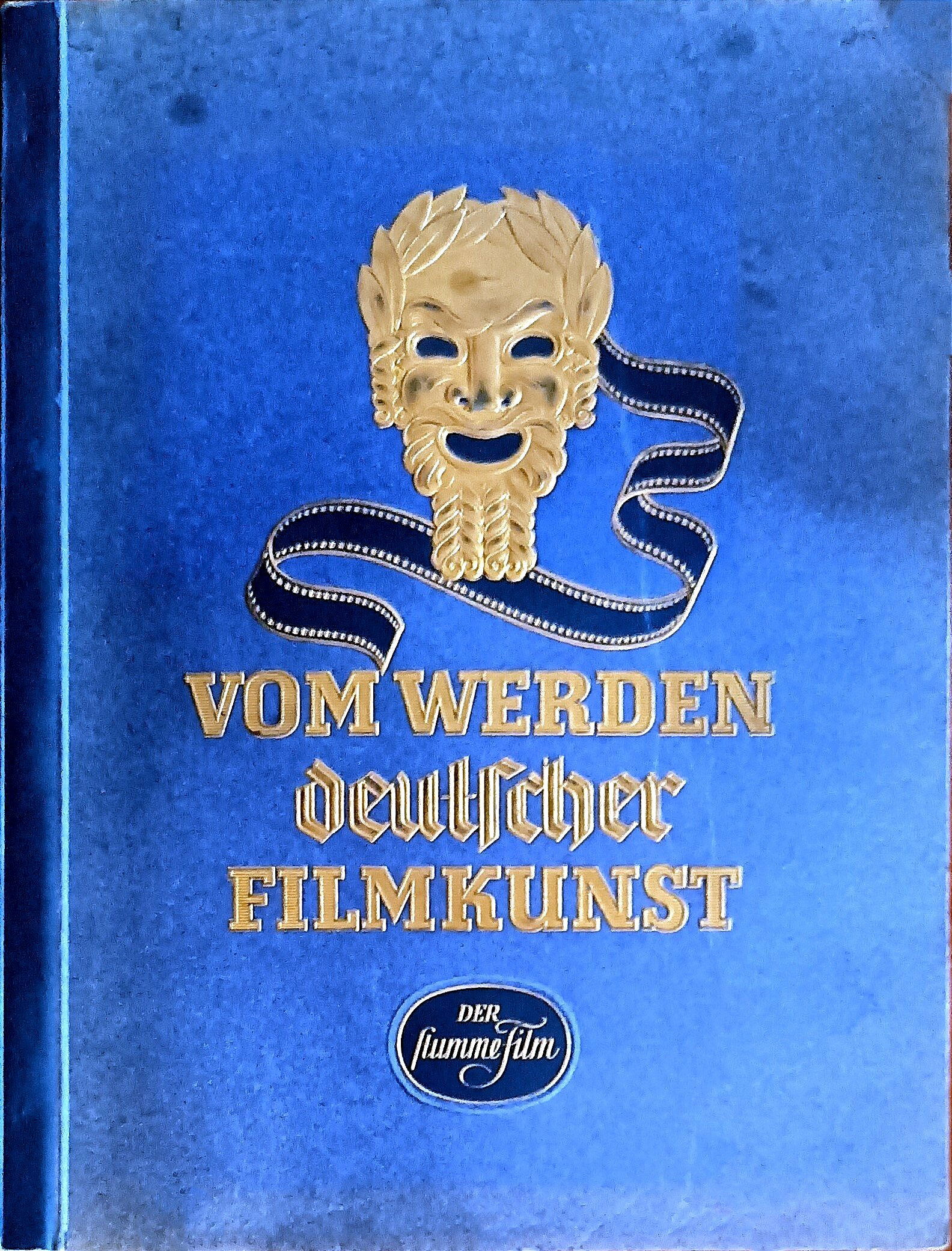
(personal collection)
The Maschinenmensch, or robot-woman, is the robot created by Rotwang, who models it on the likeness of Maria to use it as an instrument of revenge against Fredersen. The robot is programmed to sow chaos and violence among the workers, pushing them to rebel and destroy the machines that exploit them. The Maschinenmensch also seduces Freder, making him believe that it is Maria, and performs a sensual dance in the Yoshiwara club, where he attracts the attention of many powerful men. The Maschinenmensch is the antithesis of Mary, because it represents the falsehood and hatred that divide the two worlds of the city. On the card ALFRED ABEL, RUDOLF KLEIN-ROGGE and the artificial woman played by BRIGITTE HELM in "METROPOLIS".
GERMAN MOVIE POSTER
The Man Who Laughs (1928)
THE LAUGHING MAN AND THE BIRTH OF THE JOKER
The Laughing Man is a 1928 silent film directed by Paul Leni, based on the novel of the same name by Victor Hugo. The film is set in late eighteenth-century London and tells the story of Gwynplaine, a young orphan with a scarred face that gives him a perpetual grin. Gwynplaine performs as a freak, traveling from fair to fair with his faithful companion Ursus, the little Goddess (who is blind) and the dog Homo. When Gwynplaine becomes an adult, he discovers that he is actually the son of an aristocrat.
The Laughing Man is considered one of the masterpieces of German expressionist cinema, an artistic movement that was characterized by the use of dramatic light and shadow, distorted and angular sets, and dark and disturbing themes. The film also reflects the climate of social and economic crisis in Germany in the twenties, marked by defeat in the First World War, hyperinflation and unemployment.
The figure of Gwynplaine with his desperate grin and suffering profoundly influenced the creation of the character of Joker, Batman's famous enemy. The Joker debuted in 1940 in the first volume of the Batman comic series published by DC Comics. Since then, he has become one of the icons with the most film and television adaptations, but whoever has been called to play him has created his own very personal version of the character. Think of Jack Nicholson in Tim Burton's film, Heath Ledger in The Dark Knight, up to Joaquin Phoenix's latest acclaimed Joker.
Todd Phillips' Joker, in particular, has many parallels with the man who laughs. The cuts on Gwynplaine's lips become Arthur Fleck's uncontrolled laughter syndrome. Both see the only way out of their marginalization to make people laugh, they are the outcasts of a society that mocks and denigrates them. Both, however, will each rebel in their own way, like any self-respecting Joker.
Leni's film was not the only source of inspiration for the character of Joker. Throughout his history, the Joker has had other influences, such as the character of Conrad Veidt in the film The Cabinet of Dr. Caligari (1920), the evil jester in Batman: The Killing Joke (1988), serial killer John Wayne Gacy (1978–1994), and the failed comedian played by Jerry Lewis in King for a Night (1982).
THE DIRECTOR
Paul Leni
Paul Leni was one of the greatest exponents of German expressionist cinema, a movement that was characterized by the use of distorted sets, dramatic lights and shadows, unusual camera angles and psychological and fantastic themes. Leni began his career as a painter and theatrical set designer, collaborating with directors such as Joe May and Ernst Lubitsch. He made his directorial debut in 1916 with Das Tagebuch des Dr. Hart, an episodic film that told the story of a doctor and his patients. Among his best-known films in Germany are The Service Staircase (1921), a story of love and betrayal set in an apartment building, and The Cabinet of Wax Figures (1924), an episodic film that mixed horror, adventure and comedy, starring Emil Jannings, Conrad Veidt and Werner Krauss. Leni stood out for her ability to create atmospheric atmospheres and take advantage of special effects, such as parallel editing, superimpositions, fades and animations. In 1927, Leni moved to Hollywood, where he was hired by Universal Studios to direct horror and thriller films. His first American film was The Castle of Ghosts (1927), an adaptation of a play by John Willard, which was a great success and influenced the haunted house film genre. This was followed by The Chinese Parrot (1927), a crime film based on a novel by Earl Derr Biggers, and The Man Who Laughs (1928), a historical melodrama based on a novel by Victor Hugo, starring Conrad Veidt as a nobleman disfigured by a permanent grin. His last film was The Cursed Theater (1929), a detective story set in an abandoned theater, where the show in which a mysterious murder had taken place is repeated. Leni died the same year, due to sepsis, leaving her project to adapt Mary Shelley's Frankenstein unfinished. Paul Leni is considered one of the forerunners of horror and fantasy cinema, and has influenced directors such as James Whale, Alfred Hitchcock, Tim Burton and Guillermo del Toro.
IL CAST di The Man Who Laughs:
Conrad Veidt
Card n.54 For OUR MOVIE FAVORITES THE ORAMI ALBUM
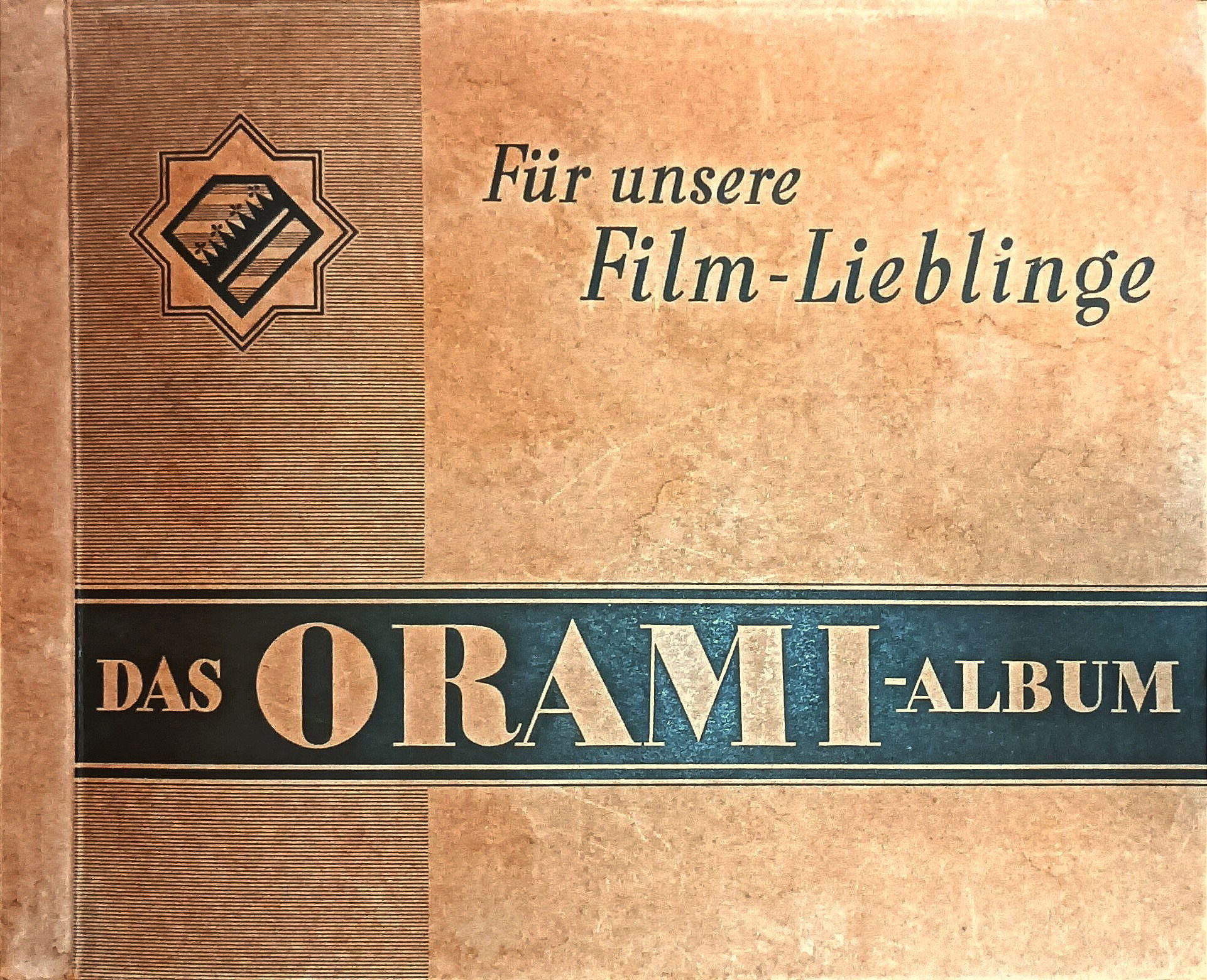
(personal collection)
Conrad Veidt, born in Berlin in 1893 to parents of Jewish origin, was one of the greatest actors of German silent cinema. He was passionate about the theater as a boy and attended the school of Max Reinhardt, one of the most influential directors of the time. He first took the stage in 1914 and made his big screen debut that same year. He collaborated with the most important German filmmakers, such as Robert Wiene, Fritz Lang and F.W. Murnau. His best-known role was that of Cesare, the sleepwalker manipulated by Dr. Caligari to kill, in the film The Cabinet of Dr. Caligari (1920), a masterpiece of expressionist cinema. The film stands out for its anguished and deformed scenography, which expresses the state of mind of the characters and creates an atmosphere of terror. Conrad Veidt specialized in evil and tormented characters, such as the vampire Nosferatu, the villain Mabuse and the false prophet Tartuffe. He also acted in France and Sweden, where he participated in the film version of The Count of Monte Cristo. In 1933, after the Nazis came to power, Conrad Veidt left Germany and settled in England, where he acquired British citizenship. Here he continued his career in successful films, such as The Thief of Baghdad (1940), in which he played the evil grand vizier Jaffar. In 1941, he moved to the United States, where he became an American citizen. Here he played antagonistic roles, such as Major Strasser in Casablanca (1942), one of the most famous films in the history of cinema. He died in 1943, of a heart attack, while playing golf. His last film was Above Suspicion (1943), in which he played the role of a Nazi officer. Conrad Veidt was an actor of great charm and skill, who gave life to complex and nuanced characters. He was also a man of great honesty and courage, who opposed the Nazi regime and who supported the cause of the Jews and the Allies. He was also a benefactor, who donated much of his earnings to humanitarian and aid organizations. He was admired and appreciated by colleagues and friends, such as director Michael Curtiz, who said of him: "He was a wonderful man and a great actor. I will never forget it".
Mary Philbin
Card n.5 CINEMA STUDIES issued by NICOLAS SARONY & C°
(personal collection)
Mary Philbin was an American actress who starred in several silent films in the twenties. She is famous for her role as Christine Daaé in the 1925 film The Phantom of the Opera opposite Lon Chaney, and for her role as Dea in The Man Who Laughs in 1928. Both films saw her in the part of "Beauty" in events traced on the archetype of Beauty and the Beast.
Born into a middle-class Catholic family of Irish descent, she began her acting career after winning a beauty pageant sponsored by Universal Pictures. She made her debut on the big screen in 1921 and during the twenties became a successful actress, taking part in several prominent films, including The Law of Love in 1928, where she was directed by D. W. Griffith. In 1922, she won the first edition of the WAMPAS Baby Stars award, an advertising initiative promoted in the United States by the Western Association of Motion Picture Advertisers, which awarded thirteen girls each year judged to be ready to start a brilliant career in cinema.
However, like many other acclaimed stars of the silent era, Philbin was unable to continue her career beyond the advent of sound in the early 1930s. Before retiring, however, she played some spoken roles and above all she dubbed herself for the sound re-edition of The Phantom of the Opera. After retiring from the scene, she dedicated her life to taking care of her elderly parents. In 1927 she was engaged to Universal executive Paul Kohner, but broke off the engagement due to parental opposition, as she was Catholic while Kohner was an observant Jew of Czech origin. He never married and rarely appeared in public. One of his few public appearances was in his last years in Los Angeles at the premiere of Andrew Lloyd Webber's musical The Phantom of the Opera. Mary Philbin died of pneumonia in 1993 at the age of 90 and was buried at Calvary Cemetery in Los Angeles.
Olga Baclanova
Card n.16 CINEMA STUDIES issued by NICOLAS SARONY & C°
(personal collection)
Olga Baclanova was a Russian actress who starred in several silent and sound films in the United States, between the twenties and fifties. She is famous for her role as Cleopatra in the 1932 horror film Freaks, directed by Tod Browning, where she played an evil trapeze artist who attempted to kill her dwarf groom to inherit her fortune. Another important role she had was that of Duchess Josiana in the 1928 film The Man Who Laughs, where she was the "Beauty" in a story inspired by Beauty and the Beast. Josiana was a capricious and fickle noblewoman who was to marry Gwynplaine, the film's protagonist, by order of Queen Anne. Josiana was attracted to Gwynplaine's distorting smile, but despised him for his humble origin. In the film, Josiana tried to seduce Gwynplaine, but was rejected by him, who was in love with Dea, a blind girl who had always accepted him. Josiana was also involved in a conspiracy against the queen, orchestrated by her lover Lord Dirry-Moir.
Baclanova was born in Moscow in 1893 into a family of artists. He studied acting at the Moscow Art Theater and appeared in several Russian films before emigrating to the United States in 1925 with a theater company. He made his Hollywood debut in 1927 in the film The Dove and since then has appeared in numerous successful films, such as The Docks of New York, The Wolf of Wall Street and Downstairs. Baclanova married three times and had two children. He retired from the stage in 1955 and lived in Switzerland until his death in 1974.
AMERICAN MOVIE POSTER
